WIDE SKY
THE RANGI RURU BIANNUAL MAGAZINE
OUR WONDERFUL TE KORAHA
Celebrating 100 years on the Hewitts Road campus

THE CATCH UP Alumnae stories since leaving the hallowed grounds
MOVING TOWARDS A SUSTAINABLE FUTURE Embracing the good habits of the past and the technology of the future
WINTER EDITION • 2023
Wide Sky is a biannual magazine for the wider Rangi Ruru Girls’ School community to celebrate the voices of students, teachers, leaders and other members of the Rangi Ruru whānau.
DESIGNER
Emma Smith
Adapt Creative
EDITOR
Bridget Woodham
b.woodham@rangiruru.school.nz
PROOFREADING
Red Pencil Proofreading and Editing
PHOTOGRAPHY
Melissa Cleine
Rangi Ruru Teaching and Administration Staff

ARCHIVIST
Johnann Williams
PRINTER Blueprint
RANGI RURU GIRLS’ SCHOOL
59 Hewitts Road
Christchurch 8014 New Zealand
rangiruru.school.nz
facebook.com/rangiruru
Instagram.com/rangiruru
linkedin.com/rangi-ruru
COVER IMAGE
Molly Chisholm (Year 9), fifth generation Rangi Ruru family. See her family’s story on page 66.
SKY
Winter 2023
WIDE EDITOR’S NOTE
This edition of Wide Sky not only celebrates 100 years since we moved to our current site, 100 years since the Old Girls’ Association was formed and 100 years since the first magazine was published, but also serves as a rich tapestry, reminding us of the collective spirit and values that define our school and make Rangi Ruru Girls’ School so special. Through creating this commemorative edition, we are reminded that our shared history and the traditions formed are what bind us together. They are the foundations from which we grow and the key to shaping our future.
In the following pages, you’ll be transported back to Rangi Ruru’s humble beginnings and the vision of a young woman, not yet 21, with a determination to provide an education to girls, at a time when educating girls was undervalued. The stories serve as a window into our shared history, shedding light on the remarkable journey that has led us to where we are now. I don’t think even the pioneering and independent Miss Helen Gibson, could have foreseen what the future would hold and that by 2023 thousands of women would have arrived through the gates, embraced their education and left the hallowed grounds as confident, caring and curious citizens empowered to pursue their dreams. I think she’d be rather proud to see what has been achieved in 134 years. Yet, this edition is not solely a time capsule of the past. It is also a compass pointing towards the future. Through the voices of our current students and staff, we glimpse the exciting possibilities that lie ahead. We share their aspirations, dreams and innovative endeavours that will shape Rangi Ruru’s next chapter.
It is also wonderful to welcome the Rangi Ruru Old Girls’ Association (RROGA) back into the fold. I am grateful to the RROGA committee for their foresight and for sharing content which has ultimately enriched our united school magazine. I would like to extend my heartfelt gratitude to everyone who contributed to this publication, from the writers and photographers to the editorial team. Special thanks go to Johnann Williams for the hours spent delving into the archives and without whom this publication would not have been possible.
I truly hope you relish this trip down memory lane as much as we enjoyed pulling it together for you.
Words by Bridget Woodham EDITOR AND COMMUNICATIONS MANAGER



CONTENTS contents 42 12 22 4 A Place to Call Home DR SANDRA HASTIE 5 History Repeats ARABELLA ACLAND 6 A Remarkable Twist of Destiny AMANDA DICK 8 Mana Wahine Principals of Rangi Ruru JOHNANN WILLIAMS 10 Our Wonderful Te Koraha BRIDGET WOODHAM 12 Moving Towards a Sustainable Future KATE RIVERS 14 An Ongoing Sense of Social Responsibility TANIA MORGAN 16 From Where We’ve Come Compiled by JOHNANN WILLIAMS & BRIDGET WOODHAM 20 Rangi Ruru Art Collection JULIET COLLINS 22 A Proud Tradition of Opportunities MANDY ANDERSON 24 Years of Challenge JOHNANN WILLIAMS 26 Boarding Stories SALLY FAIL & SARAH GRIFFITHS 28 Secrets to Longevity FELICITY WILLIAMS 30 From Cottages to Suites JANET KINGSBURY 32 The Archivist, Guardian of our History JOHNANN WILLIAMS 34 RRGS Event Highlights 2023 IN PHOTOS 36 The Rangi Ruru Cultural Narrative STU MUNRO 38 Beyond the School Gate BRIDGET WOODHAM 40 RROGA Event Highlights 2022 & 2023 IN PHOTOS 42 The Catch Up CHARLOTTE GRAY & ALUMNAE 46 Traditions that Bind Us Together KYLEIGH LYTH 48 The Importance of Critical Thinking HAYLEY KNIGHT 50 Something in the Water BRIDGET WOODHAM 52 Exploring Our Religious Past JOHNANN WILLIAMS 54 Raising the Curtain PETER RUTHERFORD 56 Up and Down the Stairs FELICITY WILLIAMS 58 RROGA Update FELICITY WILLIAMS 60 What Does the Future Look Like? A COLLECTION OF STUDENT VOICES 62 Honouring a Century of School Magazine Excellence BRIDGET WOODHAM 64 Family Connections RROGA 66 Empowering Generations BRIDGET WOODHAM WIDE SKY WINTER 2023 3
TO CALL HOME place A
This Wide Sky edition is centred around the celebration that 100 years ago in August, the Gibson family moved onto the current site in Hewitts Road.
Established in 1889, Rangi Ruru Girls’ School had been located on Webb Street where it had been since 1891 and Papanui Road for two years prior to that.
The Hewitts Road property, which at the time was owned by the Rhodes family, appealed to the Gibson sisters who had been looking for somewhere with space for their school to expand. The story is told that when a Webb Street neighbour phoned to complain that girls were over the fence and up her chestnut tree – again, the sisters knew they must find something more spacious. In 1923 a house came on the market, large, beautiful, serenely placed in lawns, gardens, and fields, and only a short distance along Merivale Lane. Te Koraha, which translated means “The Wilderness” was a stately home a little older than Rangi Ruru. The Gibson sisters were visionary, and they could see that with minor alterations the house could take perhaps as many as 40 boarders, as well as the sisters, a matron and two domestic staff to help. The solidly built brick stables, coach house and coachman’s flat could readily be converted to classrooms. The grounds were ideal – lovely gardens which they felt could teach the girls to appreciate beauty and plenty of room for sports.
It was, however, also expensive, and the decision to move cost Miss Helen Gibson and her sisters many sleepless nights. In May 1923 the contract between Captain ATG Rhodes and four Miss Gibsons, Helen, Ethel, Ruth and Winifred, was signed, the move took place in August and in 1924 Rangi Ruru started the school year with 216 students.
Over the years the site at Rangi Ruru has seen many changes, with the earthquakes of 2011 having left the site severely damaged. The Board at the time worked hard with the insurance company and put careful thought into the redesign of our campus; one that today celebrates the school’s history with the restoration of our heritage buildings, Te Koraha and St Andrew’s Church, as well as the new buildings such as Atawhai, our sport and multipurpose centre. Our history is a taonga – a precious gift and one to be known and celebrated.
Inā kei te mohio koe ko wai koe, I anga mai koe I hea, kei te mohio koe, Kei te anga atu ki hea
“If you know who you are and where you are from, then you will know where you are going.”
Words by Dr Sandra Hastie PRINCIPAL


WIDE SKY WINTER 2023 4
PRINCIPAL
REPEATS history
Over the past 100 years, we have experienced a significant amount of change, and whilst change is inevitable, one thing that has stayed the same is Rangi Ruru being based at Hewitts Road.
It is a special feeling knowing that I have played a small part in such a long-lasting legacy. It’s only in understanding history that we learn to better appreciate the present, creating a sense of belonging and legacy.
Recently the Rangi Ruru rowing squad took part in the Aon Maadi Regatta where our U18 eight won the Levin Jubilee Cup, whilst also making history winning the cup and taking out second place with our number two boat. Whilst it couldn’t have been done without the coaches and supporters, I believe one of the most significant factors that helped was thinking of all those who had rowed at Rangi Ruru before us.
As we were coming down the course in our A final, our coxswain said the words “for the girls who rowed before you”, reminding us that we are part of a legacy, something that is much bigger than ourselves. St Bede’s also had a win that day. The first time that both St Bede’s College and Rangi Ruru came first in the eights race was in 1991. Back then, both crews took a photo with the cup, which we then recreated 32 years later.
The Rangi Ruru history is unique and special to each and every one of us. Personally, I think it’s about making those who have gone before me proud and inspiring future generations of Rangi Ruru students. As we look to the future, we can feel excited about the changes ahead and be curious about how we will create our own piece of history.
Words by Arabella Acland 2023 HEAD OF SCHOOL


OF SCHOOL
HEAD
“ WIDE SKY WINTER 2023 5
It’s only in understanding history that we learn to better appreciate the present, creating a sense of belonging and legacy.
A TWIST OF DESTINY
Kia ora koutou. My name is Amanda Dick and as an Old Girl (1986–1992) and after serving eight years on the Old Girls’ Committee, I was deeply honoured to assume the role of President earlier this year. I look forward to embarking on exciting new ventures alongside the school, whilst also upholding the proud traditions of the past.

Acentury ago, the Rangi Ruru Old Girls’ Association (RROGA) came into existence, marking the beginning of a rich legacy. Coinciding with this momentous occasion, the school proudly
published its inaugural magazine, updating interested parties about the happenings around school as well as sharing stories and accomplishments of its cherished graduates.
Years later RROGA would find their own voice and create an independent publication, a testament to their shared experiences and enduring connection. This magazine became a platform to capture the collective spirit of the alumnae and celebrate their diverse achievements. However, as fate would have it, a remarkable twist of destiny has unfolded a century later and the threads of history intertwine once more. RROGA and the school have once again united in creating a joint biannual publication.
Elements of past RROGA magazines remain, such as updates on the life journeys of our remarkable alumnae, photographs celebrating our alumnae,
news of our philanthropic endeavours and updates on events. You will find useful tags on the pages ahead to indicate stories relating to RROGA.
After an interrupted couple of years, we finally got back to a sense of normality with our regular schedule of RROGA events such as our 2022 combined schools golf tournament which took place at Harewood Golf Club. Our combined 2021 & 2022 RROGA reunions finally took place in November 2022 after a few postponements. It was truly wonderful to be able to host the Leavers’ Ball in Atawhai, see pages 40–41 for snapshots from the night. We also joyfully hosted the 2023 reunions in March. After such a hiatus, it felt good to be able to come together and celebrate our special connections to this school.
The coming together in this edition of the Wide Sky magazine symbolizes a seamless blend of tradition and progress. It is my
It is my hope that our cherished Old Girls discover with interest the amazing journey of today’s students, and the current students are inspired by the accomplishments of their sisters who went before them.
“ remarkable
WIDE SKY WINTER 2023 6
DickRROGAPresident
hope that our cherished Old Girls discover with interest the amazing journey of today’s students, and the current students are inspired by the accomplishments of their sisters who went before them.
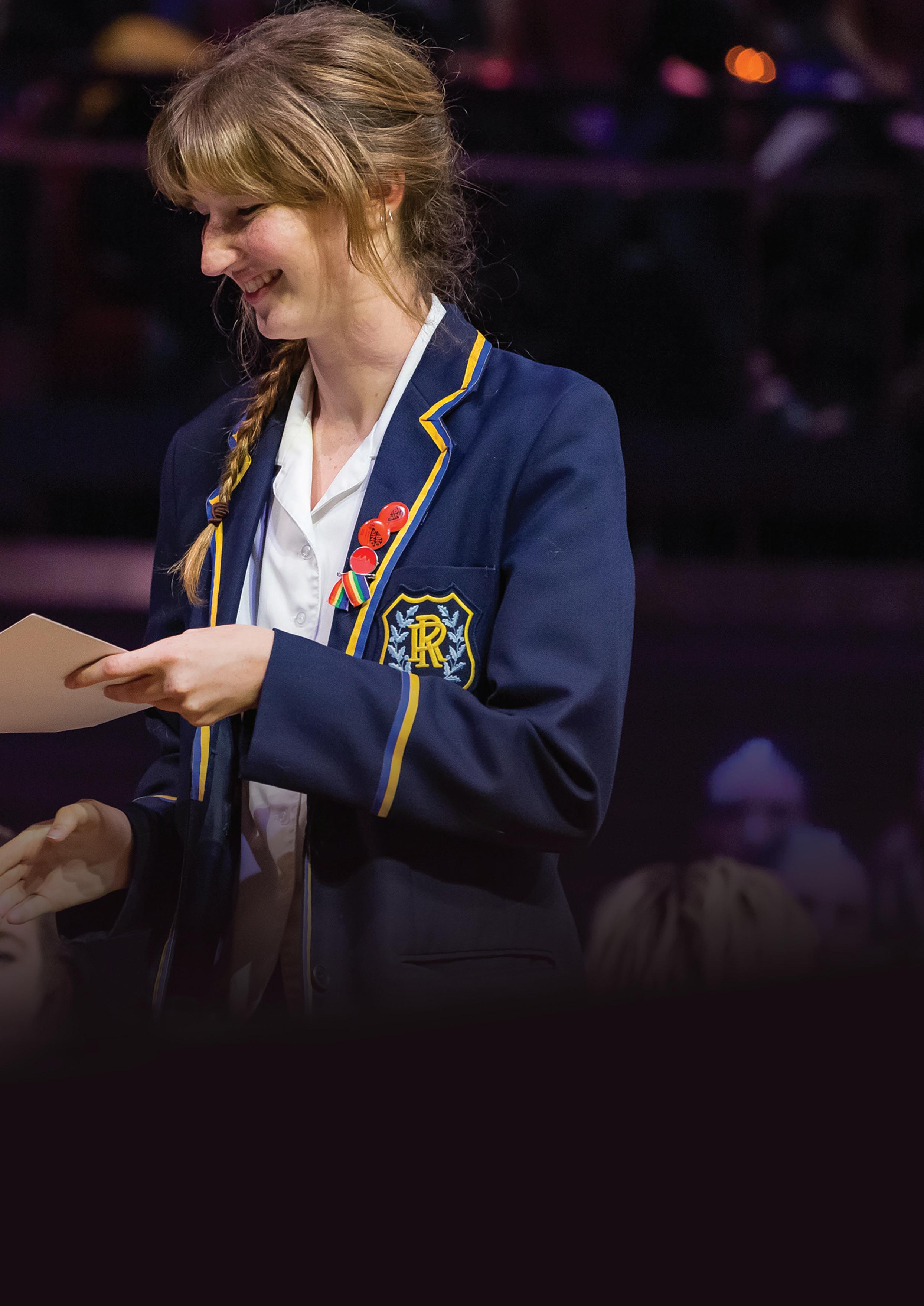
As we move to this exciting new platform, I would like to take this opportunity to thank Felicity Williams, past RROGA President and the RROGA magazine editor for the past several years, for her unwavering dedication to the magazine and to our alumnae. I would also like to welcome Olivia Ling to the role of RROGA Coordinator. I look forward to continuing to foster a strong connection between alumnae and current students and thank you for your support of the Old Girls’ Association.
 Words by Amanda Dick RROGA PRESIDENT
Words by Amanda Dick RROGA PRESIDENT
SCHOOL PRIZES
Special Prize for
Emma Comerford Jessica Hickling Isabella Matson Juliet Park Special Prize for a consistently high standard of achievement in
in
Sophia Bernau Alice Gambrill Isobel Melhuish Daisy Prosser Monday 14 Aug Friday 10 Nov GIBSON GIRL/ WHAEA ORA MORNING TEA
Prizes sponsored by the Rangi Ruru Old Girls’ Association awarded at the end of year Prizegiving 2022 are:
Excellence in Year 12
all subjects
Year 13
Amand a
RROGA RROGA Special Prize Winner Sophia Bernau save THE DATE RROGA ANNUAL GENERAL MEETING Monday 11 Sep ANNUAL GOLF TOURNAMENT
WIDE SKY WINTER 2023 7
PRINCIPALS OF RANGI RURU mana wahine
In over one hundred years on the Te Koraha site each Principal has brought their own unique approach to the role. They have all contributed to making Rangi Ruru into the school it is today.
Miss Helen F Gibson, 1889–1938
A visionary, Helen founded Miss Gibson’s Private School for Girls, later to be known as Rangi-ruru in 1889 and was Headmistress until her death in 1938. With her sisters in 1923, she purchased the Te Koraha property and moved the school there. Helen was an artist of note and taught at the Art School, Christchurch Girls’ High School as well as at Rangi Ruru.
Miss Ethel M Gibson MBE, MA, 1938–1946
Ethel taught at Rangi-ruru from 1896–1900 while studying at university, and from 1904–1938 was Assistant Mistress at Rangi-ruru. She became Headmistress after her sister Helen’s death in 1938. She retired in 1946 and was awarded an MBE in 1951 for her services to education. Like her sister Helen, she was known to be firm of character and fair in judgement. Ethel started the school magazine in 1923.

Miss May Farquharson BA, LTCL, 1946–1947
In her short tenure as Headmistress of Rangi-ruru Presbyterian Girls’ School, May reorganised the curriculum in preparation for registration and breathed new life into the music programme. She introduced free choice periods for seniors which recognised that students might develop interests outside school, and she began the Clan system.
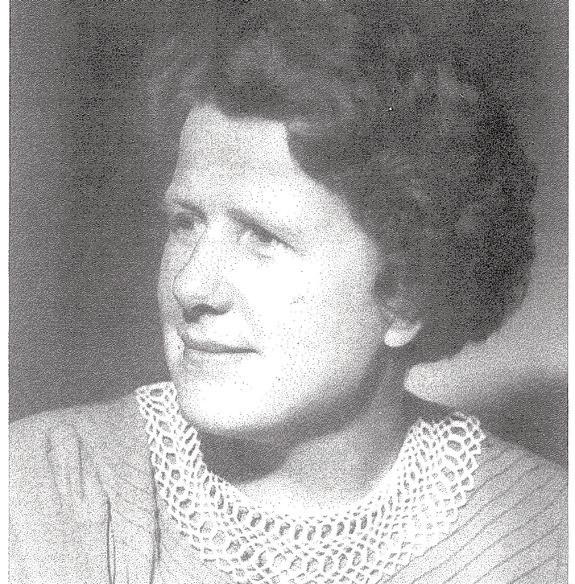

Miss Reweti O Mason MA, 1947–1951
In Reweti’s time as Headmistress, the school roll grew rapidly and the brick buildings where Atawhai now stands were built to accommodate this. Through her work, the school was placed on the list of schools for accrediting University Entrance. In 1951 Reweti Mason resigned, and the Rangi Ruru Old Girls’ Association endowed the Reweti Gardner Memorial Prize for English literature in her memory.
Mrs Margaret G Patrick MA, 1951–1969


Like her predecessors Margaret was a woman of strong Christian faith and principles. During her 18 years the school would undertake a large building programme, and when she retired only Te Koraha would remain of all the original buildings on the site. The junior school was phased out and community change was reflected in greater diversity in staff and teaching practices. The school began to look and feel much more like the school we know today. Students left school better equipped to face the changed post-war world.

WIDE SKY WINTER 2023 8
Miss W Lesley Anderson MA, 1969–1972
Whilst Headmistress the school’s name was changed from Rangi-ruru Presbyterian Girls’ School to Rangi Ruru Girls’ School. Lesley set in motion a great deal of change taking Margaret Patrick’s work to another level, rearranging the curriculum, and introducing practices we now take for granted such as meet the teacher evenings. She established the pattern of assemblies much as it is now and started the Founders’ Day Service. The timing of the school magazine was reorganised so that each year’s magazine appeared early in the following year, allowing a report on the complete year’s activities.
Mrs Raywyn A Ramage (Adam) BA, ATCL, CBE, Dip Tchg, 1973–1988
Raywyn put Rangi Ruru at the forefront of educational change, replacing the old prefect structure with the student senior leadership team as we know it today. Boarding facilities were extended, the old gymnasium and science blocks (now mathematics) were opened, and the Centennial Building Programme was launched. In 1985 she led the school in its first move into tertiary education with the opening of the Nanny School, later to become the Rangi Ruru Early Childhood College. One of her most innovative achievements was the negotiation and move of the St Andrew’s Church to Rangi Ruru in 1987.
Mrs Gillian Heald B.Sc., Dip. Tchg, MNZM 1989–2002
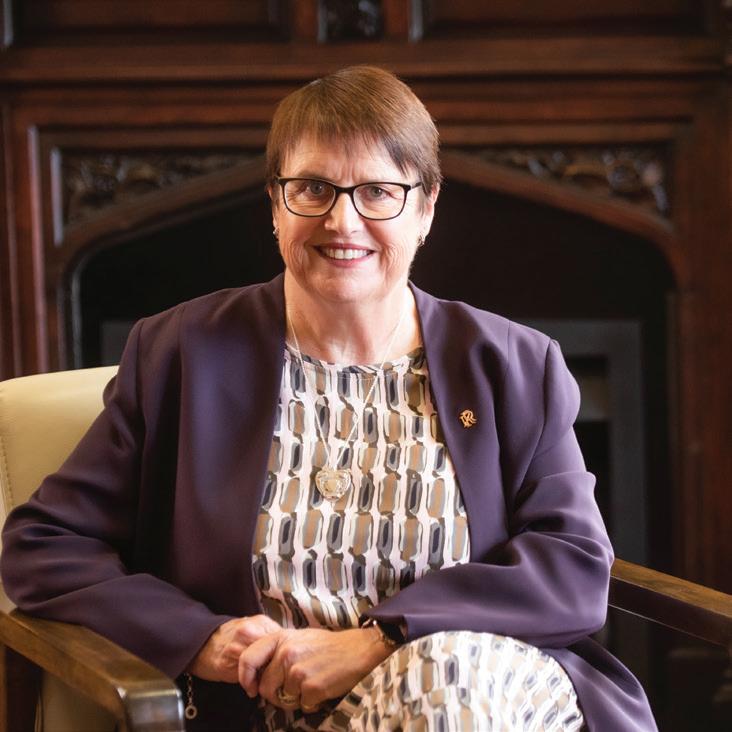


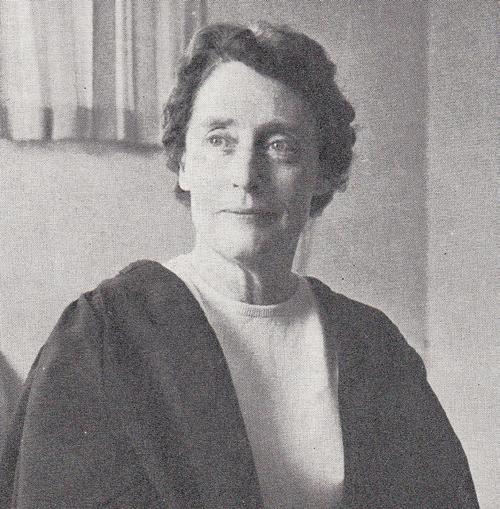
Gillian built on a culture of innovation and excellence through leadingedge initiatives and opportunities for students and staff. New Zealand ‘firsts’ at Rangi Ruru whilst Gillian was Principal included: the GATE (Gifted and Talented) programme, Individual Education Plans (IEP) for each student (now referred to as PDPs), a unique staff recognition and reward system – and a well-remembered favourite, the building of an aeroplane, Rererangi, a world first, by our students.
Ms Julie Moor MA (Hons), DipTchg 2002–2015


Julie will be remembered for her unwavering commitment to see the school through some of its most challenging years after the Christchurch earthquakes. Her most significant achievement being the rebuild of the school. Julie worked with a wonderful team who together revisioned, designed and rebuilt much of Rangi Ruru. To see it rise, and continue to rise, post-earthquake; new, forward focussed yet still honouring the past and the school’s spirit, almost defies words.
Dr Sandra Hastie EdD, MEd (Admin) (Hons), BEd, Dip Tchg, 2016–present
Along with the support of her staff, Sandra reviewed the Year 7 and 8 intermediate offering and as a result transformed Rangi Ruru to a seamless Year 7–13 school, allowing the school to come together as one. She also formed an exclusive partnership with Crimson Education, a global careers platform, with Rangi Ruru being the only school in New Zealand with an in-house representative working directly with students. In 2022 Dr Hastie established Rangi-X a new tech programme targeting innovation and entrepreneurship. Most recently Sandra has been part of the team that delivered Atawhai, our sport and multipurpose centre, a most magnificent facility that has surpassed all her dreams.
PRINCIPALS
WIDE SKY WINTER 2023 9
TE KORAHA our wonderful
Buildings have come and gone over the 100 years Rangi Ruru has been on this site, but one truly iconic building has remained a constant, interlacing the past with the present – our wonderful Te Koraha.
1884 was the year Arthur Rhodes began building a house on the block of land, Te Koraha (‘the wilderness’) bounded by Merivale Lane, Hewitts Road, Carlton Mill Road and Rossall Street. Amongst the lofty elms and close to the existing stable and coach house, it would be the house itself that would become known as Te Koraha. Arthur lived in the grand home with his wife Rose and their two children Tahu and Mairehau until his death in 1922. His son Tahu then put the house and land on the market. The house would soon become a new home for the Gibson sisters and the school they had been running for over 30 years on a much smaller site down the road, named Rangi-ruru. The Te Koraha property, comprising the house, with 1.8 hectares of land, stables and outbuildings was ideal for what the Gibson sisters needed if they were to continue to grow their flourishing school. In the August school holidays of 1923, the “big move” occurred, and the school relocated.
Te Koraha was the home of Helen, Ethel, Ruth and Winifred Gibson, and a home away from home for the 18 boarders who came with them, as well as the primary space for learning. The new space could accommodate 50 boarders. As the reputation of the school grew so did enrolment enquiries so more classrooms and facilities were built on site when possible. After the purchase of the school by the Presbyterian Church in 1946 extra classrooms and specialist spaces were built, with the generous financial support of the Rangi Ruru school community. With learning spaces transferred to facilities outside Te Koraha, more dormitory space became available inside, and more students could be accommodated. Demand for a space at Rangi Ruru was high though and as the school purchased additional properties and homes along the block, boarding numbers and the school’s size were able to increase. By 1984 when Te Koraha celebrated its centenary, there were 21 bedrooms, and some 181 boarders.
Some of the incredible facilities added over the years included a pool (1936 and replaced in 2006), the science block (now the museum and gallery), the Wilson Hall – a space for assemblies,
The ladder used by to enter and exit Te Koraha to prevent contact with quarantined students
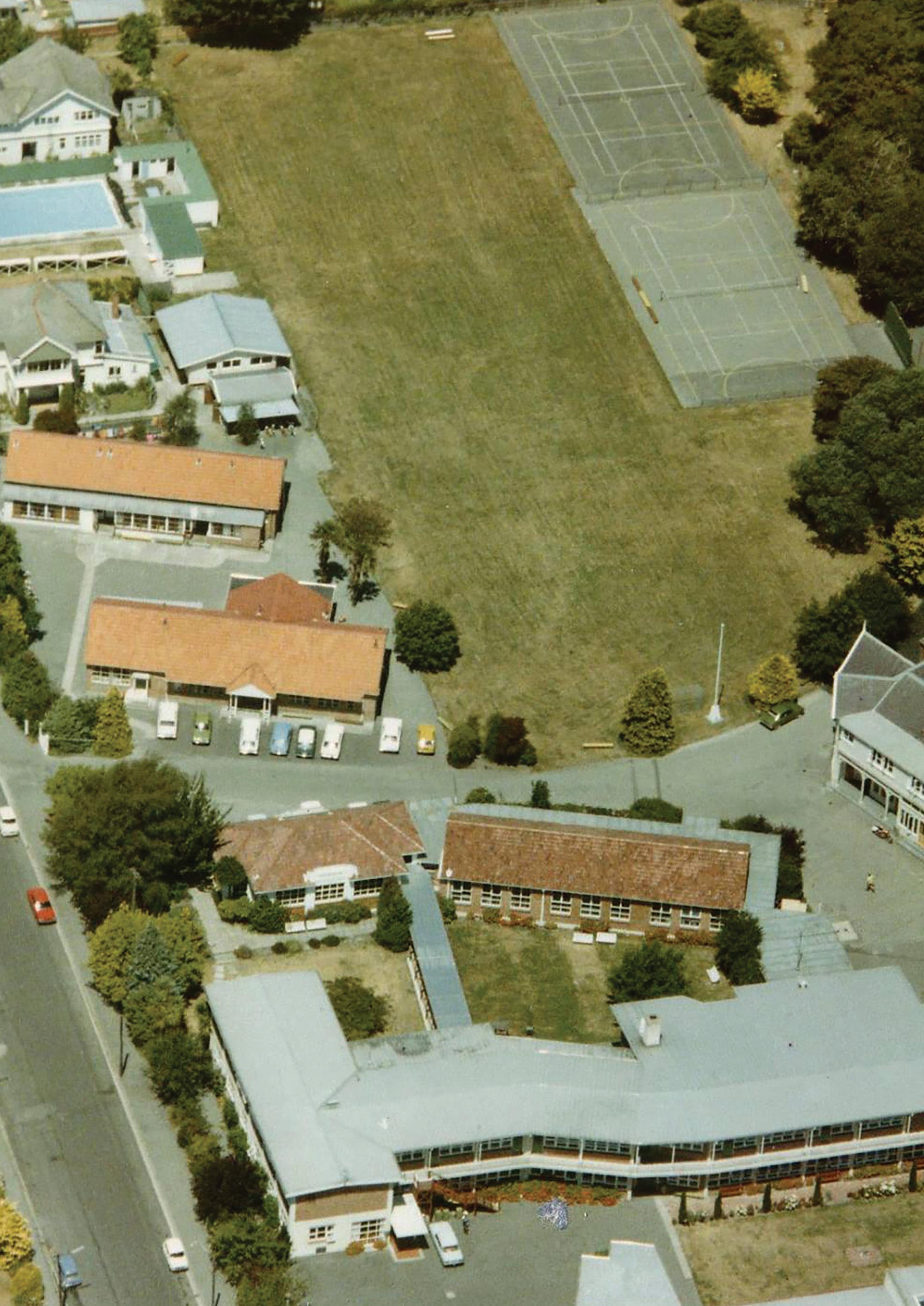
Te Koraha, an enduring and intrinsic part of Rangi Ruru and all it stands for was retained, and in 2012 rose once again...
“
Aerial Shot 1970’s WIDE SKY WINTER 2023 10
performances, examinations and chapel, the Gibson Memorial Library (1966 and 1992), and the Kerr Gym, amongst others. One of the more significant additions was the transfer of the historic St Andrew’s Church building, from the hospital site to Rangi Ruru in 1986, providing a dedicated chapel for the school. By 2000 Te Koraha was tired and no longer met the needs and expectations of a boarding house for the 21st century. The Board of Governors made the decision to build new boarding facilities and to restore Te Koraha. Once restored, it provided much needed spaces for offices, and administration, as well as some teaching space and staff facilities. In 2002 the new boarding house facilities were opened and for a period the campus remained largely unchanged until the earthquake events of 2010/2011 in which Te Koraha was left badly damaged, along with nearly 60 percent of the school.


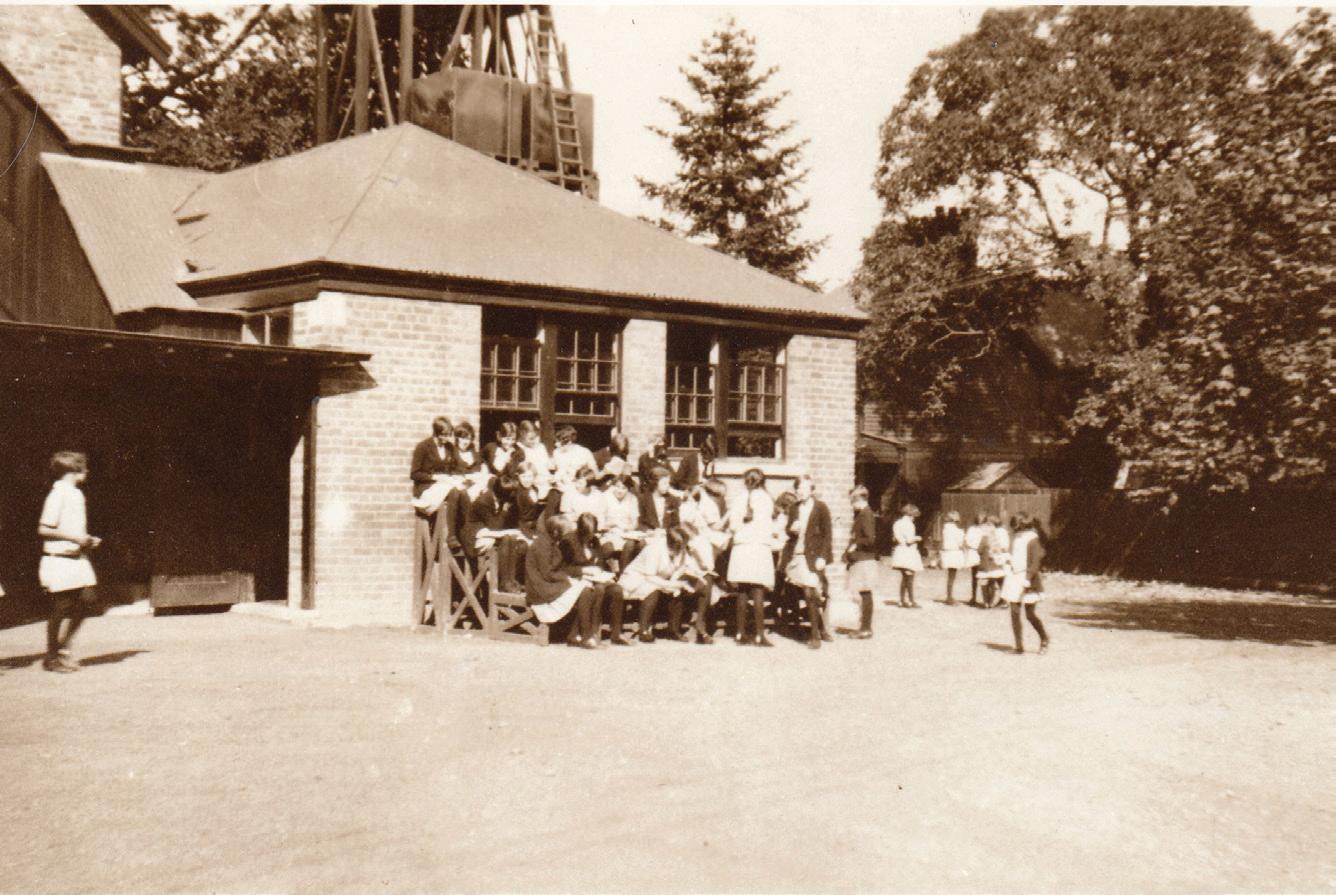
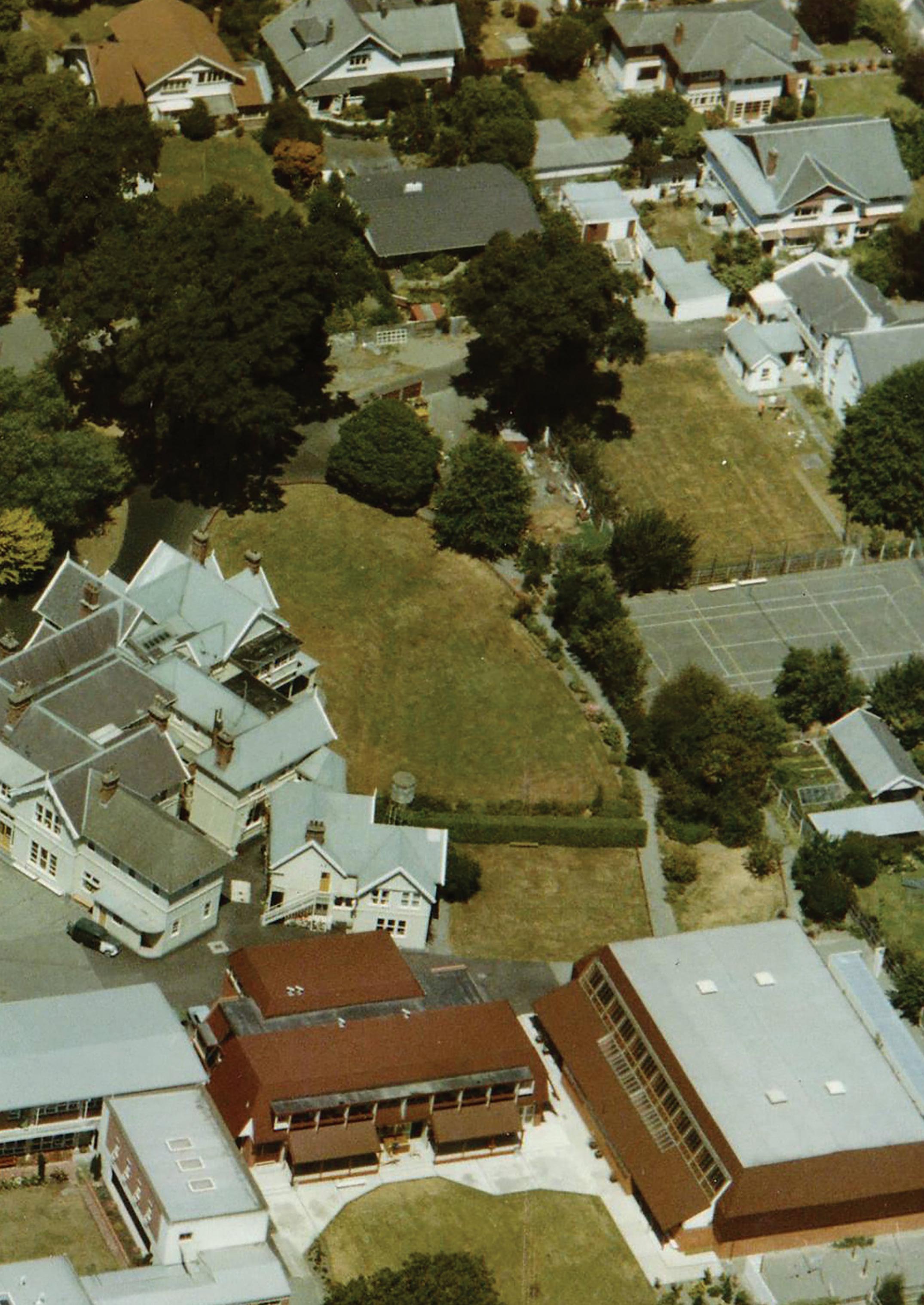
Due to the magnitude of the damage and devastation caused by the earthquakes, the Board of Governors made a bold decision to not simply repair the buildings, but where possible, reimagine the campus and develop it further - Project Blue Sky was born. As a result, the Gibson Centre Library, the science and arts buildings, Mana Wahine, the performing arts building and most recently Atawhai have seen the campus enhanced and now these leading-edge facilities truly match the incredible teaching that goes on within them. Amongst all the innovation and appeal of these new amenities, one important piece of the school’s history remained.
Te Koraha, an enduring and intrinsic part of Rangi Ruru and all it stands for was retained, and in 2012 rose once again, renovated and ready to take its place once again at the heart of Rangi Ruru.
Words by Bridget Woodham EDITOR & COMMUNICATIONS MANAGER
 TE KORAHA
The Stables in the late 1920’s
Swimming Class 1938
TE KORAHA
The Stables in the late 1920’s
Swimming Class 1938
WIDE SKY WINTER 2023 11
Fergusson Wing and Wilson Hall 1970s
MOVING TOWARDS A
sustainable future
Kia whakatōmuri te haere whakamua. I walk backwards into the future with my eyes fixed on my past. This whakataukī speaks of Māori perspectives of time, with the past, present, and future intertwined. Looking to the past reveals environmentally friendly practices we can adopt today to help move towards a thriving and sustainable future.
Within the one hundred year old inky, handwritten pages of my great grandmother’s diary are notes on mending, repairing, patching, saving and reusing. In 1923, her days included milking the cow, collecting eggs, churning butter, walking children to school, washing, cooking, sewing, harvesting seeds, growing fruit and vegetables, composting, preserving and baking. For Ethel, cycling was her means of transport. Small in stature, she carried heavy cloth bags of flour from the mill and large tins of honey from the local apiary. Today, we can learn from these sustainable approaches, as a model for living with less impact on the planet. As a child I saw my grandparents live without waste and witnessed my grandmother question assumptions and protest at the shift from reusable glass milk bottles to plastic. These dispositions are crucial today, to ensure we mitigate against climate change.
Caring for Papatūānuku
At Rangi Ruru, we empower ākonga to be socially responsible, question assumptions, and be the change. This means we walk the talk and take hands on action to care for and nurture our local environment. Our kaupapa develops our connection with Te Taiao to engage in

manaaki manawhenua – care of the land. Ākonga learn about sustainability and the interconnected relationship of all living things within the curriculum and Te Ara programme, acknowledging Papatūānuku – Mother Earth and honouring the spiritual, cultural, and historical values of manawhenua and indigenous knowledge.
Collective Impact
To respond wisely to the challenges of creating socially and ecologically sustainable societies, collective action and critical thinking are required to help people, fauna, flora and earth’s ecosystems flourish. Ākonga and kaimahi are actively involved in initiatives, be it the Green Market, Reuse Depot, calculating carbon emissions, growing vegetables and native trees or helping clean up the banks of the awa. Together, many small actions have significant impact. This concept was reinforced in 2018 when Dr Jane Goodall spent the day at our kura. Her key message was to focus on looking after the environment locally. “If we all do a little in our own backyards and communities, together we have enormous impact.”
We continue to grow native seedlings onsite in our Eco-Action satellite nursery. In collaboration with other schools, together we will grow 60,000 plants this
year to green the Red Zone in Ōtautahi. Our edible gardens produce over one hundred varieties of fruit and vegetables for those in need. Our kura collects and prevents thousands of items going to landfill annually and instead redistribute these through our Reuse Depot initiative. We have a native butterfly garden and are re-establishing native species that traditionally grew in the Ōtākaro catchment. In January, staff planted seven cabbage trees on the corner of Merivale Lane in acknowledgement of a stand of ti kōuka landmarks that once stood on the site and this year native trees will line the grounds along Hewitts Road. A pā harakeke of flax for native birds, and to harvest for raranga (weaving), has recently been planted outside Ātawhai.
Near Te Koraha is an old camelia tree, where horses were once hitched. Looking forward, planning is underway to install electric car chargers by the camelia tree and new cycle stands, as our community shifts to embrace both the good habits of the past and technology of the future.
Words by Kate Rivers DIRECTOR OF SUSTAINABILITY
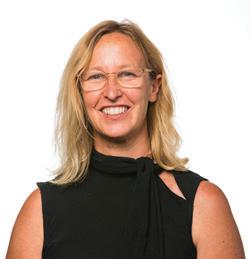
WIDE SKY WINTER 2023 12
“

SUSTAINABILITY
“If we all do a little in our own backyards and communities, together we have enormous impact.” Dr Jane Goodall. WIDE SKY WINTER 2023 13
social AN ONGOING SENSE OF RESPONSIBILITY
The service programme at Rangi Ruru has a rich history that dates back to the school’s founding in 1889. From its early days, Rangi Ruru has been committed to instilling in its students a sense of social responsibility and a desire to give back to their community.
This is reflected in one of the key school values, Generosity of Spirit/ Manaakitanga. The following whakataukī illustrates the importance of this value for the school community:

He aroha whakatō, he aroha ka puta mai. If
From the early 1900s, the newly established Rangi Ruru Old Girls’ Association organised charitable activities and fundraising events to support local causes. This tradition of community service continued to evolve over the years, with the students and staff engaging in a range of initiatives to support various community organisations and causes, including the Mayor’s Coal and Blanket Fund, Dr Barnardo’s Homes, St Saviour’s Orphanage and the Navy League. The school also provided for the education of a Solomon Island’s boy, Samuel Sasae who became a teacher for the Melanesian Mission in 1927.
An early example of the service programme at Rangi Ruru was the school’s involvement in the Red Cross during World War II. The students and staff worked tirelessly to knit clothing and blankets for soldiers and refugees, and to organise fundraisers to support the war effort. This connection with the Red Cross continued for many years, most notably with the ANZAC Day tradition of students sewing and knitting for the Returned Servicemen’s Association men at Rannerdale Home, as well as for the Red Cross.
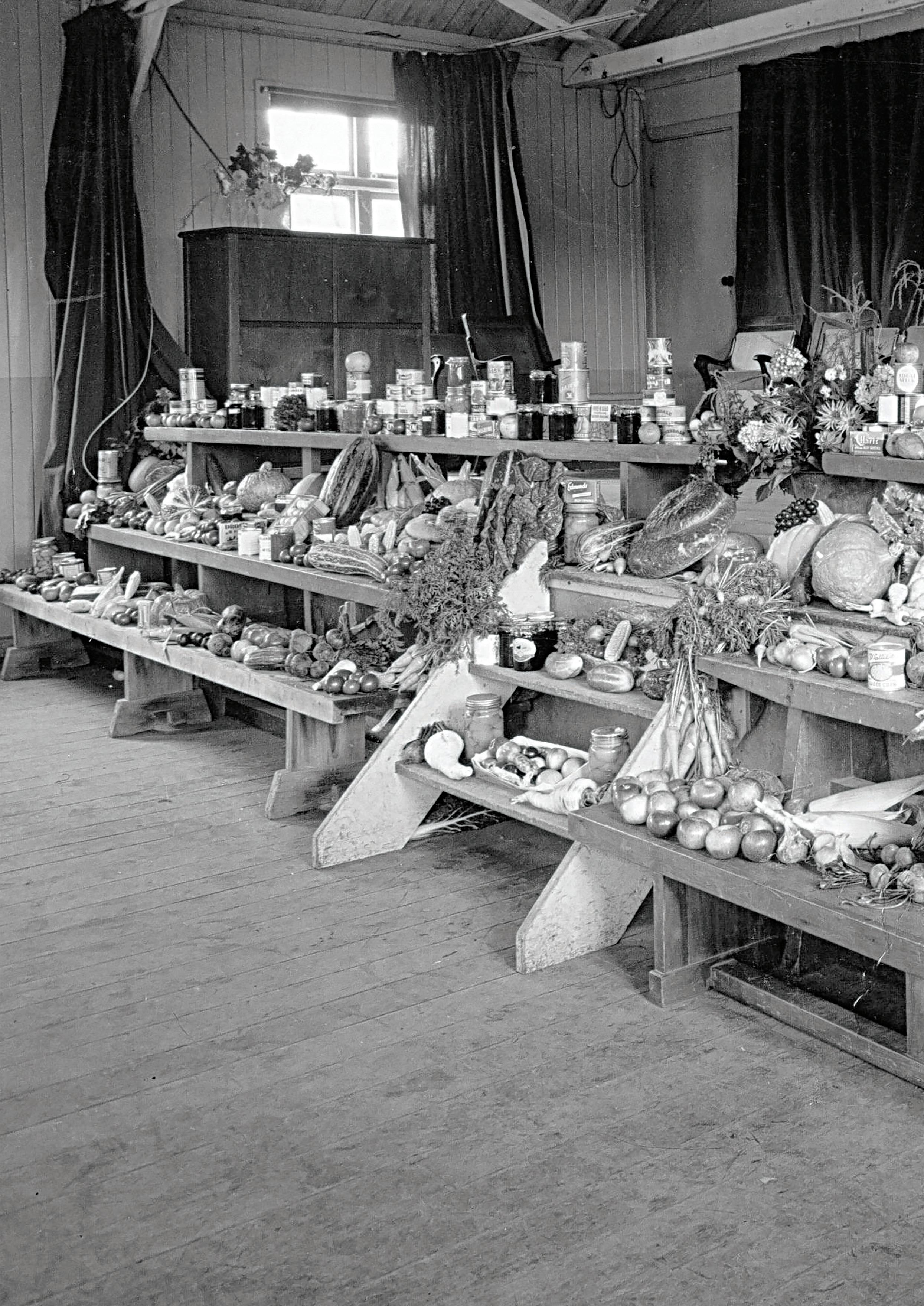
In 1952 the then Headmistress, Mrs Patrick, instituted what was to become an annual service of harvest thanksgiving. A special school service was held, gifts brought by the students were arranged in the assembly hall and then donated to children’s and old people’s homes and distributed to social workers.
Over the years, the service programme has expanded to include a wide range of
initiatives, including environmental stewardship, outreach to local schools and community organisations, as well as support for international development projects. Today, Rangi Ruru has a robust service programme and while many of the historic service traditions, like Harvest Festival and the Easter Egg Collection remain, there is room nowadays for more student-led initiatives. In recent times student Heads of Service have introduced fundraisers for local disasters, for example Cyclone Gabrielle earlier this year. They also established the very successful Student Volunteer Service award.Rangi Ruru was one of the first high schools in the country to introduce this award to all Year 9 to 13 students; the award recognises students’ involvement in community service activities through a series of badges. The service programme also includes partnerships with local and international organisations, most notably World Vision and the 40-hour Challenge, that allow students to connect with people from diverse backgrounds and cultures.

In the words of Bex Skinner, our Head of Service for 2023: “Service at Rangi Ruru is so powerful because when we all contribute just a little bit, collectively we can have a huge impact on communities around us. Our focus for service this year was that if you can help the life of one person then you can make a huge difference in the world. Community service is so valuable because not only does it help others, but it also helps you better understand yourself and the world around you.”
 Words by Tania Morgan HEAD OF COMMUNITY & GLOBAL CONNECTIONS
Words by Tania Morgan HEAD OF COMMUNITY & GLOBAL CONNECTIONS
kindness is sown, then kindness is what you shall receive.
WIDE SKY WINTER 2023 14
Service at Rangi Ruru is so powerful because when we all contribute just a little bit, collectively we can have a huge impact on communities around us.

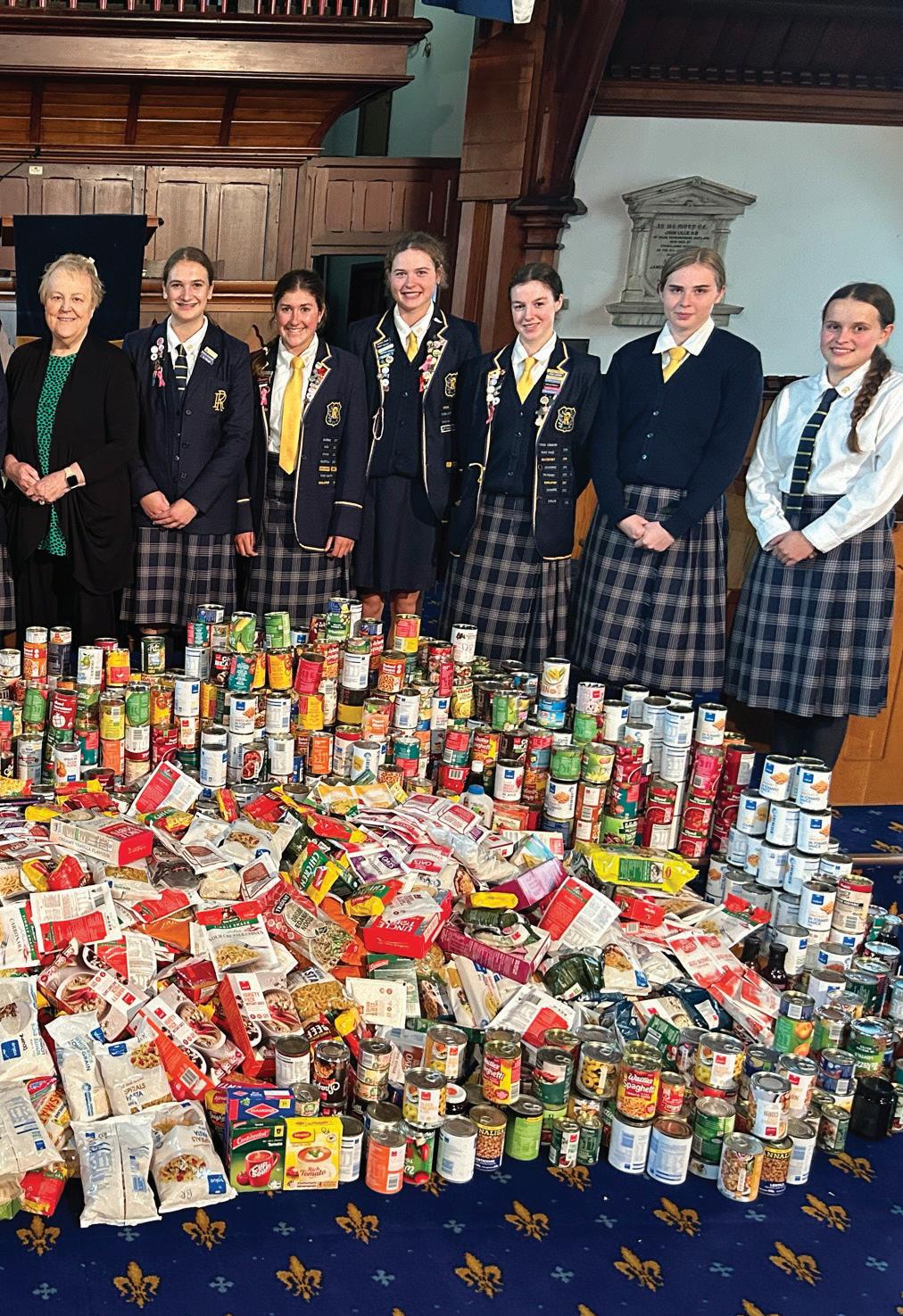

SERVICE
Main image: Harvest Thanksgiving 1955. Insetimage:HarvestFestival2023.
“ WIDE SKY WINTER 2023 15
FROM WHERE WE’VE COME: RANGI RURUsnapshots
A list of staff noted in the 1925 school magazine. From this, you can see the subjects offered to the students nearly 100 years ago. Eurythmy was an art of movement integrating music with speech and physical movement.


Classrooms in the 1960s looked a little different than they do today. Chalkboards at the front, teachers wearing formal academic gowns, and hard wooden chairs and desks.
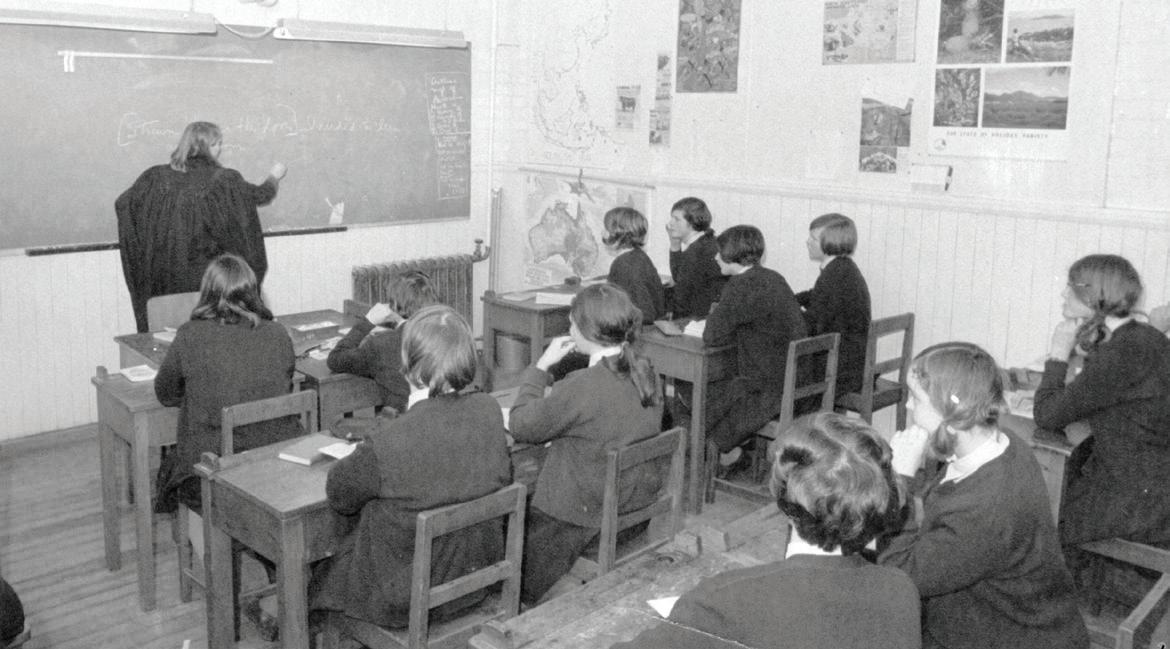
Miss Ruth Leonard was the Rangi Ruru Cook from 1946–1954. The school is very fortunate to have her original recipe book stored in the archives. Here is one of her shopping lists for the school shop. We wonder what our students today would think of some of the food items listed being on the menu in the canteen!

WIDE SKY WINTER 2023 16
Sewing was considered an essential domestic skill and was supplementary to academic lessons. In the very early years, sewing was compulsory even for the youngest of students, with the first item they each created being a large bag with a pocket on the side for house shoes. As the years went on, sewing machines were introduced and it was added as a curriculum subject. Here is a photo from a 1951 sewing class.


After the purchase of the school by the Presbyterian Church in 1946, extra classrooms and learning spaces were built, allowing for more dormitory space to become available inside Te Koraha. The dorm rooms today look a little more homely and are less communal than the Newall Annexe (now the finance office) in c1951, shown here.



SNAPSHOTS OF HISTORY
Students Alisoun Butt (nèe Hight) and Suzanne Ridgen (nèe Wood) wearing the boarder’s suit. This suit was considered formal street attire, something you would wear to church or travelling to and from town.
WIDE SKY WINTER 2023 17
Helen Kitson (née Robilliard), Rosemary Winstone, Anne McLean (née Ronaldson) and Suzanne Panckhurst (née Fair) seen here in their school uniform in 1949. Rangi Ruru’s school uniform transformed over the years but one thing that has remained constant since the 1920s is the monogrammed blazer.
First introduced in the early 1900s and run by a Captain Frank Farthing it was Miss Gray, Sports Mistress who brought squad drill to life
Although bookkeeping and shorthand were added to the curriculum in the 1930s, as hard as some parents pushed for science to be added to the curriculum, Miss Gibson remained unconvinced that it had any importance in the education of women. During this time students seeking future medical careers received science tuition elsewhere. In 1937 Mrs Lush started teaching science to the senior students but it would be nearly another decade before science was taught throughout the school and introduced as a school certificate subject. This photo was taken in 1972.


in 1926. The school was divided in to 12 squads and drill took place at the end of morning interval for ten minutes out on the field
or netball courts. Sports uniforms weren’t introduced until the fifties so girls performed drill in their dresses. Photo from 1949.

An excerpt taken from the school prospectus circa 1950s highlighting the items of clothing students were required to have as part of the uniform. A regulation party frock leaves little room for individualism and is a stark contrast to the glamorous gowns the students wear today.
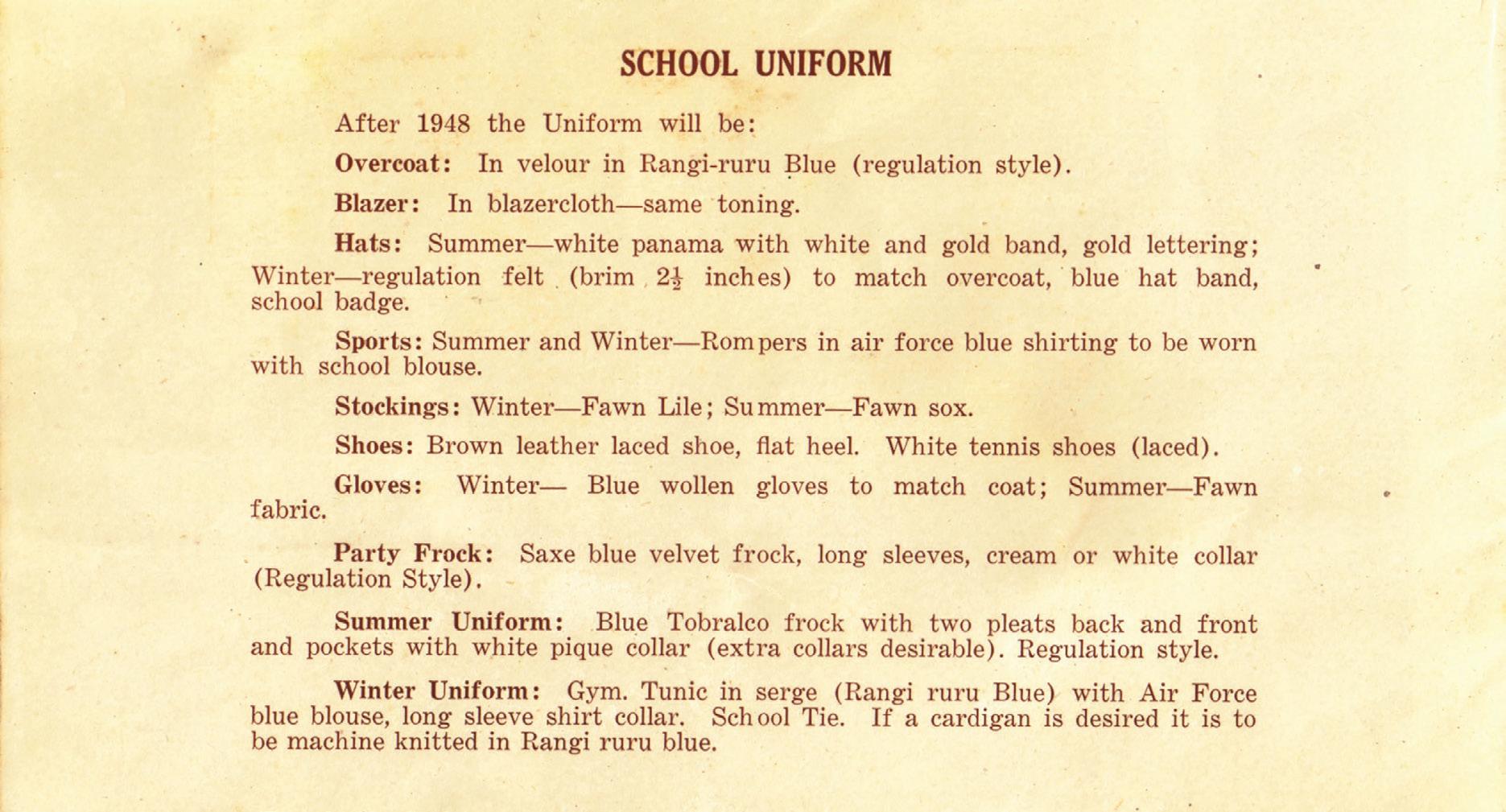
WIDE SKY WINTER 2023 18
On special occasions the boarders would wear their party frocks, a

The haka was first introduced in the 1920s but back then the school performed the renowned New Zealand haka, Ka Mate. The photo here is from the 1928 school magazine. During Mrs Patrick’s time (1951–69), a Māori Club was formed and the school haka that had seldom been heard in the decades prior, was revived. It wasn’t until 1971 that the school haka, that we know and love today composed by Mr Pehi, was established. Excerpt below from the 1928 school magazine.



SNAPSHOTS OF HISTORY
black velvet dress with lace collar c1949.
The Admissions Register from 1924, the first full school year that would be held on the current site.
WIDE SKY WINTER 2023 19
RANGI RURU
art collection LEGACY IN ITSELF

With a passion for art, Miss Helen Gibson, one of the founders of Rangi Ruru and the first Headmistress, established the tradition of collecting art for the school.
Athese artists, from during their period of residency. This includes works by Neil Frazer, Joanna Braithwaite, Jason Greig and Heather Straka to name a few. These works hang alongside the work of alumna Merilyn Tweedie and Ruth Watson.
In 2010 a work by Michael Parekowhai ‘In the Bosom of Abraham’, an ink on lightbox was purchased. A master of creating work that has a multiplicity of meanings, in this work the artist takes a traditional kowhaiwhai pattern and reinterprets it. In traditional Māori art the koru symbolises growth and renewal and kowhaiwhai is linked to whakapapa or genealogy, connecting the past and the future. In this work there is a connection between the tradition of kowhaiwhai painting with the new arts of screen printing, plastic moulding, and commercial lighting to create an entirely new imagining of the spirit of the wharenui.
Helen Gibson was herself a respected artist in the early Canterbury art scene. She studied at the Canterbury College School of Art and, on qualifying, began teaching. Helen was the first qualified art teacher at Christchurch Girls’ High School, and she taught painting and drawing at Rangi Ruru for 49 years. Helen Gibson’s work, mostly in watercolour, formed the foundation of the Rangi Ruru collection. Sixteen Helen Gibson works are currently displayed in Te Koraha. Successive generations of art teachers and principals have added to the collection and the Board of Governors oversees the Art Acquisitions policy that states the purpose is for ‘the instruction, pleasure and cultural development of the school community and to enhance the school environment’.
In the early 1900s when Helen Gibson was painting, realism was the favoured genre. Helen painted from her observation, frequently painting ‘en plein air’, which involved actually painting from the lived experience outside, rather than from memory within the studio. Hagley Park was a favourite for her, particularly in autumn, unsurprisingly as this was truly her local, accessible landscape. The school has five versions of this subject, displayed on the ground floor of Te Koraha.

In 1999 the Artist in Residence programme was established, through the vision of then Head of Art, Helen Calder. Over the years artists have worked in the school, mentoring students, demonstrating, and exemplifying art practice.

Where possible, Rangi Ruru has endeavoured to purchase the work of
This use of new technology is a hallmark of the works that have been recently acquired. Acrylic cut-outs by Michel Tuffery and Lonnie Hutchinson in reception and Atawhai, a work made from recycled bread bag tags by Volker Hawighorst, and a work using 3-D modelling within the computer by Kareama Taepa; these works aim to represent new media and concepts alongside a deliberate engagement with our cultural heritage. Given the Board’s objective that the collection is for the cultural development of the school community, it is appropriate and necessary that the collection responds to our increased engagement with mātauranga Māori within the school and Aotearoa.
Words by Juliet Collins ASSISTANT PRINCIPAL CURRICULUM
WIDE SKY WINTER 2023 20
Helen Gibson, Hagley Park, early 1900s.
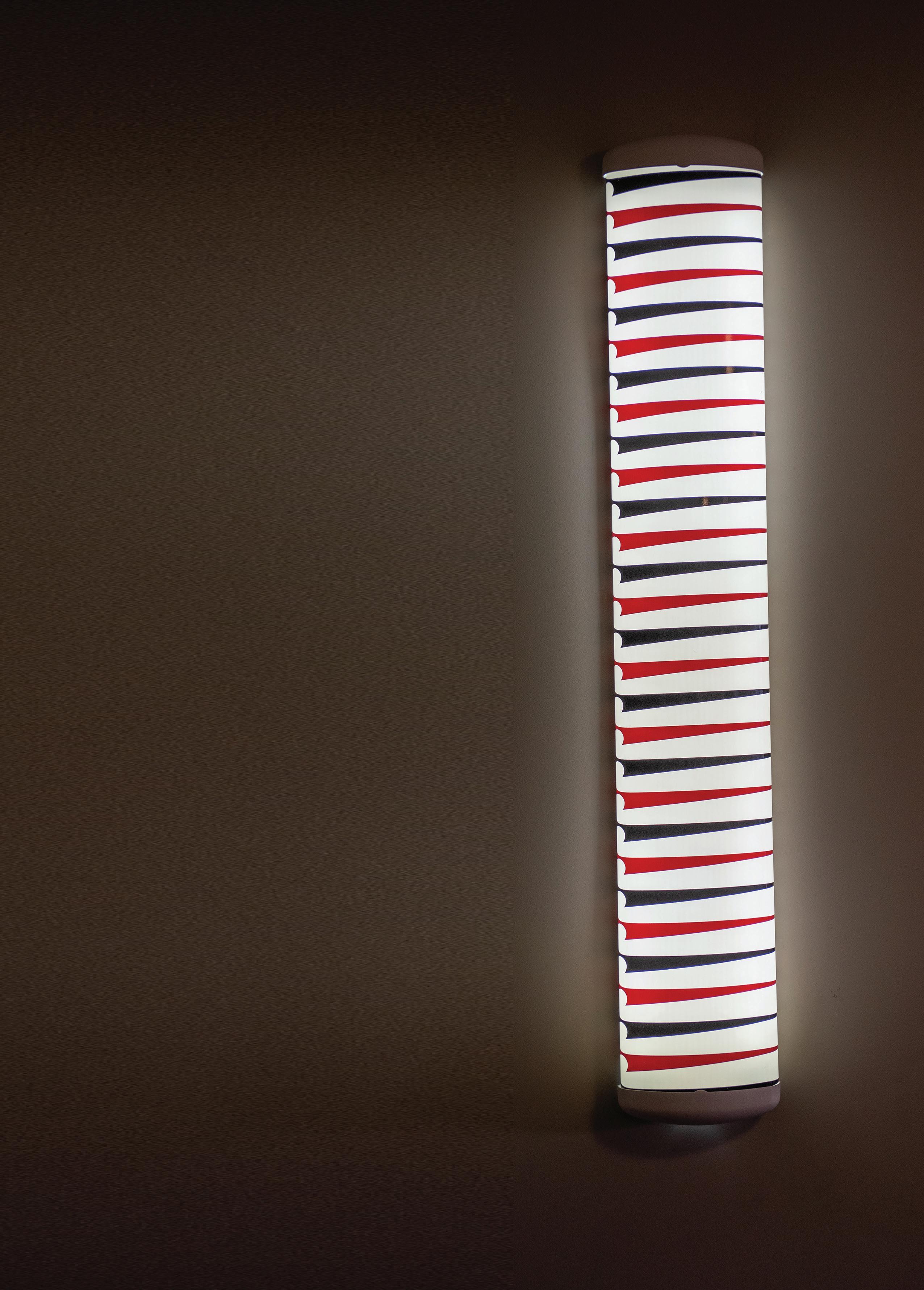

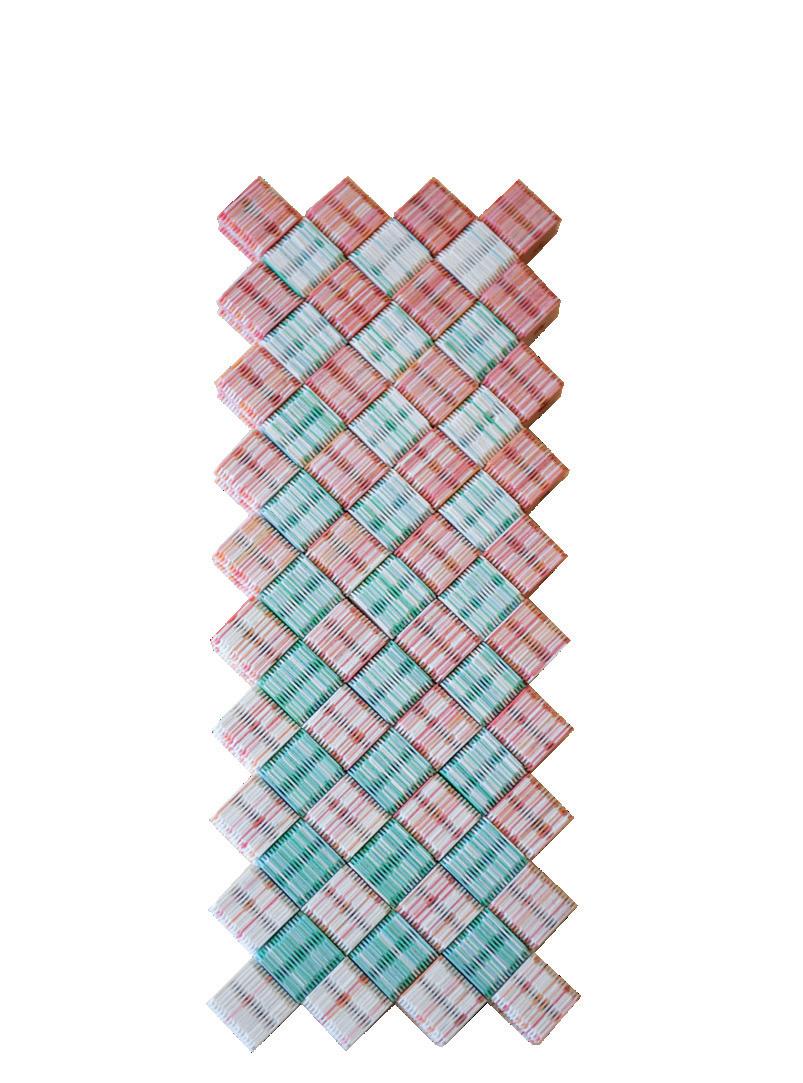
 Kareama Taepa, ‘Tiki 1.3’ 2022.
Volker Hawighorst, ‘Digital Weaving’ 2023.
Kareama Taepa, ‘Tiki 1.3’ 2022.
Volker Hawighorst, ‘Digital Weaving’ 2023.
ART COLLECTION
Michel Tuffery, ‘Matariki Stars’ 2022.
Michael Parekowhai, ‘In the Bosom of Abraham’ 1999.
WIDE SKY WINTER 2023 21
..these works aim to represent new media and concepts alongside a deliberate engagement with our cultural heritage.
“
While sporting trends and uniforms have come and gone, there is one constant – a proud tradition of participation which is supported by access to outstanding coaches, supporters, facilities, and resources.
Thank you to our rowing sponsors for their support on and off the water

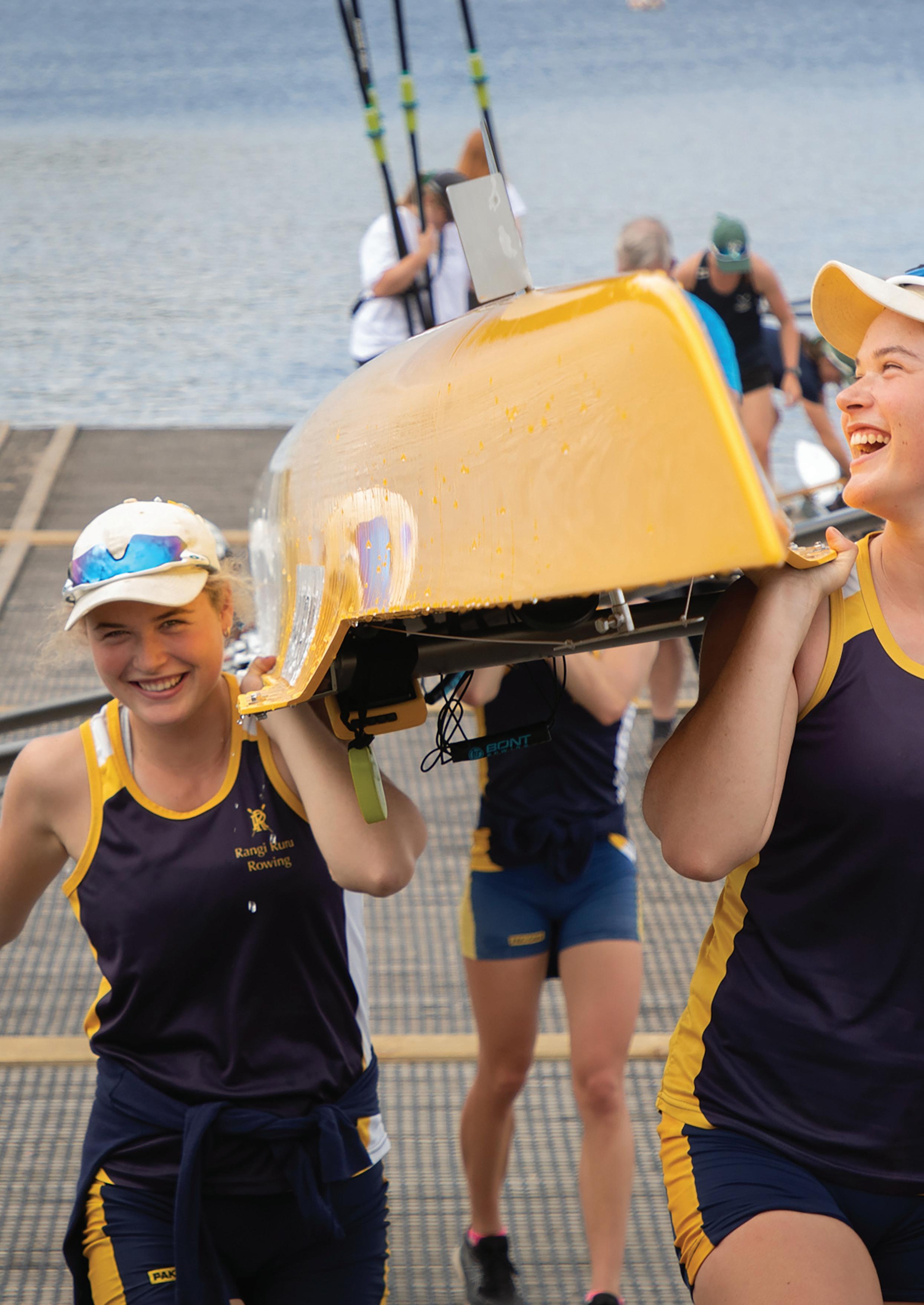
“
WIDE SKY WINTER 2023 22
A PROUD TRADITION OF
opportunities

History was made this year when two Rangi Ruru U18 8 crews claimed medals in the pinnacle race of the AON Maadi Regatta. From Rangi Ruru’s first New Zealand Secondary Schools title by the Novice 8 in 1987, to the dominance of the 8s in 2023, our kura has had a long and successful involvement with rowing.
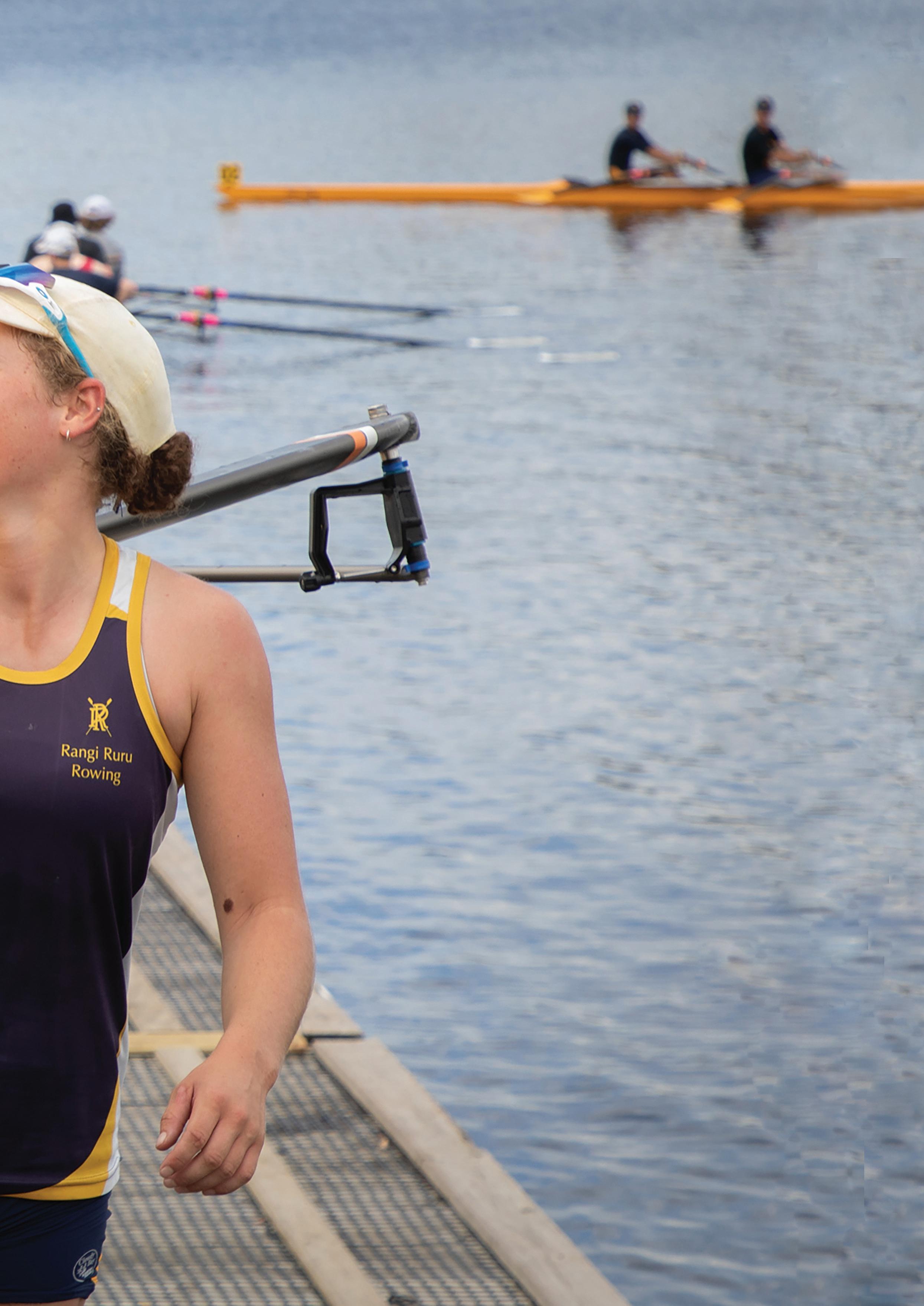
Itis, however, also reflective of a strong legacy of sporting participation and excellence across many sports, extending back to the move to the Hewitts Road site in 1923.
The move signalled an opportunity to grow the school’s sport programme. Alongside compulsory drill for students, athletics, tennis, gymnastics, hockey, basketball, swimming and life-saving dominated the early programme. As often happens in school sport, other sports on offer were dependent on the interests of staff. Softball, badminton, table tennis, quoits, volleyball and golf all had their moments throughout the years. In 1976 a new gymnasium increased the interest and demand for badminton, squash and volleyball, and a trampoline club was formed, alongside the re-emergence of basketball. For a period of time, almost every year saw another sport introduced to the programme.
The wide variety of opportunities on offer for students remains a key part of the Rangi Ruru sporting experience. Today over 30 sports are available for students, many supported by experienced coaches. Increasingly the support of parents/whānau, alongside staff, has become a key ingredient in the ability to provide a range of offerings to suit the ever-changing interests of rangatahi.
The establishment on site of the swimming pool in 1936 saw the introduction of life-saving – popular among the good swimmers who could be seen awkwardly practising resuscitation on their peers on the lawn at lunchtimes! Fast forward to 2023 and the commitment to life-saving remains an integral component of the Rangi Ruru experience with all Year 9 students sitting the Bronze Medallion – a point of difference for students coming to Rangi Ruru.
The first school swimming sports were held in 1944, and over the years they have taken on many forms. While now a competitor only event, the key element of celebrating Clan spirit remains. Moving with the times, where possible the event is now livestreamed to allow whānau to watch online. Having a pool onsite has not only assisted our school swimming sports and life-saving programme, but also helped grow water polo, reflected in the dominance of Rangi Ruru in the South Island for the past three years and a top five placing for the past three years at a national level. One of the earliest major sports exchanges was with Craighead Diocesan, which remains a popular annual event on the junior sports calendar today. Not long after the first exchange with Craighead in 1947, the event evolved into a triangular tournament with St Margaret’s, and then further to a quadrangular tournament, including St Hilda’s from Dunedin. ‘Quad’ remains a key part of the senior sporting calendar and history was remade this year with the tournament evolving to now include five schools and four sports.

In the early days, a blue flannel dress with detachable collars was worn for everything, including sport. Dresses were tucked up into bloomers until 1946, when the pleated romper and blouse was introduced. It wasn’t until 1969 when an official sports uniform was introduced – a short blue wrap-around skirt and gold blouse. The athletes of 1969 would be envious indeed of today’s sport specific uniforms which are designed for purpose and made of fabric that moves and breathes.
While sporting trends and uniforms have come and gone, there is one constant – a proud tradition of participation which is supported by access to outstanding coaches, supporters, facilities, and resources. Being encouraged and involved in sport here will forever remain a key part of the Rangi Ruru experience.
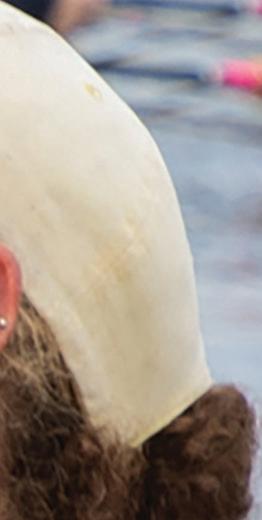 Words by Mandy Anderson DIRECTOR OF SPORT
Words by Mandy Anderson DIRECTOR OF SPORT

SPORT
WIDE SKY WINTER 2023 23
YEARS OF CHALLENGE:
economic depression,EPIDEMICS, WAR & EARTHQUAKES
The years following the move to Te Koraha were difficult in New Zealand’s history. In 1918, when the influenza epidemic swept the city, boarders were sent home, the school closed, and members of the Gibson family still on their feet had gone out to affected houses to take temperatures and report back to the overworked doctors. It was this well-developed culture of quick response and care in a crisis that was to become a hallmark of the school.
Until the development of effective vaccines many childhood illnesses had no cures, and Rangi Ruru had to close or quarantine students on many occasions. In 1925 the school closed in the face of a poliomyelitis epidemic that closed all New Zealand schools for months and reduced the academic year to two terms. There were further closures occasioned by polio outbreaks in 1937 and again in 1948. Whenever measles, mumps or chickenpox swept the boarding house, the patients were kept away from the day girls and given separate lessons. In 1924 a measles epidemic cut all the boarders off from the day girls, and students cheerfully reported that the spotty and quarantined ones were taught in the common room and that a ladder was in use to prevent contact on the stairs.
In 2020 and 2021 the school went into lockdown with the rest of New Zealand as Covid-19 swept the world, and for the next three years the long-established culture of quick response and care in a crisis saw the school responding, staying connected with families and students and delivering teaching and learning online.
Throughout the 1930s the world was in the grip of the Great Economic Depression. The early depression years brought a drop in the school roll from 278 in 1930 to a low of 207 in 1933. That the number of boarders kept up as well as it did was due to the soft hearts of the Gibson sisters, who quietly reduced the fees for some

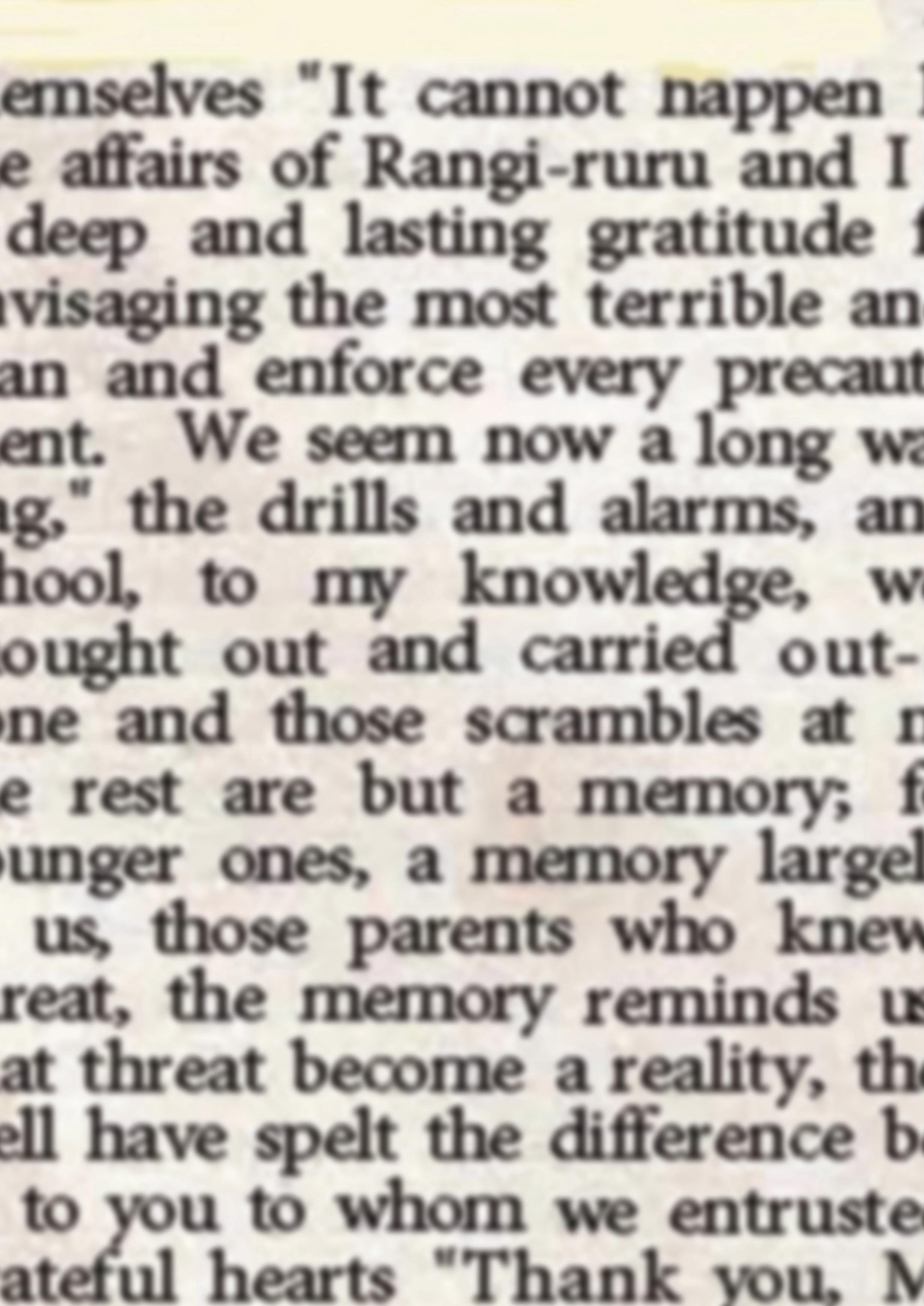
WIDE SKY WINTER 2023 24
The ladder used by students to enter and exit Te Koraha, to prevent contact with quarantined students.
girls who otherwise would not have been able to attend.
Rangi Ruru celebrated its 50th anniversary at the start of World War Two and the school adjusted itself to wartime conditions. Many had fathers and brothers on active duty overseas, and past pupils and staff enlisted to serve as nurses, often in front-line hospitals, and with the Women’s Services. War news became a feature of assemblies. Despite this, lessons continued.
Rosemary Britten wrote, “By 1942 the threat of invasion was real, and a trench was dug in the field parallel to Hewitts Road. Boarders went to bed wearing name tags; they were not told that these were to help identify their bodies should the House be bombed. On the end of each bed were slacks and a jersey, and a ditty-bag containing a torch, a change of underwear and a cake of chocolate. The senior girls were taught first aid and learned to extinguish incendiary bombs. Some helped to make camouflage nets. They became used to going to their blacked-out dormitories when the city siren went at 6.30pm.”
The war brought various austerities and shortages, as in rubber for tennis balls and elastic. Petrol restrictions reduced attendances at sports days. Rationing of food and clothing tested the cook Miss Atkinson’s considerable ingenuity. It was surprising what the cooking class could
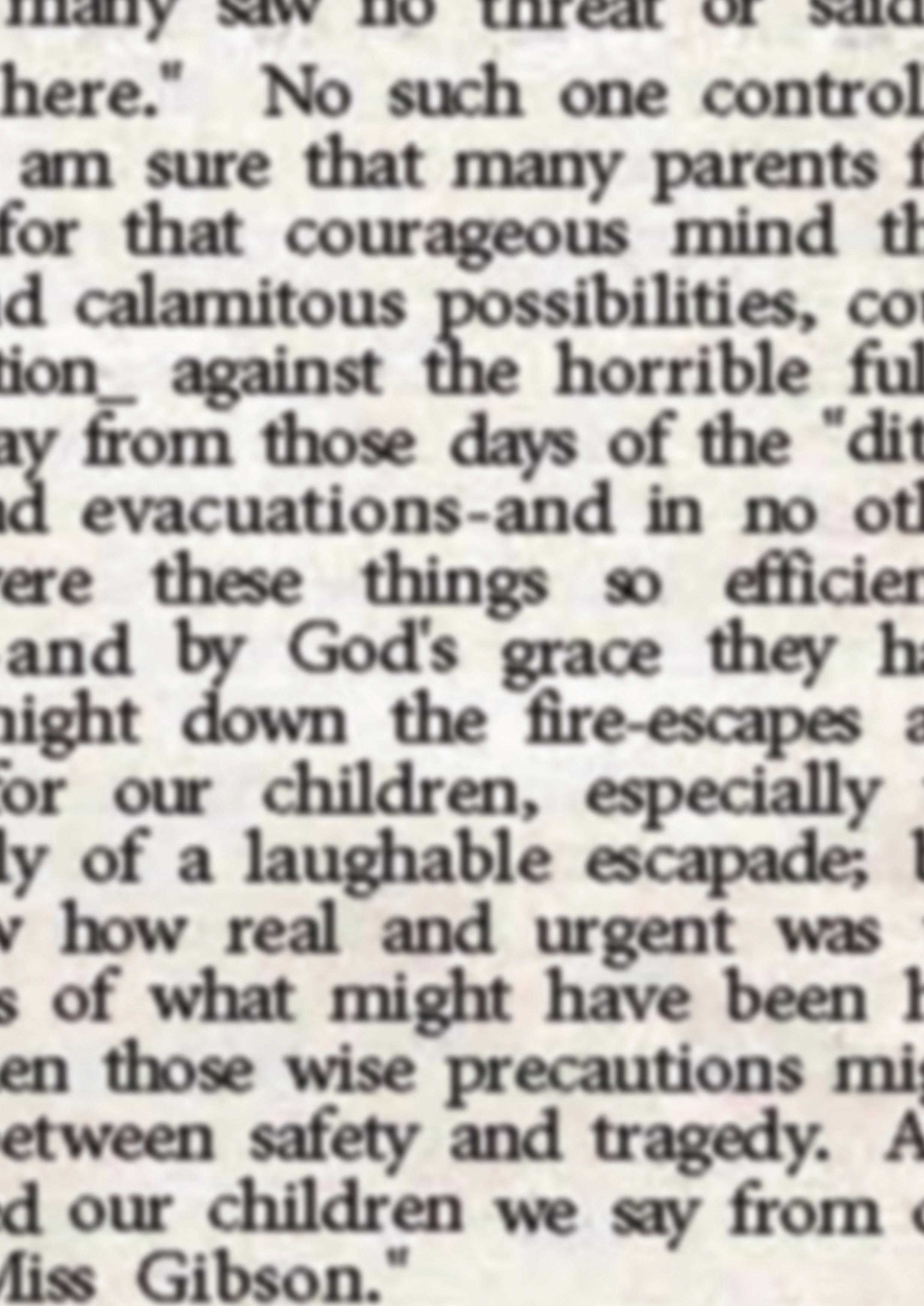
make without butter or sugar or eggs, and the dressmaking class turned to renovating old garments. They were told that “in wartime, clothes must be made to last longer.” The paper shortage affected the magazine; in 1943 it was down to twenty-eight pages of poor-quality paper, with no space for contributions from the girls.

Rangi Ruru again faced challenges when the 2010/2011 Christchurch Earthquake sequence left buildings damaged and spaces unusable. The school closed briefly for building safety and damage assessment. Roll numbers fell as families left Christchurch. Red stickers appeared
on buildings. Temporary classrooms sprang up on the field, and the business of teaching and learning continued. The damaged buildings were demolished and replaced with the learning spaces we have today.
Whatever the future years may bring, we are grateful for the dedication, foresight, grit, and generosity shown by so many over the past 134 years, enabling our school to be what it is today.
Words by Johnann Williams RANGI RURU ARCHIVIST

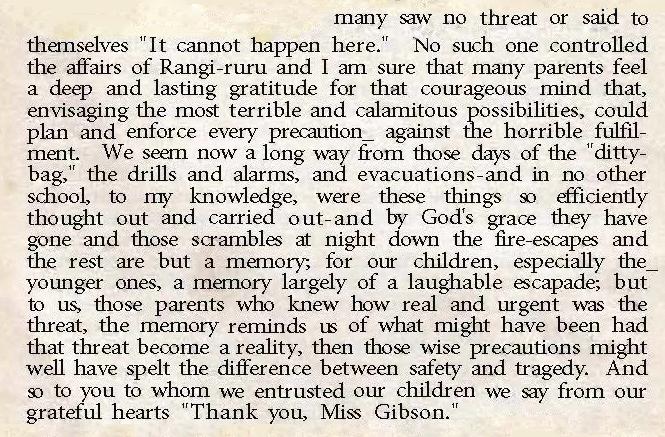
100 YEARS
“
By 1942 the threat of invasion was real, and a trench was dug in the field parallel to Hewitts Road. Boarders went to bed wearing name tags; they were not told that these were to help identify their bodies should the House be bombed.
Helen Robilliard’s ditty bag with cotton wool for ears in the event of an air raid and cork to put between the teeth to prevent students making noise.
WIDE SKY WINTER 2023 25
A parent’s letter of appreciation.
boarding STORIES
Sally Fail our Year 7 & 8 Dean, shares some memories of the time she spent at Rangi Ruru as a boarding student from 1991-1995.

“TeKohara, a beautiful home away from home for some, and a haunted house to others. In what was the dorm in the top corner of Te Koraha, closest to the canteen, there was a wardrobe. If you pulled out all the drawers of the wardrobe, there was a small tunnel. Rumour has it a student once hid down there, got stuck and never returned and her ghost remains there today. Boarding looked slightly different when I was a boarder at Rangi Ruru, with third, fourth and some seventh formers living in Te Koraha. In today’s speak, that’s Year 9, 10 and half of Year 13. We lived in dorm rooms, ranging in size from 8 to 12 beds, the smallest had four. Living in close proximity with so many girls for 15 weeks at a time meant three things:
• You learnt how to share everything (and your wardrobe was never-ending)
• You learnt to get on with a huge number of people
• You learnt how to create your own fun, and fun we did have!
We were allowed home only every third weekend, every other weekend we were in the house. We could go to sport, or to town perhaps and it was fortunate if we happened to bump into friends by chance at the Hagley Park bridge near Christ’s College on our way. Once a week on a Tuesday or Thursday we also got to go to town or to Merivale. Calling home to speak with our parents was a little different, with three phones in phone boxes that we had to queue for. These phone boxes are now toilets in Te Koraha.

I asked my friends about their memories of boarding in Te Koraha and overwhelmingly, the most common response was about the desserts. Ambrosia, Mississippi mud, and icecream and caramelised cornflakesaffectionately called scabs. We had to sit at tables of nine with a Year 13 at the head, then with two from each year group down the table. We were at these set tables for half a term, and it was a great way of getting to know boarders from other year levels. The pride (and power) you felt when you finally made it to the head of the table in Year 13 was something to aspire to. Desserts aside, if you asked me what my favourite thing about being a boarder was, it would be the people. The sense of community and comradery really was something else. Of the boarders in my year, we are all still connected in some way and will remain friends for life. Te Koraha was the building that brought us together and, haunted or not, will always be a special place for us.”
Words by Sally Fail YEAR 7 & 8 DEAN
ur , 1992.
WIDE SKY WINTER 2023 26
“Aboarder’s life at Rangi Ruru is special, it is a privileged experience, a home away from home, where you create a whole new family and memories. To be a boarder is to embrace diversity, learn to be your best, expand your interpersonal skills and make life-long friendships and connections.
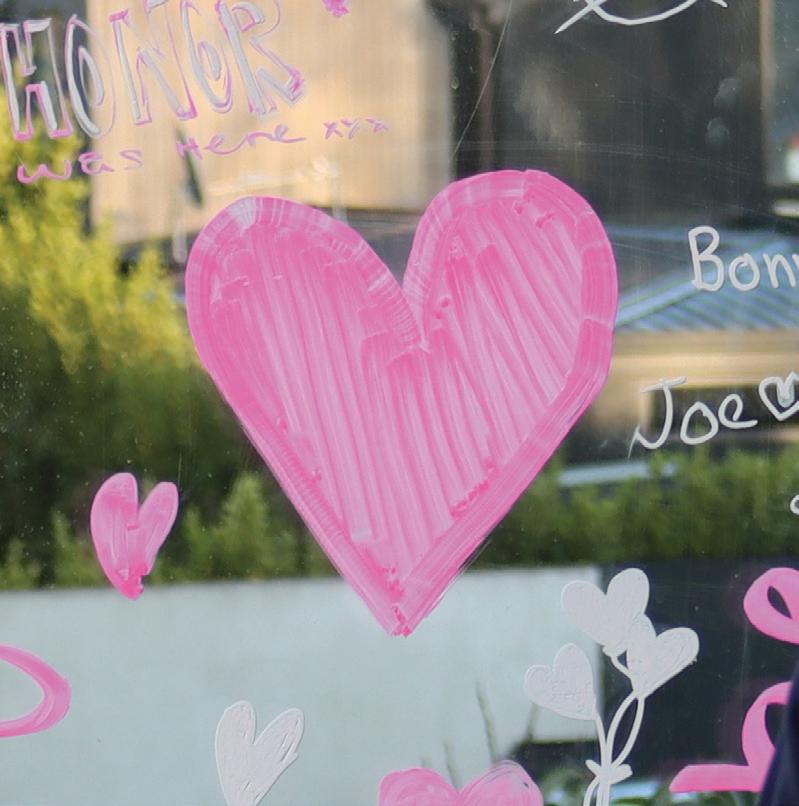
The boarding house, although hard to believe, runs just like a normal household but with a bit of a fun twist! Every month our girls will have events with other boarding schools, formal dinners, year group and Clan catch-ups and weekend activities to get involved in. Being involved, getting amongst it all and having grit is what our boarders embrace so well. One thing the boarders take pride in and are well known for is the boarders vs day girl haka. One thing I love about being a boarder is how you are encouraged to be independent, not only by the staff but more importantly by your friends and other year groups that you are surrounded by.
When I look back at the years I have had as a boarder, there are too many highlights and ‘best bits’ that could possibly sum up my Rangi Ruru boarding journey. The best way to explain it is the feeling you get when you run into an old friend, the feeling of familiarity, love, and understanding. It’s knowing that no matter what direction you go in (or relationship you will keep) you will always be connected – which is something unique about being a boarder. The best decision I have ever made was to come boarding, as it has equipped me for life outside of high school and provided me with so many opportunities and development, I would not have received anywhere else.”
Words by Sarah Griffiths 2023 HEAD OF HOUSE



BOARDING
Sarah Griffiths, our 2023 Head of House, gives her impression of boarding at Rangi Ruru.
WIDE SKY WINTER 2023 27
SECRETS TOlongevity
RROGA Past President Felicity Williams, caught up with Lyndsay Harrow and Rosemary Page about their time at Rangi Ruru and the key to living a great life.
One of Lyndsey’s earliest memories is of her mother taking her to the J. Ballantyne & Co department store in early November 1947, to be measured for her Rangi Ruru dresses, in the days of having made-to-measure uniforms. However, 1947 was also the year of the Ballantynes fire which engulfed the building, and 41 lives were tragically lost. As a result, Lyndsey, along with many other new students missed out on getting their made-tomeasure uniform that year. Anxiety levels were high enough starting at a new school, but to start without a uniform was added stress. Luckily, her friend Margie Free knew of girls who had just left school, and she
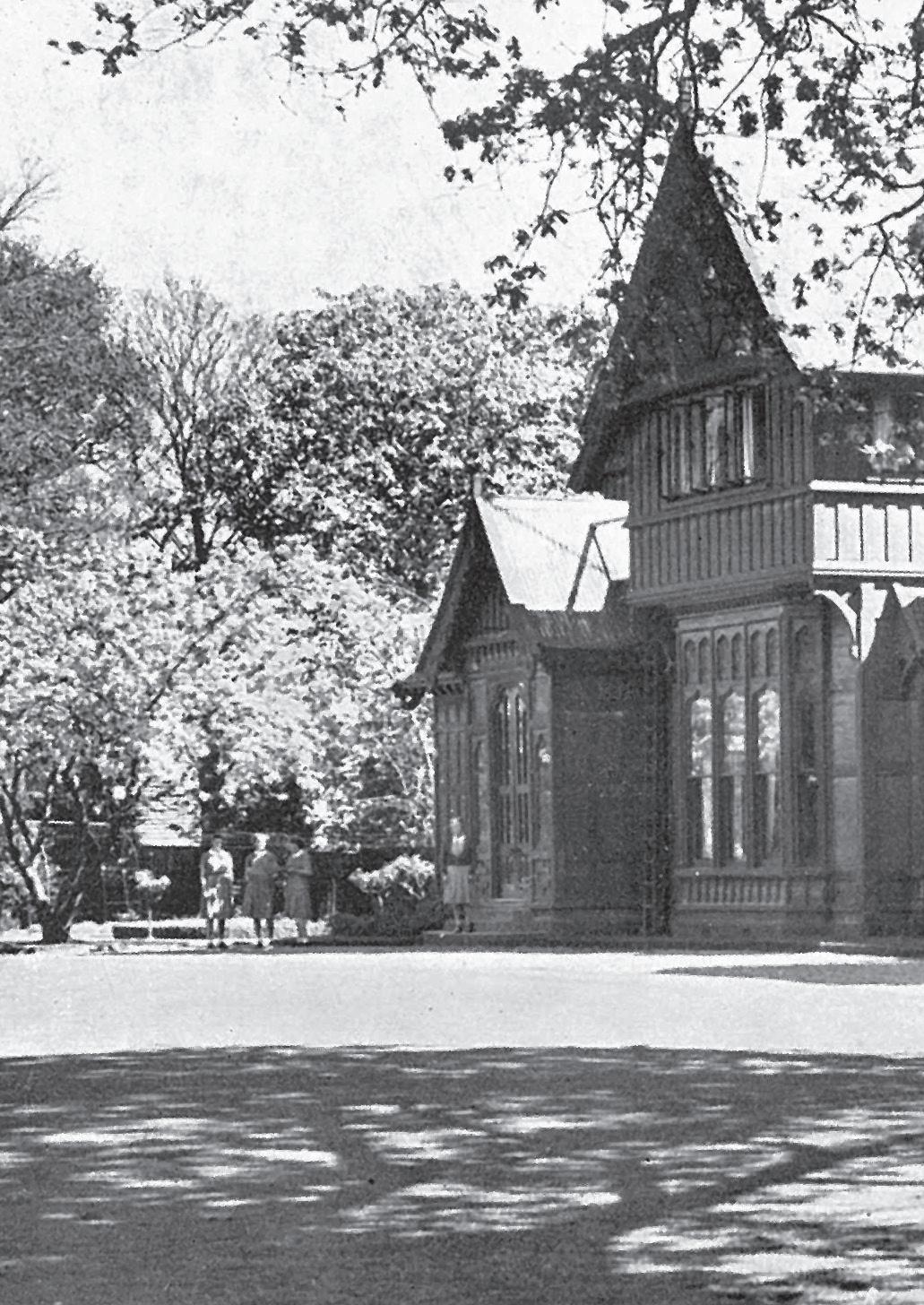
was offered their dresses. Although the dresses were the older style, Lyndsey was simply grateful to have something to wear. As fate would have it, the 1948 academic year was late starting due to the polio epidemic. When school eventually got underway, the Ballantynes dressmaking department called to let the family know her made-to-measure student uniform was now ready. When asked about what Lyndsey remembered of her time at school she recalled, “I was thirteen years old when I began in Form 3; we lived on Idris Road, and I went to school on my bike. History, Latin, French, English and math were some of the subjects I took, and

a lot of our learning was by rote, much different to the way students learn today. Interestingly, our year group was the first to be accredited for University Entrance.” After leaving school Lyndsey trained for two years to be a kindergarten teacher, with her first job being at Risingholme Kindergarten in Opawa, she then taught at Pitcairn Crescent Kindergarten. Later she would become the director of St James Church Kindergarten, Riccarton. When asked what she considers to be the secret of longevity, “I think a lot of it is luck, genes. I have my garden. I walk most days. I swim at the beach on fine days in the summer.”
 Lyndsey Harrow in Class Photo 1951 fourth from left, top row
Lyndsey Harrow and her sister Alison Erikson
Lyndsey Harrow in Class Photo 1951 fourth from left, top row
Lyndsey Harrow and her sister Alison Erikson
WIDE SKY WINTER 2023 28
Lyndsey Harrow (née Alston) 1948 to 1951
She remembers kicking up a terrific fuss when she was told she was going to Rangi Ruru because she had her heart set on Teschemakers, a school in Oamaru, “You see, you could take your horse there!”
Rosemary was destined to go to Rangi Ruru, her mother Majorie Ensor (née Andrew) and Aunty May Myers (née Andrew) were Old Girls when the school was located at Webb Street and made the move along with contemporaries when it relocated to Hewitts Road. Rosemary’s older sisters, Helen and Virginia also attended the school.
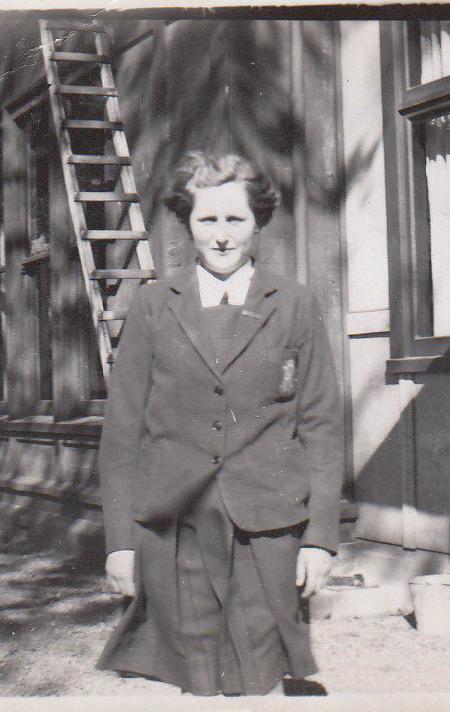

A country girl, and thus a boarder, Rosemary commenced her schooling days at Rangi Ruru in 1947. She remembers kicking up a terrific fuss when she was told she was going to Rangi Ruru because she had her heart set on Teschemakers, a school in Oamaru, “You see, you could take your horse there!” Nonetheless, Rangi Ruru it was. Back then, boarders weren’t allowed to go home at all for the first term and then only once a term after that.
“I think I was about 12 years old when I started. The principal was Miss May
Farquharson (1947-1947). She left like so many to get married, as did Miss Mason, and she was followed by Mrs Patrick, who was a widow, and that must have been allowed, because she stayed for many years.”
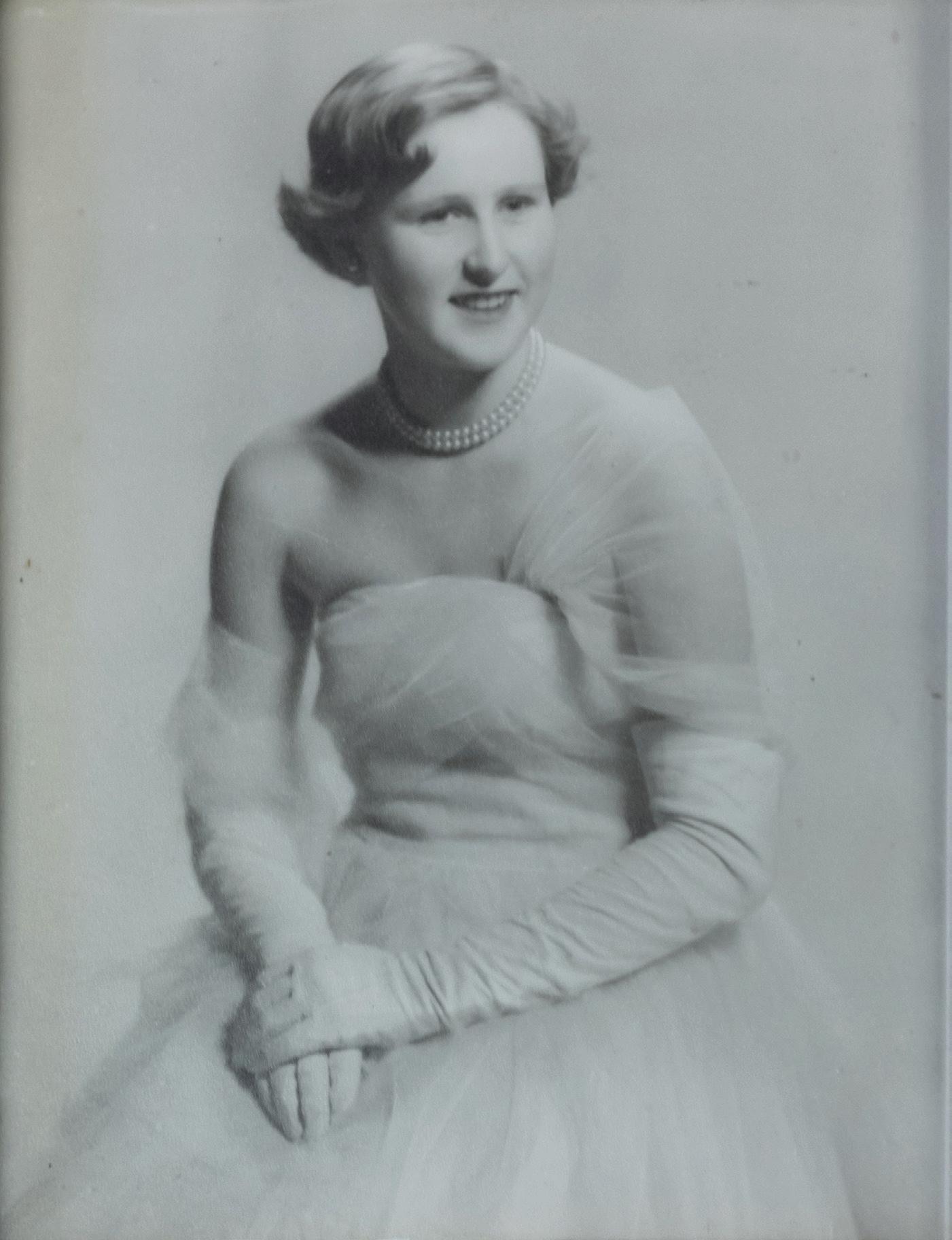
Whilst at school, Rosemary loved sport, playing tennis and hockey, but admits on the educational side of things it was a bit of a hit and miss. She remembers Miss Paul, an outstanding teacher who helped guide her through academically. “She made up for the rest”.
When asked what she considers to be the secret of longevity, “Being very active! I played sport all my life, got to a low handicap in golf and I try and stay mentally alert by playing bridge, golf and croquet. I don’t take any medication at all!” Sounds like sage advice from one of our treasured alumnae.
 Rosemary by Miss Mason’s Flat 1949
Rosemary Page, Jeanette Goldwater and Suzanne Van Asch 1947
Rosemary by Miss Mason’s Flat 1949
Rosemary Page, Jeanette Goldwater and Suzanne Van Asch 1947
ALUMNA
Rosemary Page’s debutante photo
Rosemary Page (née Ensor) Class of 1949, attended 1947-1952
“ WIDE SKY WINTER 2023 29
FROM COTTAGES to suites
Jessie Cook was a student at Rangi Ruru in 1908, when piano lessons were taught and supervised by the Gibson family. Girls gathered around the piano in Te Koraha for the drilling of scales followed by singing. It would be another thirty years until a choir was formed, which sang in the New Zealand Jubilee celebrations at Knox Church, and in 1945 music was formally introduced and became available as a School Certificate subject.
After the sale of Rangi Ruru to the Presbyterian Church in 1946, the then principal saw the value of music beyond singing. The choir was redeveloped, on Sunday nights there were ‘singsongs’ in the headmistress’s room, and a small orchestra was launched.
During this time there were no purposebuilt music facilities, however by 1951 the school roll was growing rapidly, and more buildings were urgently needed. The Board started purchasing neighbouring properties, and in 1959 the house north of Rangi Ruru on Hewitts Road officially became the school Music Cottage. With the establishment of dedicated facilities, music developed further during the 1950s and 1960s. The choir went from
strength to strength, the orchestra was revived after a short recess, and piano lessons were still very popular. In 1966 the Music Cottage made way for the new combined hall and chapel, with a music classroom at the back. It wasn’t until a dedicated music teacher was employed that real progress was made, particularly in orchestral music, with itinerant music teachers brought in and the music and drama departments collaborating with St Andrew’s College.
After her appointment to Head of Music in 1974, Miss Glenys Drummond helped cement music as a strength of the school. There were tours and exchanges throughout New Zealand and Australia, and chamber music and a jazz band were

formed. During this time, music was also available as an academic subject at all levels. All of this activity attracted some of Christchurch’s top instrumental and vocal teachers to Rangi Ruru, despite the music facilities being adequate but still fairly basic.
As the music curriculum changed to more performance-based courses there was provision of, as part of the school’s centenary building project, a spacious new music suite. This included teaching studios, offices, meeting and storage spaces, a recording studio and two large classrooms/rehearsal spaces.
Fast forward to 2023, and we find ourselves in the magnificent Performing Arts Building, opened in 2015 as part of
WIDE SKY WINTER 2023 30
Rangi
Ruru orchestra in the late 1950s
the post-earthquake campus masterplan Project Blue Sky. Moving into this facility was an exciting milestone. A sense of ownership and community was easily and quickly established in a venue that supports and enhances learning through the provision of collaborative and acoustically appropriate spaces. New ventures have also been established. From humble beginnings in the late 1960s with the percussionist in the orchestra using an upside down rubbish tin for a drum, percussion has become a ‘tour de force’, with percussion ensembles and a large collection of high-quality orchestral percussion and band instruments. Rock bands are flourishing, with songwriting and music technology taught in the
commercial music programme. Music scholars and high-achieving musicians are provided with enrichment and extension through StEP (Stellar Enrichment Programme), supporting all aspects of their music learning and wellbeing.
The long tradition of musical excellence at Rangi Ruru is testament to the foresight and wisdom of past and current principals and Boards. Facilities do make a difference to a programme, but at the heart of teaching and learning are people, including the passionate staff who give so freely of their time and talents to nurture students whose musical curiosity is given a chance to flourish and become an essential part of who they are.
Jessie Cook would be astounded to know
Facilities do make a difference to a programme, but at the heart of teaching and learning are people, including the passionate staff who give so freely of their time and talents...
that her legacy lives on over 100 years later through the awarding of the Jessie Cook Music Scholarship. She would also find it hard to believe that Rangi Ruru is today one of the top-performing schools in New Zealand for music with magnificent purpose-built facilities housing a diverse and comprehensive student-centred programme in classroom, choral and instrumental music, and music technology.

 Words by Janet Kingsbury DIRECTOR OF MUSIC
MUSIC
Words by Janet Kingsbury DIRECTOR OF MUSIC
MUSIC
“ WIDE SKY WINTER 2023 31
the archivist
GUARDIAN OF OUR HISTORY
While the Gibson sisters were planning the move to the Te Koraha site in 1923, Ethel Gibson somehow found time to begin a school magazine. Prior to this date there were few written records existing.
WhenMargaret Belcher worked on the first history, A History of Rangi-ruru School, published for the 75th Jubilee in 1964, she found only one admission register for the period. To build the story she had to seek reminiscences, interview past pupils and scour newspaper records. In 1981 Helen Kitson realised no record had been kept of students who attended the school in its earliest days. She began the compilation of the school list, a project that would take ten years and grow to become The Rangi Ruru School Register. In 1985 Rosemary Britten was commissioned by the Board of Governors to write a History of Rangi Ruru, to be published for the School Centenary in 1989.
Without the work of these four women Rangi Ruru would not have the archives it has today. Helen Kitson (née Robilliard, a student from 1939–1947) not only collected details of the students who had attended from 1889 until 1999, she also began collecting school magazines, photographs, papers, objects, and memorabilia. These items and the material gathered for the published histories form the core of the archival collection we have today. In 2004 Bruce Russell, a professional archivist was contracted to organise the material and set up the archives. Geraldine Pickles built on his work, and the collection was housed in Te Koraha until 2011 when the earthquakes damaged the building. For the next few years, the archive boxes were in storage and the archives were closed. When the Old Girls’ Association refurbished the original Science Building in 2014 a room was set aside for the archives, however at this point, the archives were still fairly inaccessible. The school needed access to its story, architectural plans, and business office papers.
I had studied History at university and I was a trained librarian. I undertook some more study in archives management and put a case for adding the archives to my then role as school
librarian. Since 2019 I have been working in the archives two days a week and the role has changed and grown.
Unlike books in a library, archives aren’t generally on display. Archivists aren’t gatekeepers, but guardians who record and organise the material so it can be retrieved and used now or in the future. I find pleasure and challenge in searching the stored material, opening and viewing the varied aspects of Rangi Ruru’s story. From setting up a display for the annual year group reunions; researching information and finding images for presentations or publications; supporting learning as students look at the history of Rangi Ruru and their place in that story; to simply tracking the record of someone’s great-grandmother in her time at Rangi Ruru (and perhaps finding a photograph the family has never seen!).
The greatest demand from within Rangi Ruru is for digital images to be used for education, communication or promotion, and there is a growing expectation that archival material will be available online for ready access. I continue to explore the best ways to make that material easily available to the school community. While the Covid-19 pandemic restricted activities, the gallery beside the archives sat unused. My hope is that it will now be more of a museum/display space where the Rangi Ruru community can see the treasures currently tucked away in archive boxes.
When Margaret Belcher set about writing the first history of Rangi Ruru many early students were still alive to help fill out the story. One hundred and thirty-four years later that story is still unfolding, and we need to gather and protect the evidence of that for those that follow.
Words by Johnann Williams RANGI RURU ARCHIVIST

WIDE SKY WINTER 2023 32
Archivists aren’t gatekeepers, but guardians who record and organise the material so it can be retrieved and used now or in the future.


ARCHIVES
We would like to thank Johnann for her extensive work in planning and preparing content for this 100 year celebratory edition of Wide Sky. “ WIDE SKY WINTER 2023 33

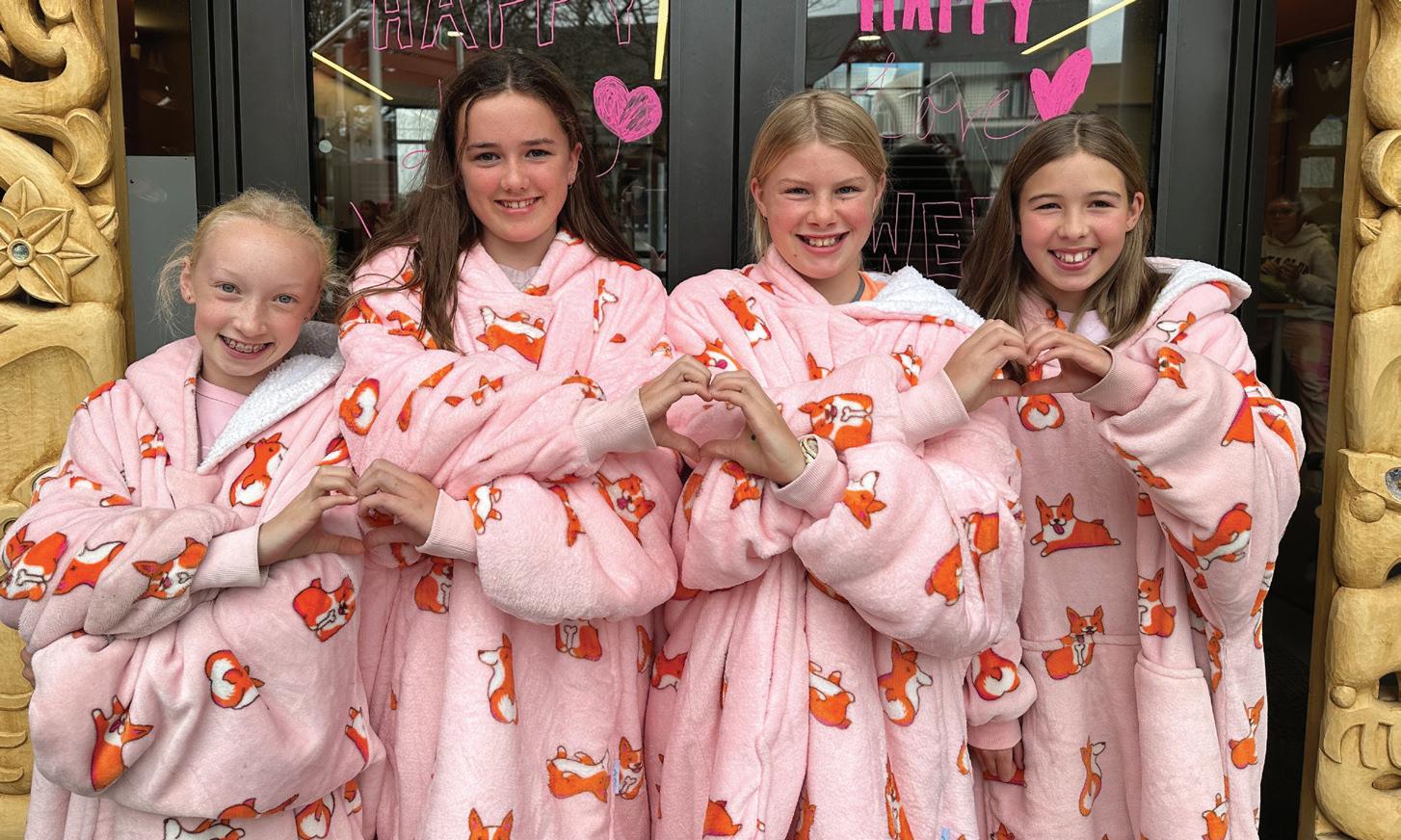

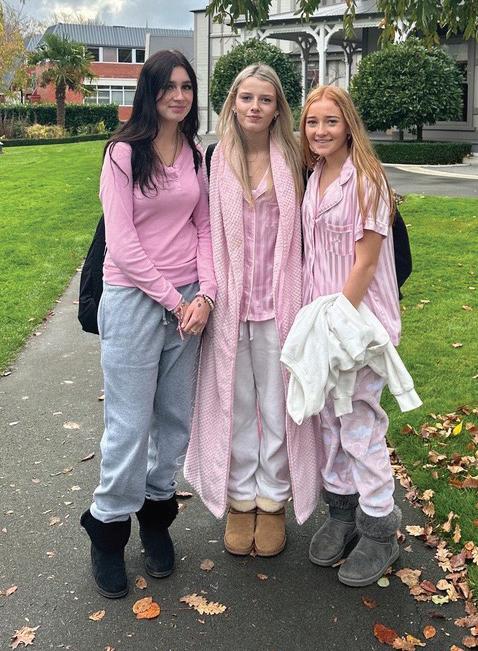

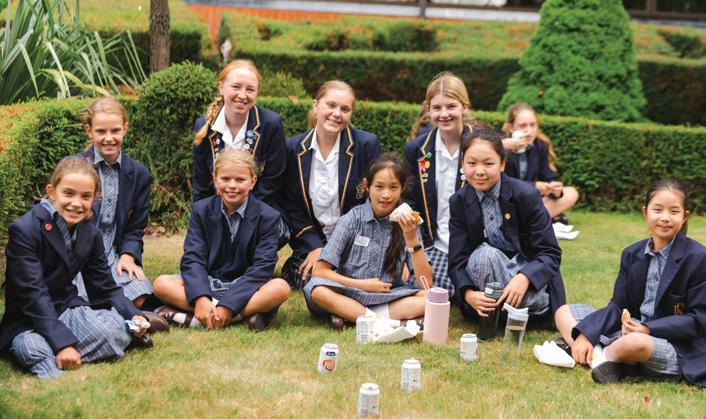




EVENT highlights WELCOME BACK • BOOK DAY LOVE DAY • ATHLETICS DAY WIDE SKY WINTER 2023 34

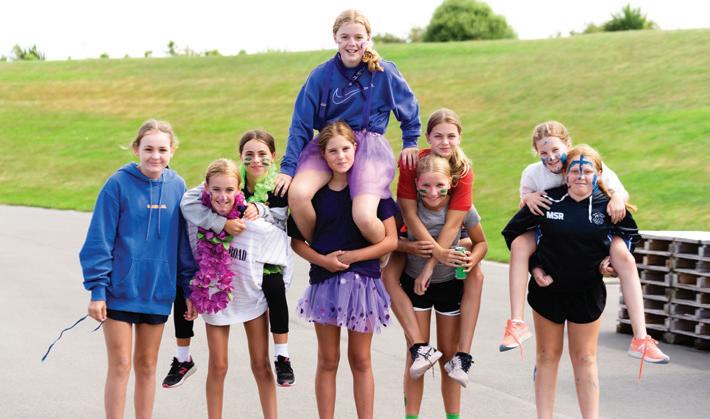





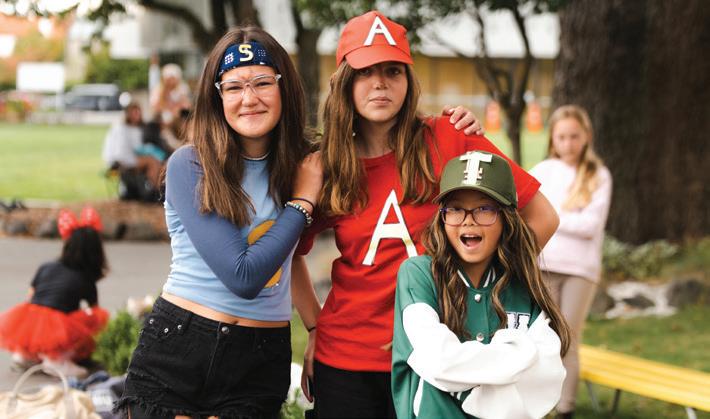
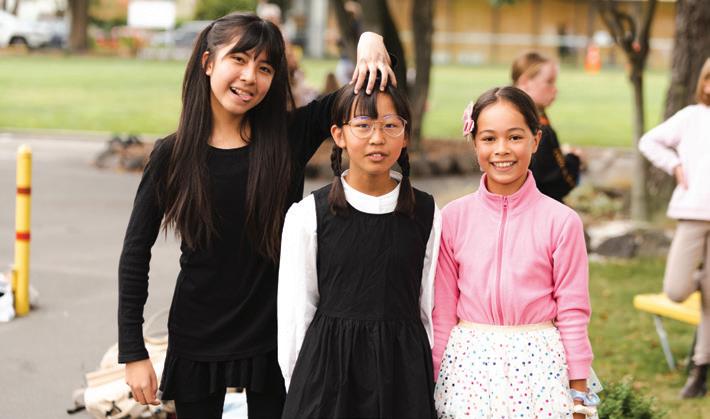
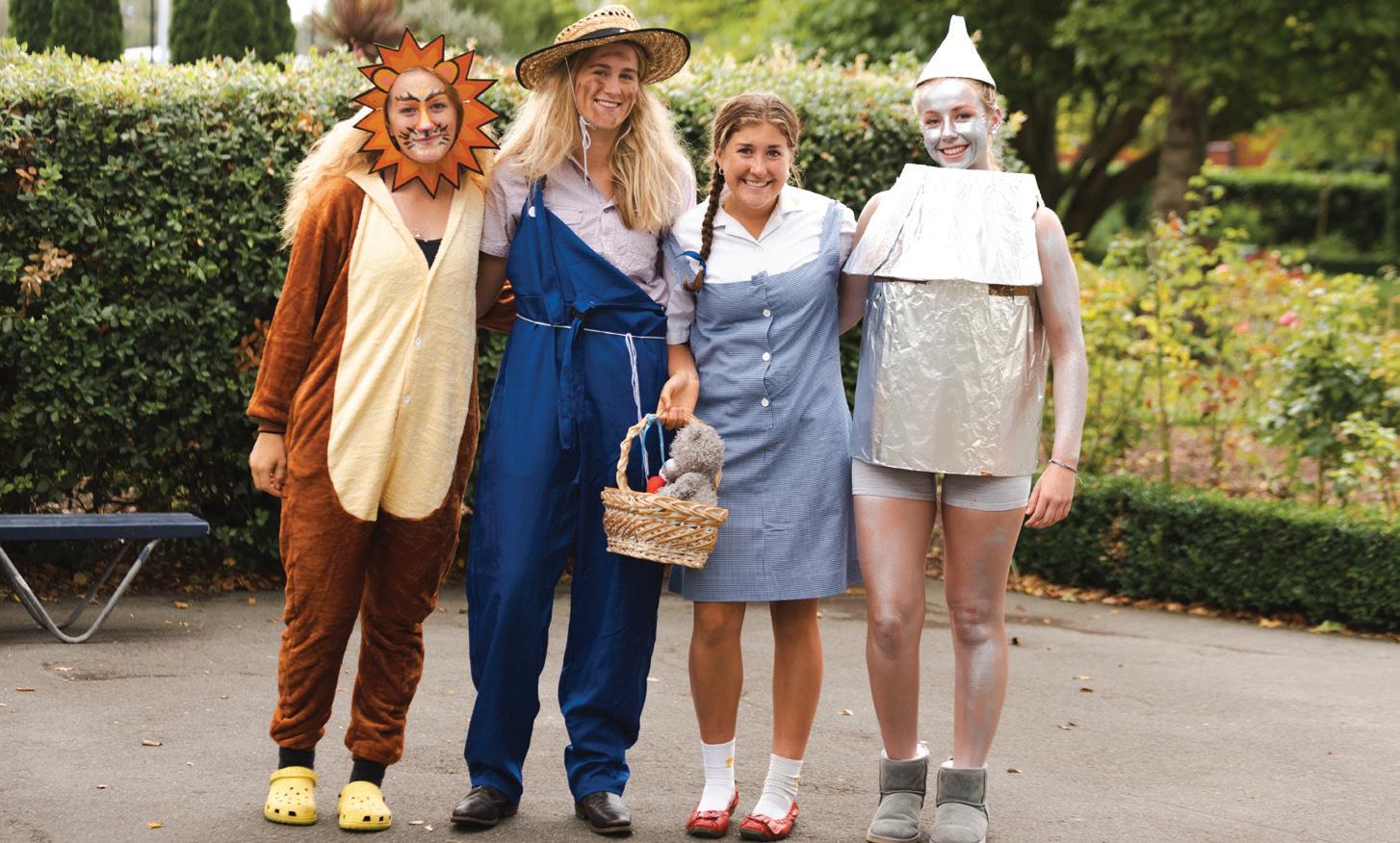
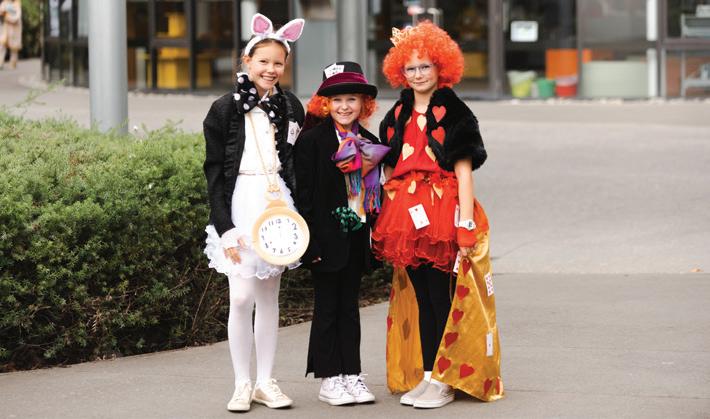
PHOTO GALLERY WIDE SKY WINTER 2023 35
HE KŌRERO A KURA – THE RANGI RURUcultural narrative
In 2021, Rangi Ruru started working with Old Girl Mapihi Martin-Paul (Class of 2011), who is a strategic advisor at Boffa Miskell, to prepare our Cultural Narrative Report in conjunction with staff, students, iwi and other community members. The report provides insight into the cultural history of the school and its surroundings, to allow for these aspects to be acknowledged, respected and shared.
RANGI RURU AND OUR MOTTO
The name Rangi Ruru was gifted to the school by Ngāi Tahu Rangatira, Paora Taki, who met Captain Gibson whilst serving as an assessor for the Native Department. When the first school building was being constructed on Webb Street, by which time Paora Taki was well advanced in years, he suggested the name, meaning ‘wide sky shelter’.
The school motto ‘Seek those things which are above’ was chosen in 1953 by Old Girl Betty F Webb, and is from Colossians 3:1. The motto was later translated into Maori ‘Whaia to te Rangi – Seek the Heavenly Things’ and is a reminder that education cannot be limited to physical, cultural or academic studies only, but also must include the spiritual dimension if worthwhile values are to be sought in life.
THE SITE

The immediate landscape surrounding Rangi Ruru had a number of permanent and seasonal Ngai Tāhu settlements. The Ōtākaro/Avon River formed a major part of the network of trails that connected the wider region. During a recent visit to the school by Ngā Tūāhuriri, it was identified that the school site had previously had significant navigational cabbage trees. The school has recently planted cabbage trees onsite to acknowledge this historically important part of the grounds.
BUILDINGS
Te Koraha was the name of the land which the campus now sits on, and which we now know as the original homestead built by Arthur Rhodes. In 1964 Rangi Ruru purchased 74 Hewitts Road and opened it as the boarding house ‘Moerangi’, meaning the sleeping place. An additional house ‘Tuarangi’ meaning ‘the house on the other side’ opened in 1970 at 66 Hewitts Road. In 2002 a new boarding house was opened named Te Whare Aroha o Rangi Ruru, meaning ‘Loving House of Rangi Ruru’.
In 2014 after the earthquakes the Mana Wāhine (meaning strong women) building, housing social sciences and student services opened. Riki Manuel was engaged to create the carvings that now adorn the building, and include carved forms of Helen and Ethel Gibson, who are turned inwards welcoming those who enter the building.
In 2022 Rangi Ruru opened its most recent stage of the Project Blue Sky campus masterplan, Atawhai, the sport and multipurpose centre. The school was gifted the name meaning ‘to care with compassion’, by Ngā Tūāhuriri, a primary hapū of Ngai Tāhu. Paora Taki is buried at Tuahiwi and Ngā Tūāhuriri still hold his manuscripts and traditions within their community.
ART
The school’s art collection also includes many significant pieces by Māori artists, some of which can be seen in this edition of Wide Sky on pages 20 and 21.
LOOKING FORWARD
Rangi Ruru is working to continue to nurture and enhance our bicultural heritage and have ongoing connections with mana whenua. Te Reo teacher Sherrilee Herangi-Harrison leads staff each Friday in waiata, karakia and to build cultural capability. The school has held parent huis and has established a cultural student leadership position and te reo is integrated into teaching and learning across the curriculum.
To continue to evolve our cultural responsiveness, it is important that our cultural narrative continues to be built upon and added to. We are on a journey of understanding both our past and future and have a responsibility to those who have gone before us and those who will come after us to ensure this understanding is strong and connected.
Words by Stu Munro HEAD OF MARKETING AND COMMUNICATIONS

WIDE SKY WINTER 2023 36
KO RANGI RURU TE KURA

KO TE KORAHA TE WHARENUI
KO MANA WĀHINE TE WHARE AKO

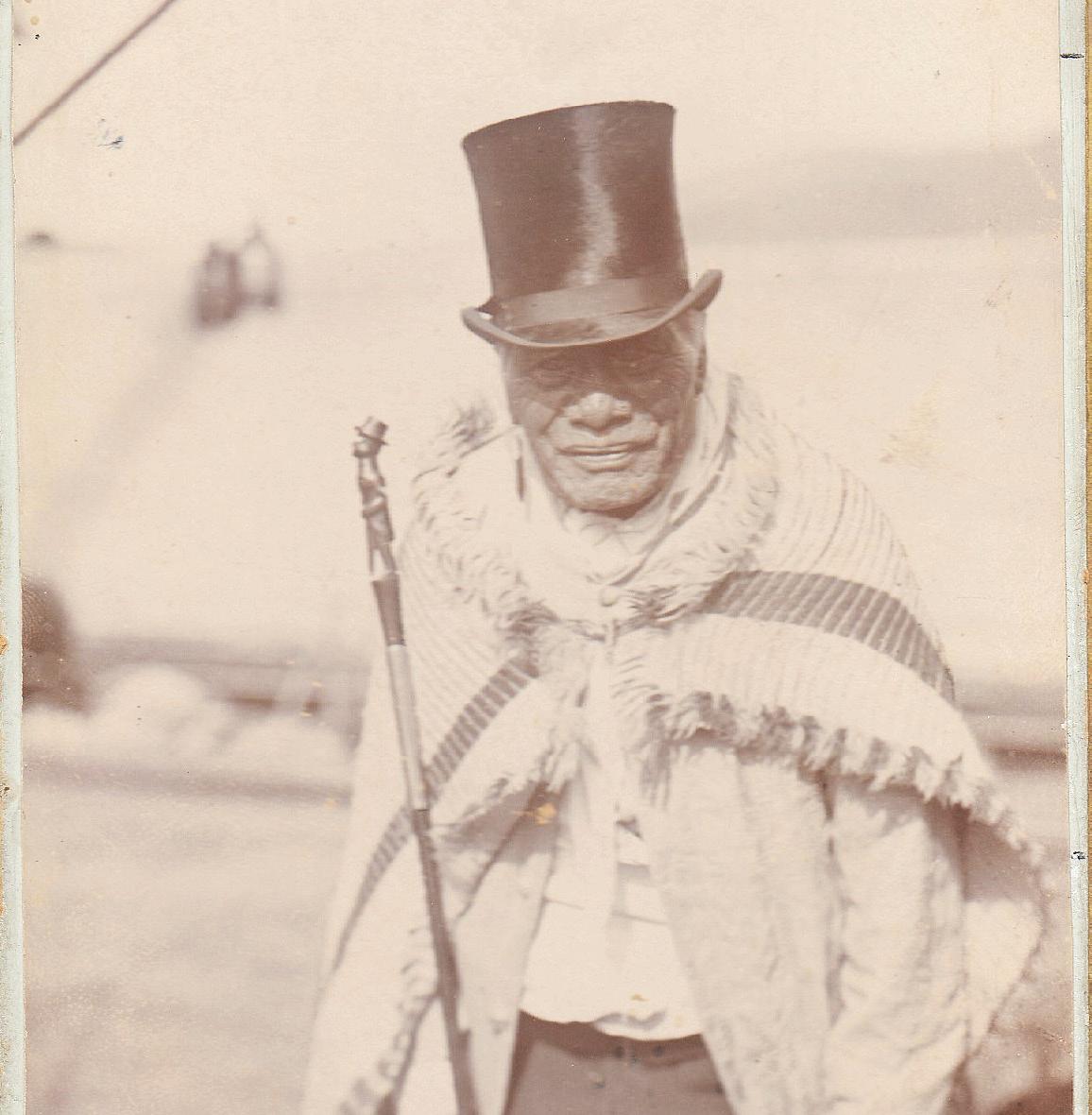
KO ATAWHAI TE WHARE HĀKINAKINA
KO TE WHARE AROHA TE WHARE NOHO

KO TĀNIKO TE WHARE O NGĀ REO
KO HATO ANARU TE WHARE KARAKIA

NgāiTahuRangatira,Paora
CULTURAL NARRATIVE
WIDE SKY WINTER 2023 37
Taki
SCHOOL GATES beyond
The educational landscape for girls back then was significantly different. Girls were less likely than boys to attend school, especially at secondary level, and girls’ education was often structured around traditional gendered roles and expectations. Academic lessons in grammar, arithmetic, Latin and French were supplemented with dressmaking, cooking, art, dance, swimming, music, and divinity at Rangi Ruru.
After leaving the school grounds, women faced various societal barriers that limited their educational opportunities. Access to tertiary education was restricted, and women were largely confined to traditional roles such as teaching, nursing, and clerical work; all deemed acceptable as they were perceived as extensions of their domestic responsibilities.
By the mid-1930s, young and progressive teachers arriving at Rangi Ruru were challenging the status quo, wanting to introduce more modern teaching techniques. While Miss Gibson was broadminded enough to introduce bookkeeping and shorthand into the curriculum, she remained unconvinced that science had any importance in the education of women. Up until the late 1930s girls looking to venture into scientific or medical careers had tuition elsewhere. Science was finally introduced to senior students in 1937 and it wasn’t until 1945, that it was taught throughout the school.
During Mrs Patrick’s time as Head Mistress specialist subject teachers were brought in such as Mrs Forster. On her arrival in 1954, unhappy with the poorly designed and stocked science lab, she started to positively transform the science syllabus beyond recognition.

THE
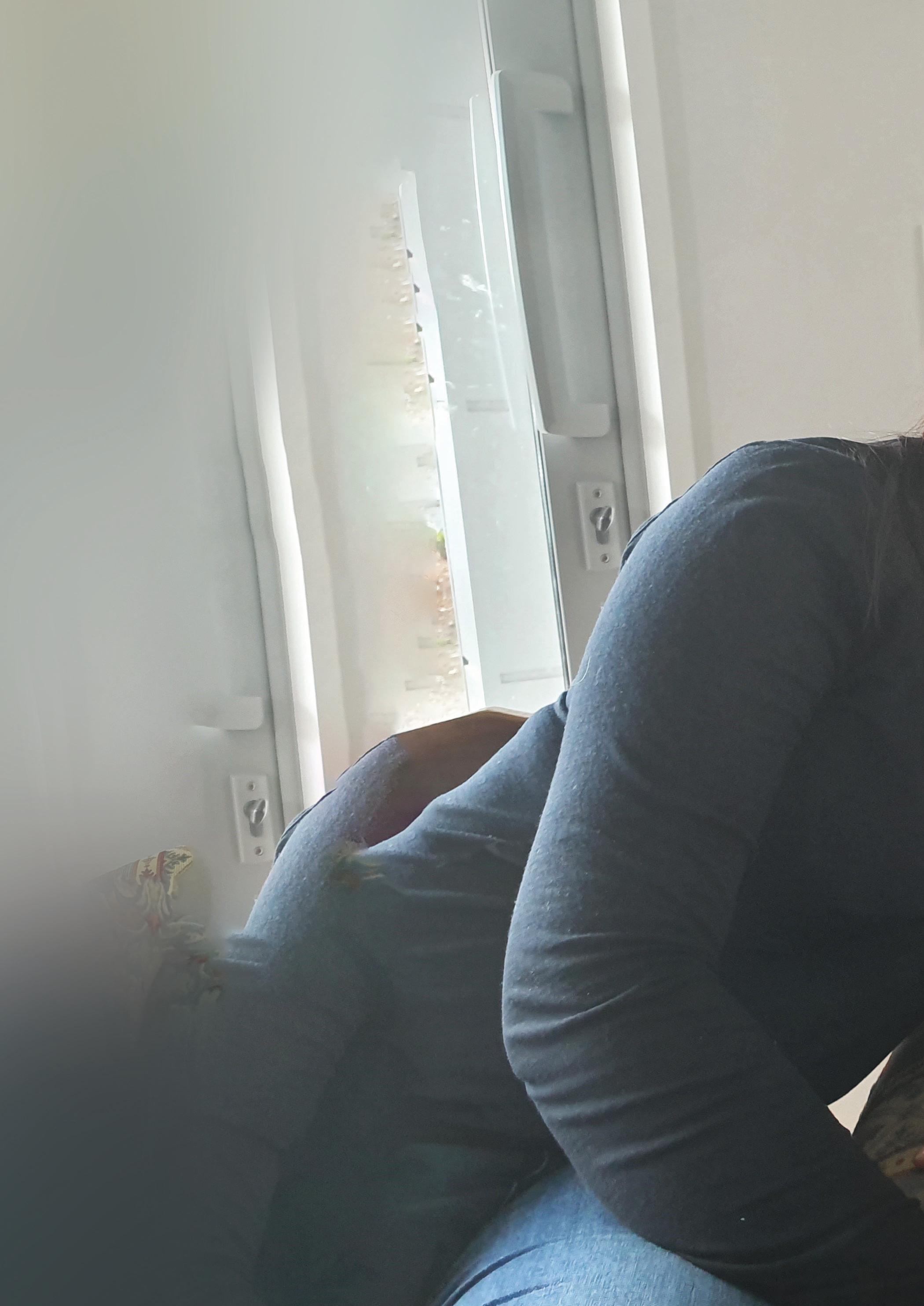
To discover that a student prior to this transformation, went on to break glass ceilings and make a significant contribution to the world of medicine, is inspirational. The late Marise Thacker (1951-1954) graduated medical school (MBChB Otago), in 1966, one of twelve female graduates in a class of approximately one hundred and twenty, before travelling to the UK where she gained her Diploma of Anaesthesia. On her return to New Zealand, she started work at Christchurch Hospital as an anaesthetic registrar, gaining Fellowship of the Faculty of Anaesthetists of the Royal College of Surgeons of England, in 1978. In addition to being competent and respected in her role as a specialist anaesthetist, Marise began researching adverse reactions during anaesthetics and would go on to play a pivotal role in anaesthetic allergy investigation. Her meticulous work resulted in her publishing one of the most comprehensive publications to date on the topic, as well as helping establish the ANZAAG (Australia & New Zealand Anaesthetic Anaphylaxis Group). Her humanistic approach and dedication to medical research was profound. Fast forward to today, and the secondary curriculum landscape has dramatically transformed, as have tertiary and vocational opportunities. 92-95 percent of Rangi Ruru students consistently go on to tertiary studies. Whilst medicine and associated health pathways are still popular, engineering, and environmental sustainability pursuits are becoming increasingly popular.
Crimson Education specialist Alexis Rose says she’s been amazed at the sheer number of students who are working towards professions in STEM. “I think it speaks to the quality of a Rangi Ruru
education that students have the confidence and opportunities to pursue fields that historically had significant barriers for women. At the same time, I’ve met with students who are planning to pursue such a wide range of careers. One aims to study fashion in Paris, another is set on becoming a pilot and hopes to attend an elite aviation academy in Dubai. Many others plan to pursue law and make an impact right here in NZ.”
Juliet Collins, Assistant Principal –Curriculum adds, “Where students may be headed, or think they are headed is rarely where they end up, they discover a whole world of choices beyond the school gates. Whilst Rangi Ruru provides students with the tools to go on to further study, it is the confidence instilled in students, that they can flex and change direction and manage themselves, and the belief that the unknown is an opportunity, not a roadblock, that is key to success.”
Little did Helen Gibson realise that her modest start would lead to a school of remarkable growth and significance, possibly surpassing even her own expectations. Could she have envisioned how high Rangi Ruru students would soar?
Words by Bridget Woodham COMMUNICATIONS MANAGER

Marise ThackerGraduation Day
In 1889, Helen Gibson embarked on a remarkable educational journey as she enrolled 18 young girls, aged five to sixteen, into a register and initiated lessons from her family’s residence on Papanui Road.
WIDE SKY WINTER 2023 38
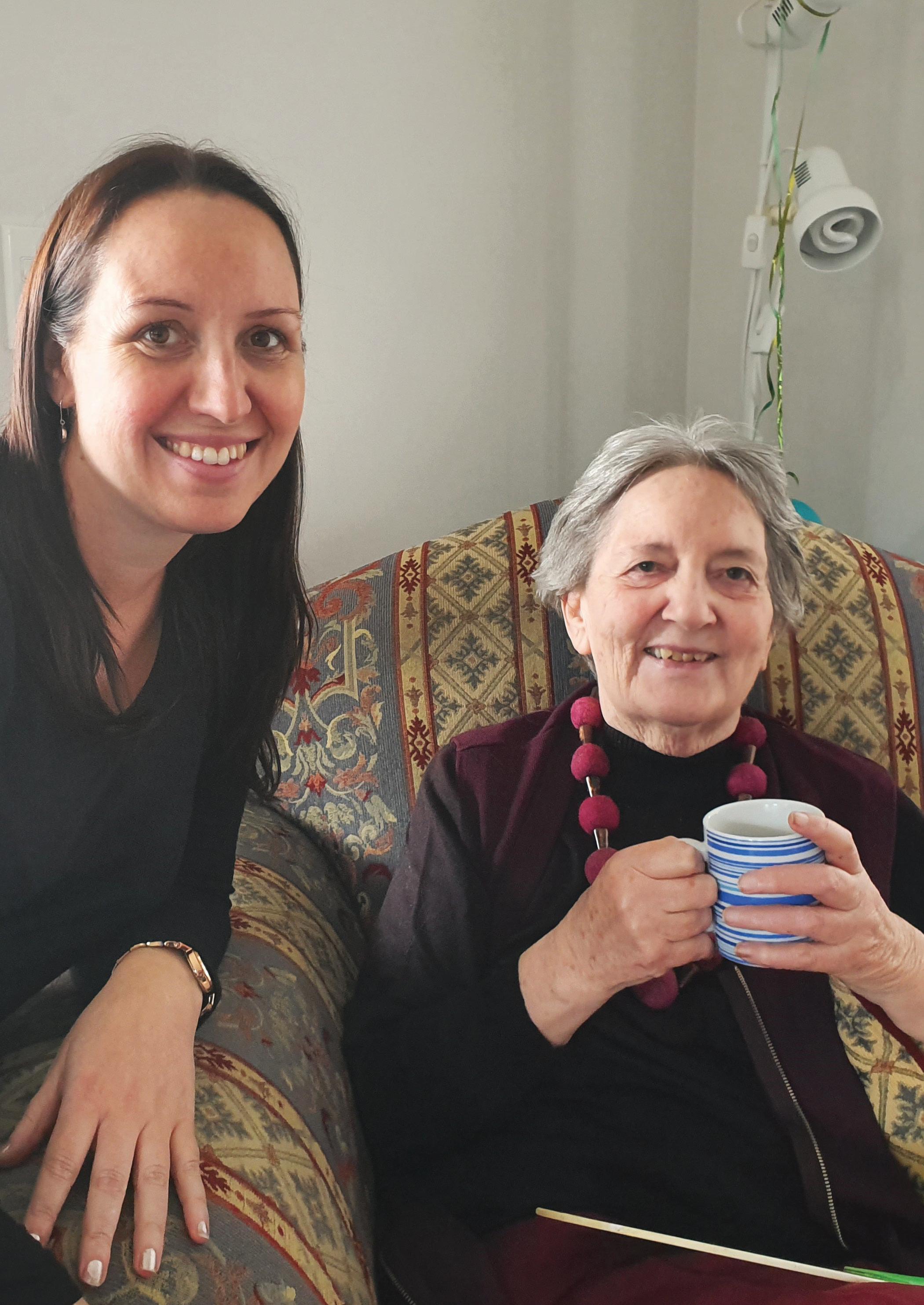 Niece Rachael Thacker (Class of 1996) and Marise Thacker (Class of 1954)
Niece Rachael Thacker (Class of 1996) and Marise Thacker (Class of 1954)
“ PATHWAYS WIDE SKY WINTER 2023 39
In addition to being competent and respected in her role as a specialist anaesthetist, Marise began researching adverse reactions during anaesthetics and would go on to play a pivotal role in anaesthetic allergy investigation.
EVENT highlights
2022 COMBINED SCHOOLS’ LADIES GOLF TOURNAMENT



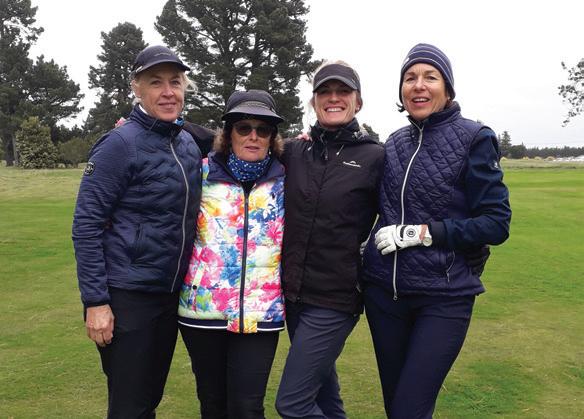
On a crisp September morning, RROGA hosted the annual Combined Schools’ Golf Tournament at Harewood Golf Club. The field consisted of 55 x 18 hole golfers and 16 x 9 hole golfers. It was encouraging to welcome new golfers to our tournament, as well as our regulars. A big thanks needs to go to the following wonderful sponsors: Lizzie de Lambert, ANZ Bank, Kiss My Putt, Peter Timbs Meats, Forewinds Clothing, Akaroa Cooking School and Libby Hilder.
Competition winners were:
Betty Murray Cup for Best Gross: Libby Hilder – Gross score of 96

Armstrong Cup for Best Net: Mandy Austin – Net score of 73
Ellece Royds Salver for Best Stableford: Jan North with 34 points
Parents & Friends Cup: Julie Livesey
Helen Kitson Putting Spoon: Tanya Moore
Thanks to Ali McQueen, Mandy Brazier, Helen Joblin, Tamara Tait, Margaret Black, Jo Dodgshun, Victoria Gibbons, Jennifer Prior, Lib Hutchinson and Libby Harrop, who assisted with this event. Also, a big thank you to Juliet Collins for assisting with the prize-giving.


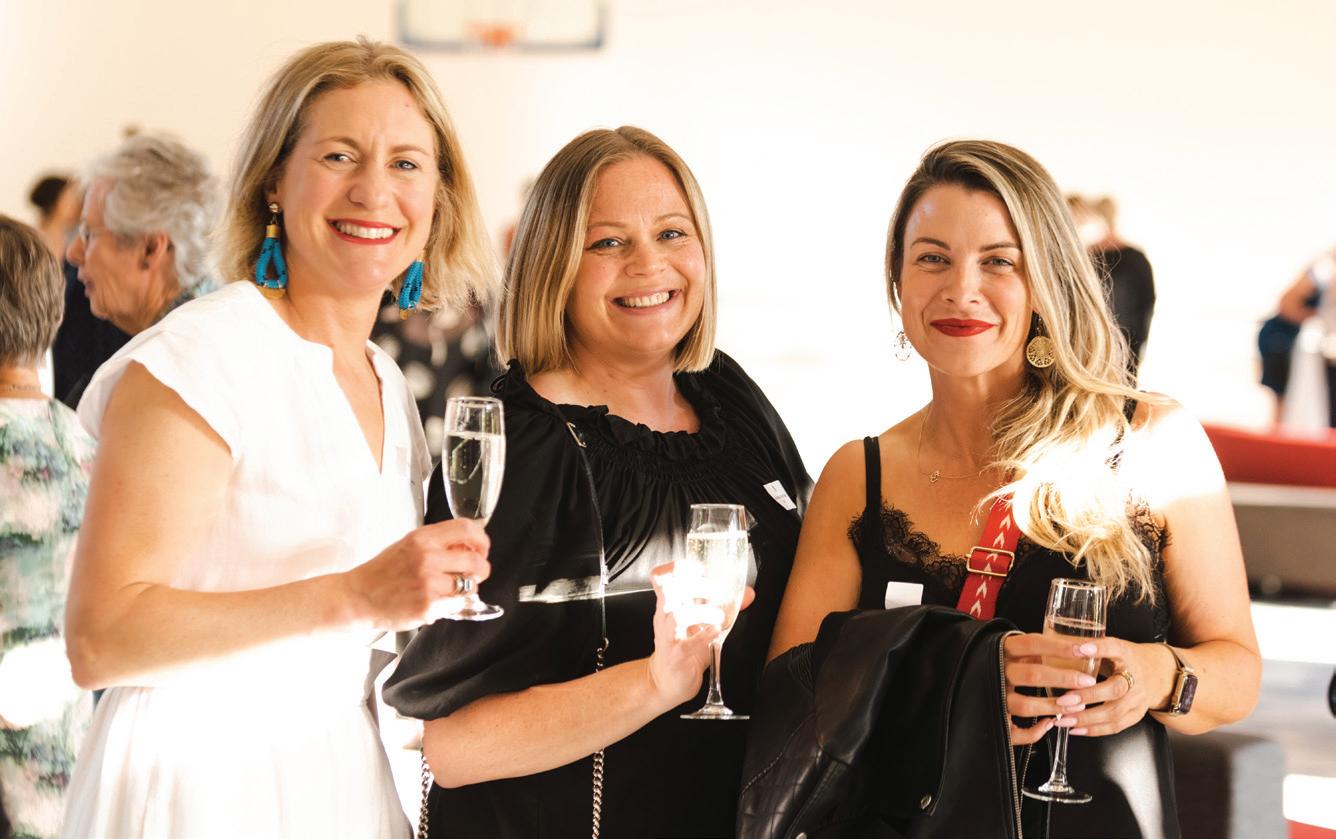
REUNIONS LADIES GOLF WIDE SKY WINTER 2023 40
LEAVERS BALL 2022




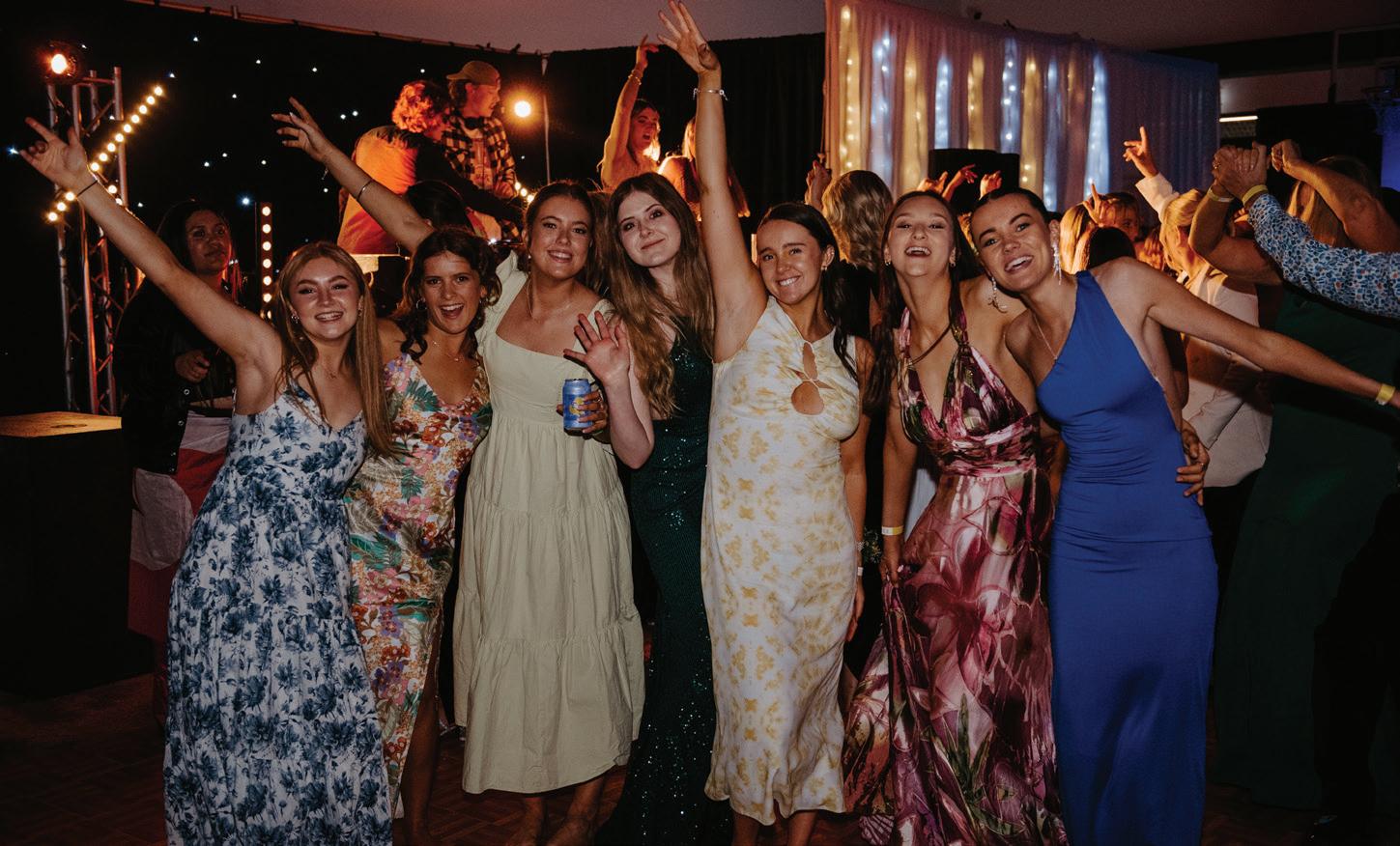


RROGA EVENTS
WIDE SKY WINTER 2023 41
ALUMNAE STORIES: THE catch up


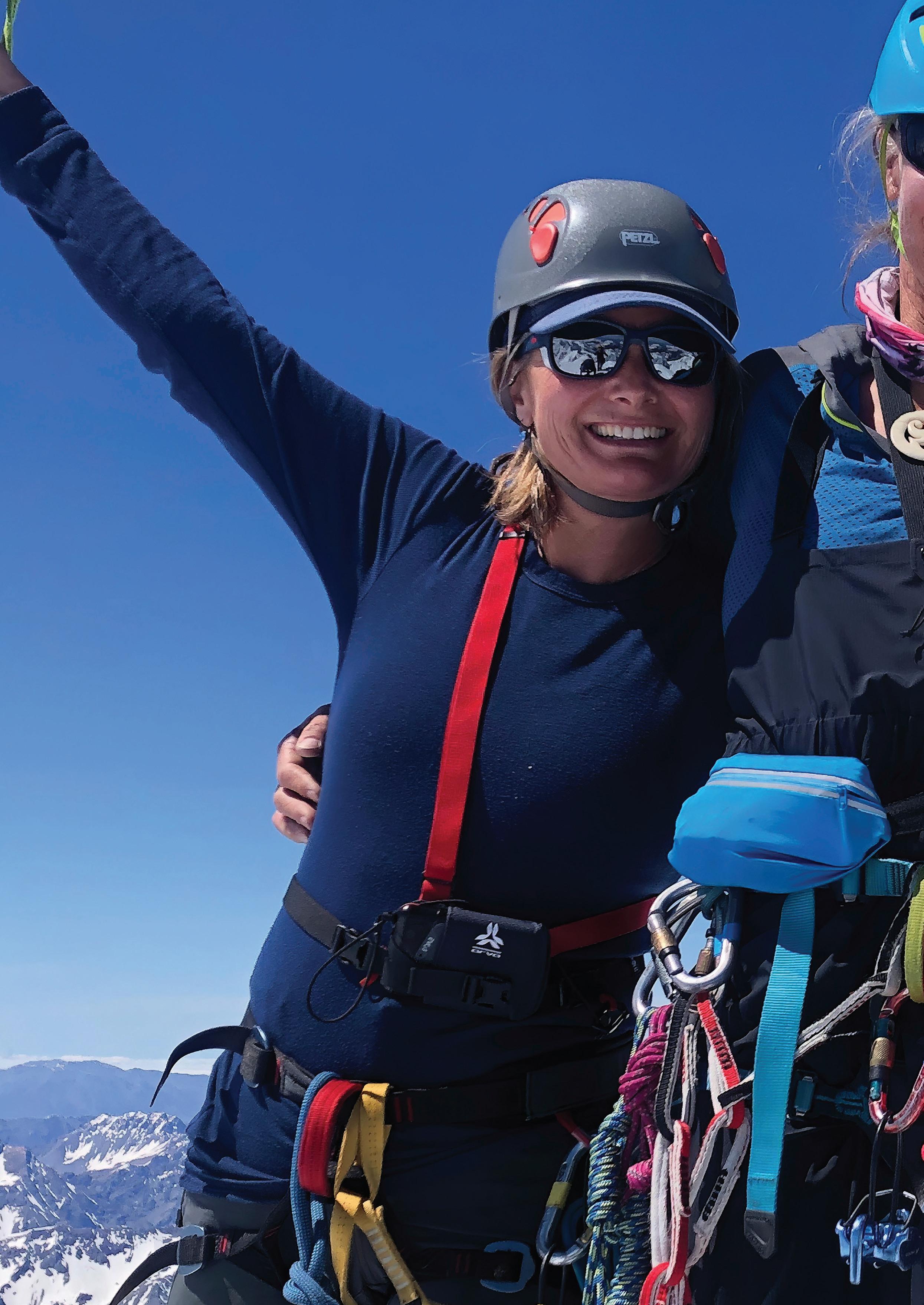
TO READ THE FULL STORY, SCAN THE QR CODE.

WIDE SKY WINTER 2023 42
When travelling south past Lake Pukaki most people stop and get their photo taken, especially if the weather is clear and Aoraki/Mt Cook is visible. A few of us might think about climbing the mountain one day. Very few of us would ever do it.
On one of those days whilst in her early 20s, Genevieve took her own photo and resolved to climb Aoraki/Mt Cook. Twentyfive years later in 2021, after travelling, partnering up, having children, and just generally dealing with life, she did it.
Genevieve was not entirely new to the adventuring business. She and her husband were instructors at Outward Bound for many years, and when her eldest daughter was two years old the family travelled home to New Zealand from England in their 10-metre yacht. But that’s a story for another day.
RROGA Board Representative Charlotte Gray caught up with Genevieve to ask about the climb in between her sessions as a counsellor at Nelson College for Girls. What inspired you to climb Aoraki/Mt Cook?


My friend Wendy and I talked about wanting to do it over the years. When our children became older, we felt like we were ready to do it. It is cool to have a goal to work towards.
Did you use guides?
We used guides. My mountaineering skills were rusty, and the guides have access to the latest information on possible dangers. They set the route to avoid crevasses or other obstacles to ensure a safe path. They know where the ice bridges are. Did you have to do any specialised mountaineering training?
I had to complete a seven-day ice climbing course to undertake the climb. We had to practise crevasse rescue training
and become at ease using ice axes and crampons.
How did you get fit for the climb?
I used to go on crazy 20-hour solo hiking missions. I had been told the climb to the top would take 18 hours, so to get fit. I would take off from home at 4am into the Richmond Ranges or Kahurangi mountains with a 16 kg backpack on. Oh my gosh the blisters!
Wendy and I also spent a bit of time at Rainbow Ski Area, picking a slope and climbing it.
Were there any scary moments up there?
I became very cold just before the sun came out when we set off at 1am. I didn’t bother putting extra clothes on because I thought I would heat up fast, but the sun came up much more slowly than I anticipated. It was steep and hard, and I had to move fast to keep warm. I managed to get through by remembering what my friend had told me before she passed away the year before. She had asked Wendy and I to take her ashes up the mountain with us and scatter them at the top. She told me that if we did this, then when the going got tough, she would “lighten my load”. I honestly felt like a rope had been attached to me and I was being lifted up.
When you got to the top, what theme song was playing in your head?
It was U2’s “Beautiful Day”. We got to the top at about 11am and it was clear, sunny, beautiful, spiritual and magic. Only U2 would do for that moment.
One last question . . .
Advice for young women today who want to “climb every mountain?”
Work hard to make your dreams a reality, good things take time, it’s never too late! To read the full story, scan the QR code.
ALUMNAE WIDE SKY WINTER 2023 43
Summit of Aoraki/ Mt Cook, 2021, Genevieve Lasenby (left) and Wendy van den Berg (right).
SALLY HICKLING 1988–1992

Since leaving school: Became a doctor, got married, had two girls who both attend RRGS currently!
Greatest achievement to date: Cycling self-supported from Cape Reinga to Bluff on the National Cycleway.
Favourite memory from school: I was head of Young Farmers Club and organised a Young Farmer of the Year competition which was a lot of fun. We also beat the boys at stock judging.
Words of advice for today’s students: Cherish your time at school, work hard and be kind to your parents! Think about what makes you happy and try to pursue a career related to that.
LIZ FAIRGRAY 1975–1979
Since leaving school: I trained as a Speech Language Therapist at the University of Canterbury, where I also studied for my BA in English. After working in Auckland for five years, I went to San Francisco and earned my Master’s degree in Speech Pathology & Audiology. I married my American husband David Krofcheck in 1991 and we returned to Auckland in 1995 shortly prior to the birth of our son Alex. Our daughter Natasha was born in 1998. We are fortunate that they both live in New Zealand and have lovely partners. For the past fifteen years I have lectured and provided clinical education in the Master of Speech Language Therapy at the University of Auckland and feel very privileged to be play a part in the development of the next generation of speech language therapists.
CHERIE KNEEBONE 1988–1993

Since leaving school: Became a primary school teacher, got married, had five children.
Greatest achievement to date: My five beautiful, kind and caring children and being happily married for 24 years.
Favourite memory from school: Friends, teachers, and the school centennial.
Words of advice for today’s students: Try not to stress about the small stuff, always try your best and love your life.
Greatest achievement to date: Becoming the first New Zealand Certified Auditory Verbal Therapist, my Master of Science in Speech Pathology and Audiology and being invited to become the Founding Therapist of The Hearing House, which was established to develop spoken language in preschoolers with profound hearing loss.

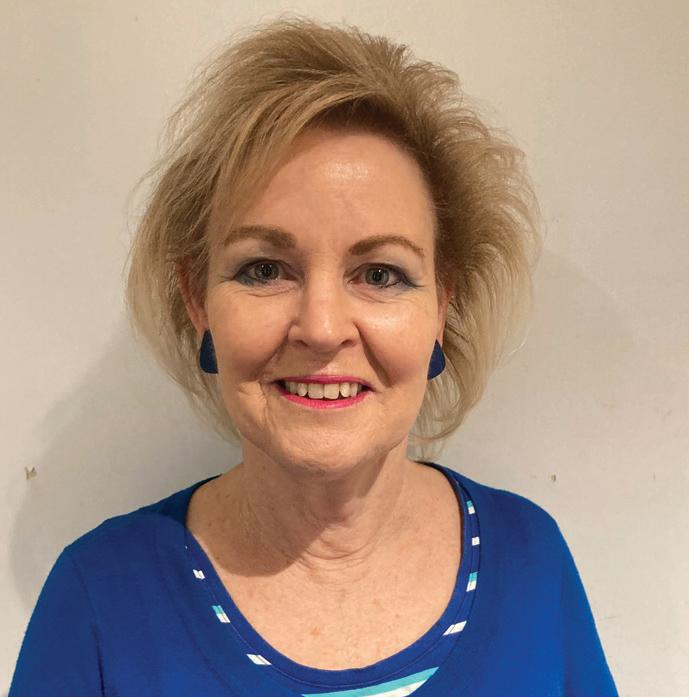
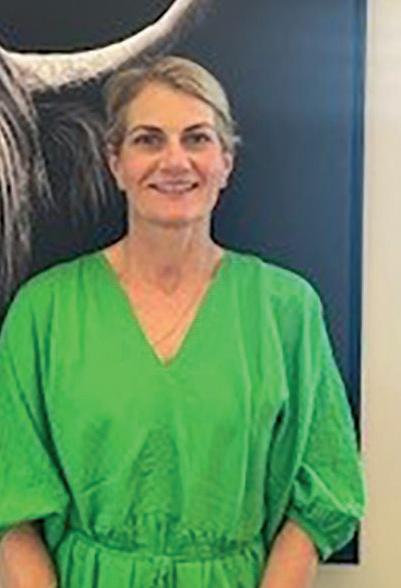

Favourite memory from school: Five years in the Chorale, led by the skilled and dedicated Miss Drummond and the combined Rangi Ruru – St Andrew’s choir conducted by Mr Cooke.
ADRIENNE BARNETT (NÉE MCDOUGALL) 1963–1966
Since leaving school: Primary school teacher. Married in 1971. Had three
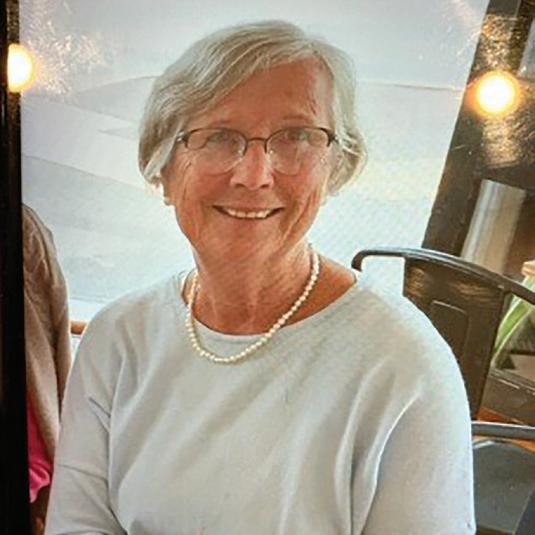
children and have eight grandchildren. Eldest grandchild is boarding at Rangi Ruru now.
Greatest achievement to date: Watching my family grow and watching their families grow.
Favourite memory from school: Making good friends and learning good values.
TRACEY GORDON (NÉE BUNTING) 1987–1991
Since leaving school: Firstly studied then travelled. Worked as a graphic designer and been a mum to three children who are now young adults.
Greatest achievement to date: Owning my own design business for 20 years to give me flexibility to be a mum and work. Recently I have taught myself web design development. My favourite project I have designed and built is craigieburn.co.nz.
Favourite memory from school: Lifesaving and water polo. Dressing up in Clan colours on sports days and having heaps of laughs.
Words of advice for today’s students: Try everything.
Keep reading to hear what other alumnae have been up to since leaving the hallowed grounds of Rangi Ruru.
SallyHickling
Cherie Kneebone
LizFairgray AdrienneBarnett
WIDE SKY WINTER 2023 44
TraceyGordon
GLENYS GILLANDERS (NÉE JOHNSTON) 1965–1968
Since leaving school: One year of secretarial studies at Christchurch Polytechnic then three years as a secretary at a legal office. Then OE working as a secretary in London and Brighton. Married with two children. Correspondence study to be a librarian and have been Council Services Officer at Selwyn Libraries for 20 years.
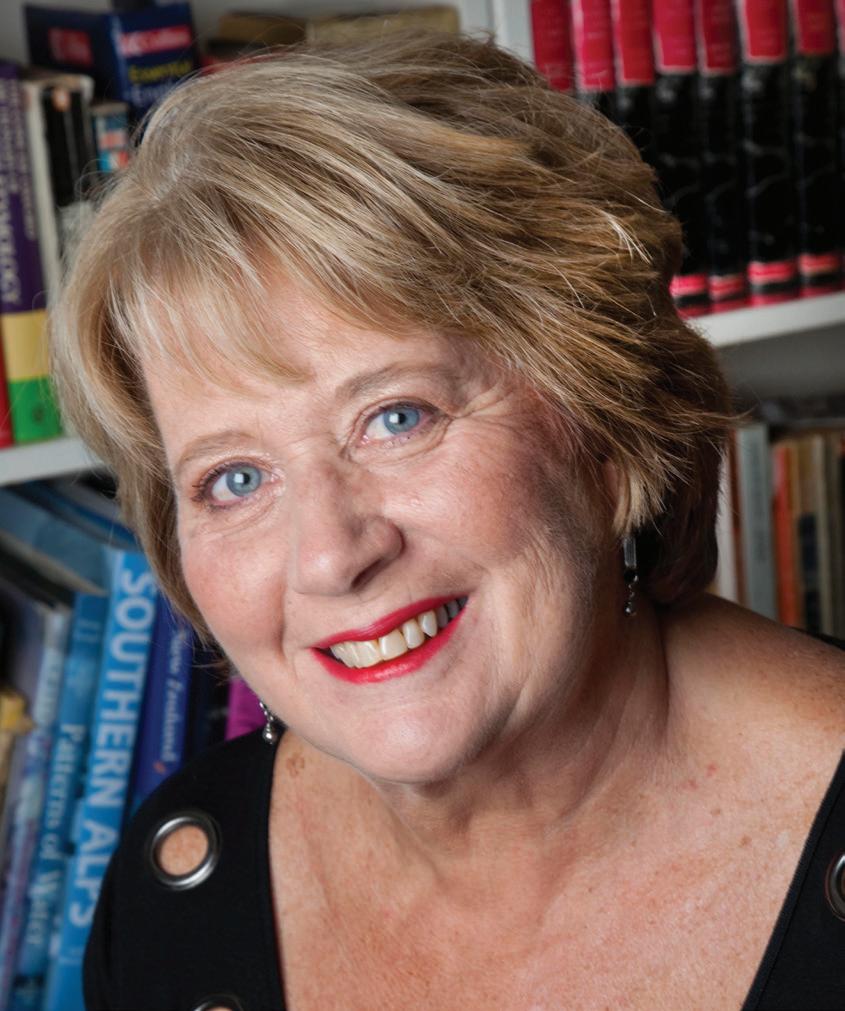
Greatest achievement to date: Enjoying and participating in every club or cause I belong to, volunteering which led to my job as a librarian and guiding my children to become outgoing adults.
Favourite memory from school: Clan activities cheering on Glamis at the athletic and swimming sports.
Also singing the school hymn!
Words of advice for today’s students: Volunteer for anything – you never know where it may lead.
JANE MAXWELL (NÈE NICHOLS) 1963–1968
GlenysGillanders

OLIVIA REID (NÉE GLAUSIUSS) 1990–1994

Since leaving school: Got a BA at Canterbury University and completed a commercial photography certificate. Travelled extensively in Europe and spent time in the USA. Got a personal training qualification and yoga teaching diploma. Married, now with two pre-teenage children. Built a house. Moved towns –lived in Hanmer Springs for eight years. Returned to Christchurch. Working on my Pulse Health and Wellness business.
Greatest achievement to date: So many things: giving birth to two beautiful healthy children, designing and building a house and creating Honour Festival – a one day health and wellness festival – all on my own! Successfully!
Favourite memory from school: My friends, forming the bonds of a lifetime.
Since leaving school: Became a primary school teacher in Cheviot. Married a local farmer.

Greatest achievement to date: Earlier on it was representing New Zealand at an international guiding conference in Canada in 1970. Leading a team to fundraise and build an ambulance station resulting to a visit to Government House.
Favourite memory from school: The fellowship of the other girls. I always enjoyed the music as we moved in Clan lines to the daily morning service. It seemed to set the tone for the day.
Words of advice for today’s students: Follow your passions. Perseverance usually has its rewards.
Greatest Achievement to date: Becoming a mother and becoming a partner at SRB and continually learning and developing my leadership skills through work.
Favourite memory from school: Creating friendships that I still have today. I have held those friendships for almost 30 years now and netball competitions.
Words of advice for today’s students: Try and engage with as many new things/ activities/people at school because there are so many opportunities that are easily available at Rangi Ruru. Determination and grit will get you further than just talent.
FELICITY PRICE 1961–1964

Since leaving school: A journalist for several years, ran my own Christchurchbased (and award-winning!) PR and communications consultancy, now contracting as an advisor to the Ministry for the Environment. Chaired the CSO, Book Festival, Court Theatre and Arts Centre (including building a new Court Theatre in nine months in 2011 and restoring almost all the Arts Centre postearthquake).
Greatest achievement to date: My two wonderful adult children Amelia (an Old Girl) and James. Oh, and getting an ONZM for services to business and the arts.
Favourite memory from school: Sports and athletics – you’d never know it now!
Words of advice for today’s students: Make the most of every day and every opportunity because you never know what life is going to throw at you. And that includes making the most of school. I still wish I’d paid more attention (let’s say I was a late developer)!
FelicityPrice
JANNA ROBINSON 1994–2000
Since leaving school: Completed a LLB and a BA at Canterbury University, travelled through the UK, Europe and East & West Coast of US, including helping my dad take my grandfather back to Crete where he was captured in WWII, practiced law in Hawkes Bay and London, became a partner at Saunders Robinson Brown (SRB), became Head of Property at SRB, got married and stepped back when I had my first child and now manage a smaller team within property with second child on the way.
Olivia Reid
JaneMaxwell
JannaRobinson
WIDE SKY WINTER 2023 45
ALUMNAE
THAT BIND US TOGETHER traditions
Whilst there have been many societal changes over the last 100 years, the fundamentals of boarding have remained the same; to provide a safe nurturing environment to care for our students whilst they’re living away from home, and ultimately to equip them with a wide range of life skills they can take into the world.
When I hear stories from Old Girls, reminiscing over their years living in Te Koraha, there are many parallels with our current boarders; the daily routines of living communally sharing a bedroom, waiting for a shower to be free, chores and rosters. The most heartening parallel being the depth and breadth of lasting friendships formed as a Rangi Ruru boarder. However, some experiences have changed significantly, mostly due to the development of technology. Darning socks and helping clean the stables were common tasks, and weekends at home were limited for the early Rangi Ruru boarders. One of the most important and popular tasks was writing letters home and waiting with much anticipation for a response, and if lucky a care package from home with fresh baking or preserves. Today our boarders have the luxury of being able to communicate with loved ones 24/7 thanks to technology. Gone
are the days of having to wait in line to use the house phone for a collect call home and hoping when it was your turn, that it would not be engaged. However, the ‘mail table’ still holds a very important place in the boarding house for every boarder today – each checking it as they walk past with their afternoon tea hoping for a parcel or two!
Through the years many events have been created either by students or staff for the boarders to enjoy. Some are now popular traditions including: Retreat Weekend, LOVE Dinner, The Boarders Concert, Year 11 Formal Dinner, Easter Egg Hunt, Christmas Celebration Dinner, and our Christmas ‘Giving Tree’.
Frances Barnett initiated and fostered The Boarders Concert and the Year 11 Formal Dinner during the two decades she spent as a boarding house staff member 1993–2017. I asked Frances to share her favourite memories.
 Words by Kyleigh Lyth DIRECTOR OF BOARDING
Words by Kyleigh Lyth DIRECTOR OF BOARDING
WIDE SKY WINTER 2023 46
“Five years into retirement and I recall vividly the joyful day in 1993 when I was appointed to my role as Matron/ Nurse/ Receptionist in the boarding house. I was the mother of five with a background in nursing, a Presbyterian, and had some knowledge of the school’s history. I had a vision. I wanted to be the person who would love the girls even when they had forgotten how to love themselves, who would make them feel safe and secure when they were so far from home, who would always hear what they had to say and listen out for what they didn’t say. I would support them as they wrote their own stories of their happy days at boarding school.
I was working at Rangi Ruru when the move was made from Te Koraha to ‘Te Whare Aroha O Rangi Ruru’ in 2004. Imagine my joy to finally have everyone under the one roof, my own ‘surgery’, a day girls sick bay with running water and to the delight of the international students, a music room. With so much musical flair and talent in our midst, so many performing artists in the making, a concert had to happen. My son Simon could be compère and the proceeds could go to Cholmondeley Children’s Centre. Therein lay the beginning of our traditions, that bind us together, and link us to the past.


Three of my favourites remain, the Year 11 Formal Dinner which I began in 1996 at Grimsbys restaurant in Cranmer Square, the international students weekly meeting with their dean and of course the Annual Boarders Concert, which I enjoy every year. I remain enchanted even in retirement.”
Frances Barnett BOARDING HOUSE MANAGER 1993–2017
BOARDING
WIDE SKY WINTER 2023 47
THE IMPORTANCE OFcritical thinking
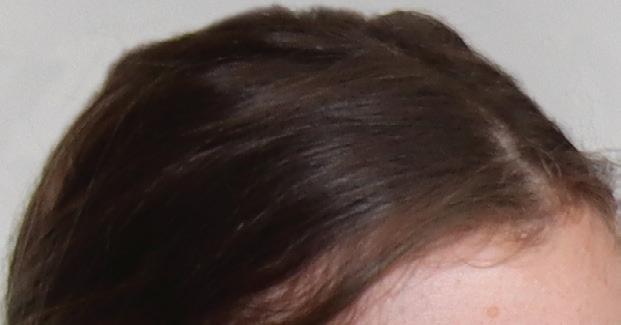
Over the years the way history has been taught at Rangi Ruru has changed significantly. From rote memorisation and dry recitation of dates and facts, history education has evolved to emphasise critical thinking, a diverse range of perspectives, the use of technology, and a revisionist view; to have learners understand the importance of past events and how they have shaped the world we live in today.

WIDE SKY WINTER 2023 48
One of the most significant changes has been the emphasis on critical thinking. Rather than memorising dates and facts, learners are encouraged to evaluate multiple sources, analyse historical events, and to develop their own informed opinions of the past. History is not there for us to like or dislike, and if it makes students feel uncomfortable, they may refrain from making the same mistakes that have happened in the past; all part of lifelong learning. The focus on critical thinking helps students to develop the skills they need to become active and engaged citizens, capable of evaluating competing claims and misinformation prevalent today.

Another significant change in history education has been the increasing emphasis on a diverse range of perspectives. Traditionally, history was
written by the victors, often the view of the white male. However, in recent years, there has been growing recognition of the importance of including the voices and experiences of marginalised groups, such as women, people of colour, various religions and LGBTQI+ individuals in historical narratives. This helps students to have a greater understanding and appreciation of how events of the past have and continue to shape the world we live in.

The increased use of technology has had a profound impact for our learners in history. No longer do we need to rely on textbooks, instead students have a range of digital tools, such as online archives, virtual tours of historical sites and databases which make history learning and research more accessible. History at Rangi Ruru no longer focuses only on events that happened on the
other side of the world, but now also incorporates the impact of major events within New Zealand. This allows our learners to understand significant aspects of New Zealand’s history and develop an understanding of how this can shape our future. Revisionist history has also helped encourage students to question traditional narratives and develop a more nuanced understanding of the past. ‘Those who do not learn history are doomed to repeat it’, is a quote by George Santayana that resonates with our department, and we are proud knowing our students are leaving our classes with the critical thinking needed to be successful in the modern world.
Words by Hayley Knight HEAD OF HISTORY AND CLASSICAL STUDIES
I enjoy studying history as everything is relevant to today’s society and the more I learn, the more I understand how aspects of modern society are formed. My opinions are constantly changing as I further develop my perception on wider world topics through history. Learning history allows me to appreciate how people fought to evolve the world and provide us the freedom and opportunities we have today.
“ Since taking history at Rangi Ruru for three years now, I have gained various skills that I am sure I will carry into my life, important skills that I could apply to any path I choose. Not only this, but I find it very fascinating learning about the rich history of New Zealand and the wider world.
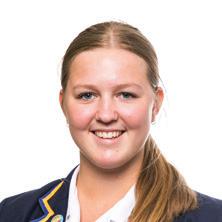

HISTORY
“ WIDE SKY WINTER 2023 49
Polly Cross Jessie Moffatt
something

IN THE WATER
My journey to becoming part of the Rangi Ruru whānau began as far back as the late eighties. I had no family connection to the school but two very dear family friends who are sisters, used to travel up the road from Ashburton to board here. At age 13 and 11, my sister and I imagined they were coming up to a super fancy school with lots of high-rollers and well-to-do families. The four of us still laugh about this perception.
How uncanny is it that one of these two sisters would end up introducing me to an alumna who would give me my first role in philanthropy. Subsequently, leading to me being contracted to work for Rangi Ruru in the Development team for a year. The other sister features on page 26 as she reminisces about her time as a boarder. She clearly loves this place, as she has been on staff for over 15 years.
My getting to know Rangi Ruru journey didn’t stop there though and on arriving at the University of Otago, I met some awesome women – driven, loyal, fun and Rangi Ruru alumnae who I consider very dear friends to this day. But I digress…


Whilst contracted to work here, I was sent along to a PTA meeting – I was to share information about upcoming community initiatives and the capital campaign which at that stage was on the distant horizon. I was a little apprehensive heading into the meeting and wondered if I would be greeted by women in twinsets and pearls, would I be welcomed having ‘no’ true connection to the school. I needn’t have wasted my energy on these thoughts as when I arrived, I was made to feel right at home, warmly greeted by a bunch of amazing people, who were genuinely welcoming, kind and dedicated to the school. I don’t even know if there was a pearl in sight – I wasn’t looking. My contract role ended but when I left, I had already worked out this place was something special.
Fast forward to having a young daughter approaching high school years, and I knew our family needed to discover for ourselves what was in the water at Rangi Ruru.
WIDE SKY WINTER 2023 50
The rest as they say, is history. With said daughter now a Rangi Ruru alumna and thriving in her first year at university, and myself, a permanent staff member, the answer is simple. It’s the people. This place is like a warm hug enveloping you when you least think you need it, it’s like pulling on your comfiest sweatpants and snuggling in for an afternoon on the couch, it’s a feeling of community – like you belong to something.
The strength of this community is one of the reasons why our past two Giving Days have been such successes.







A community who understand its needs, feels like they can make a difference and genuinely want the best for the collected whole, is a community who can get things done. The opening of Atawhai last year was an illustration of just what can be achieved when we get behind something we truly believe in. The generosity of our community, past and present is the reason this school continues to develop and meet the evolving needs of today’s learners.
This year’s annual appeal is not about bricks and mortar, building new facilities nor developing the campus but it’s about our people. Each year we receive more applications for bursaries and scholarships than the school can offer. Bursaries support families who unexpectedly encounter hardship along their Rangi Ruru journey by providing hope and stability, helping students to remain at school to complete their education. Scholarships reduce the financial barrier of boarding or tuition fees, making the dream of a Rangi Ruru education a reality for others.
If Rangi Ruru holds a special place in your heart and you’d like others to know what it feels like to belong to our Rangi Ruru whānau, I ask you to give generously. You can truly make a difference and impact the lives of day and boarding students, now and in the future and the school is incredibly grateful for your support.

DEVELOPMENT
To give to the 2023 please go to www.charidy.com/rangiruru or scan the QR code
Words by Bridget Woodham HEAD OF DEVELOPMENT (2018–APRIL 2023)
WIDE SKY WINTER 2023 51
Bridget stepped down as Head of Development in April 2023 and is currently Communications Manager.
Annual Appeal
EXPLORING OUR
religious past
The Gibson sisters were loyal members of the Anglican Church, committed to the task of ‘training girls in Christian faith and character’. Early prospectuses stated, ‘Religious instruction is given throughout the school, and the necessity for moral and spiritual training is fully recognised’.
The Gibson family had a close connection with St Mary’s church in Merivale, and most of the boarders attended services there every Sunday. Although not exclusively Anglican, with a small number of boarders attending Knox Presbyterian Church, the vicars of St Mary’s church were members of the visiting staff, coming in to help Miss Gibson and other mistresses with the teaching of scripture, preparing students for confirmation and regularly conducting special services.
Because the Gibson family’s link with their parish church was so strong, the life of the school was closely bound with it. Rosemary Britten, author of Rangi Ruru (c1988) wrote “Sunday brought church at St Mary’s for most girls, marching smartly in croc, uniforms pressed, hats and shoes inspected, clean gloves with the collection threepence tucked into the palm.” Such was the connection with St Mary’s that the Old Girls’ Association raised funds for the pulpit for the new church in memory of Mrs Gibson, and in 1948 a window given by the staff and pupils 1889–1946, was dedicated in memory of Helen Gibson.
In 1946 the tie with the Anglican Church was exchanged for an even closer affiliation with the Presbyterian Church and with the change of ownership of the school, the focus of religious observance moved from St Mary’s to Knox Presbyterian Church, with Knox ministers acting as the school’s chaplain. Members were appointed to the Board by the Presbytery of Christchurch, and principals were required to be communicant members of the Presbyterian Church. This was amended in 1968 to allow for principals to be members in good standing of other denominations. In 1970 Rangiruru Presbyterian Girls’ School became Rangi Ruru Girls’ School. It continued its association with the Presbyterian Church and members of its Board of Governors continued to be appointed by the Christchurch Presbytery.
While the Board appointed women of faith as principals it was the long-serving Mrs Patrick (1951–1969) who had the most impact on the Christian character of the school in this period. She introduced regular Harvest Festivals, and other service initiatives, invited missionaries and other Christian workers to speak, and encouraged church attendance and membership. It was in her time that the school motto was adopted, ‘Seek those things which are above’ (Colossians 3:1) taken from the memorial window to Helen Gibson, and translated into te reo Māori as ‘Whaia to te Rangi’
The long-held dream of a chapel on site was partly realised when the Wilson Hall was opened in 1966 with a sanctuary at the east end. It wasn’t until 1987 that this dream was fully realised with the relocation of St Andrew’s Presbyterian Church from its original site at the Hagley Park hospital corner to the grounds of Rangi Ruru.
Rangi Ruru began a new partnership with St Andrew’s and severed the long ties with Knox, but the relationship between the parish and the school required work, and the original ideals proved to be challenging in a changing society. The school eventually appointed its own chaplain and and in June 2017 Rangi Ruru took over ownership of the building.

There have been significant cultural shifts over the past forty years and Rangi Ruru has developed what have become known as the Rangi Values to reflect where it stands and to guide staff and students in their relationships with one another, and the world around them.
Rangi Ruru remains committed to thoughtful faith and spiritual development, religious tolerance, and freedom of expression, and seeks to develop a love of learning and virtue and a dedication to community service and humanitarian action.
Words by Johnann Williams RANGI RURU ARCHIVIST

WIDE SKY WINTER 2023 52
A FAITHFUL COMMITMENT TO CHARACTER:
“

FAITH
It wasn’t until 1987 that this dream was fully realised with the relocation of St Andrew’s Presbyterian Church from its original site at the Hagley Park hospital corner to the grounds of Rangi Ruru. WIDE SKY WINTER 2023 53
“
Through the years at Rangi Ruru there have been many great teachers of drama and dance who have supported and challenged the students to produce their best.

WIDE SKY WINTER 2023 54
Cast of the 2023 Senior production of Translations.
RAISING THE
curtain
As we look back on the last 100 years at Hewitts Road, the whakataukī - Kia whakatōmuri te haere whakamua perfectly encompasses what we do in Theatre Arts at Rangi Ruru. Translated as I walk backwards into the future with my eyes fixed on the past, this illustrates the way we honour and continue the work of those who have gone before us.

This pertains not only to the great teachers who have taught here, but also former students who continue a relationship with the Theatre Arts Faculty, our current ākonga, and the great practitioners of dance and drama whose work continues to influence us.
Through the years at Rangi Ruru there have been many great teachers of drama and dance who have supported and challenged the students to produce their best. These staff members are often honoured with cups presented to students for exceptional performance or service, and even have rooms at the school named after them.
Two former teachers who have cups honouring them are Julie Hopkirk, drama teacher from 1977–1981, who in her retirement wrote the revue ‘Rhodes to Rangi’ to mark the Centennial of Te Koraha in 1984. Hannah Clarkson, who was a student at Rangi Ruru before training and working internationally, then returning to teach dance and drama from 2004 to 2020, also has a performing arts cup named in her honour. The Fitzgerald Dance Studio in our performing arts centre, opened in June 2015, is named after Kerri Fitzgerald, on staff from 1988 to 2003 and currently teaching students at Medbury School. These staff are just a few who leave a passionate legacy for passing on their knowledge, inspiring and challenging our ākonga to be their best.
We are also fortunate to have past students and current practitioners working
with current ākonga. Makayla Barrett, Head of Dance in 2021, is working with the school’s current Rimu company on one of their pieces for DanceNZmade Festival.
Eden Cotter Longworth was a stalwart of stage management on many productions while a student at Rangi Ruru, and has gone on to complete a Fine Arts Degree in Production at the Victorian College of the Arts in Melbourne. In 2022 Eden took on a role as Deputy Company Manager for the company producing the musical Hamilton in Melbourne. Eden has reached out to mentor current senior Rangi Ruru students interested in production management and crew work by giving them the opportunity to work alongside those backstage while Hamilton is in Tāmaki Makaurau in June. While ākonga at Rangi Ruru, both Makayla and Eden dealt with the pressure of change. For Eden the change was the post-quake environment where the number of performance venues was severely reduced. For Makayla, it was the difficulties of gathering to rehearse, perform and bring audiences in to perform during the worst parts of the Covid-19 pandemic. Their tenacity and willingness to adapt to change inspires us as they, as teachers and mentors themselves, walk backwards into the future with us.
Words by Peter Rutherford DIRECTOR OF THEATRE ARTS

THEATRE ARTS
WIDE SKY WINTER 2023 55
UP AND DOWN the stairs
RROGA past president
Felicity Williams visited Gibson Girl Pam Steele (née Belcher) 1939–1947, at her home in Christchurch.

Pam started Rangi Ruru in 1939 when she was eight years old, and Miss Ethel Gibson was Headmistress. She was also taught by Miss Ruth Gibson for mathematics and Miss Winifred Gibson, who was her swimming teacher. No allowance was made for placing girls in compatible year groups, and that often made for quite a challenging time in the classroom. However, this didn’t seem to matter out on the sports field and Pam always enjoyed being out there or helping Miss Gray, the Sports Mistress. Pam excelled in sport and achieved games colours in tennis, netball and drill (exercises, stretching and jumping over the wooden horse).
Pam’s mother Lesley Hargreaves attended Rangi Ruru from 1919 at the Webb Street house, shifting to Te Koraha in 1923. She remembers her mother telling her that Captain Gibson (the father of the Gibson sisters), shifted the desks across to Te Koraha in the back of his truck while the pupils walked along the Merivale Lane footpath carrying their chairs. Later, her mother became President of the Old Girls’ Association and served two terms, the second term using her considerable skills to steer the school and RROGA through the 75th anniversary celebrations.
Before Rangi Ruru Pam attended Miss Watts’ private kindergarten on Jacksons Road. She was there for two years before starting at Rangi Ruru, where she would remain a student until she was seventeen. Although a day girl, Pam experienced one year as a boarder, which she thought was wonderful. She had always wanted to be one and fondly remembers feeling terribly proud when as a boarder she was asked to ring the bells at St Mary’s Merivale during Holy Week.
 Pam in boarder’s uniform ready for church, which she attended three times a day in 1947
Pam in boarder’s uniform ready for church, which she attended three times a day in 1947
WIDE SKY WINTER 2023 56
She also recalls that in Te Koraha the girls were not allowed to use the main staircase, except the night before the first day of term, when with their fathers lugging up the heavy trunks into the girls’ dorms. One morning Pam was rostered to do her piano practice at 5.30am in practice room five and was going down the main staircase. She thought no one would be around at that hour, but who should she see at the bottom of the stairs but Miss Gray, the Sports Mistress who also lived in the house.



“Where do you think you’re going?”
Pam explained “to do my piano practice.”
“No, you’re not,” she said, “return upstairs and come down the back staircase.”
So that’s what Pam did. Staircase or no staircase, and much to her mother’s surprise, she passed Grade 5 with distinction!
Pam’s lasting impression of Rangi Ruru was the importance of discipline and routine. They were brought up to be ladies and to do things properly, including the correct way to write letters, and there were so many different types of letters!
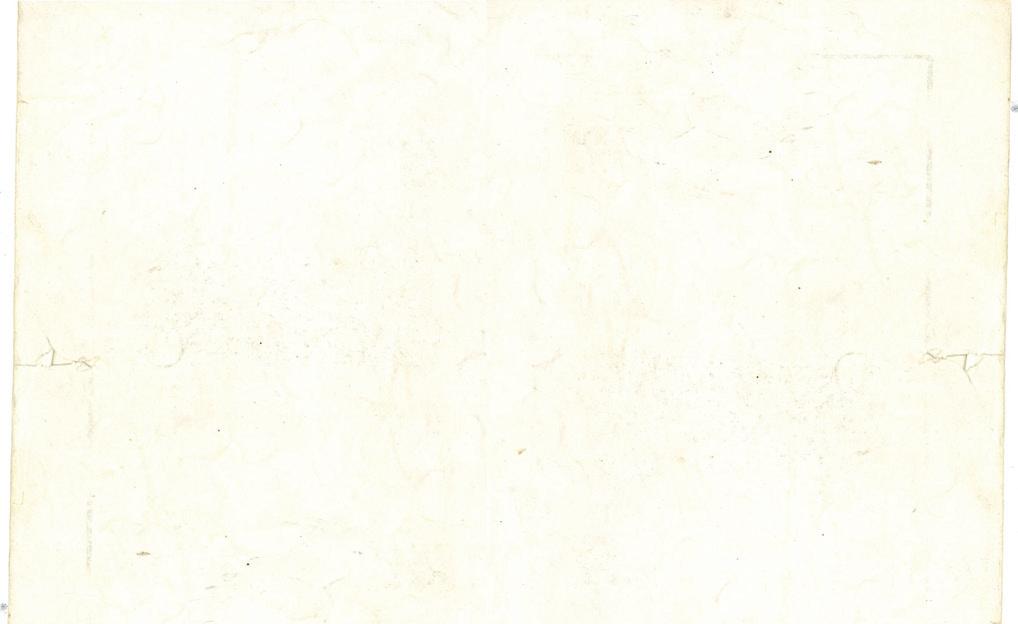
Pam’s connection with Rangi Ruru continued long after leaving the school gates. Her four daughters all attended Rangi Ruru as have several of her ten grandchildren, and who knows, perhaps some of her 18 great grandchildren will also get to enjoy the Rangi Ruru experience one day.
When asked what the secret to longevity is:
“Discipline and routine every day. I go for a daily walk. I read, I choose my own books and I do all the crosswords. I’m a fanatic about crosswords. I do all my own cooking, and I knit for a children’s charity.”
1948 Debutant
ALUMNA
Pam in the A Netball team. Back Row: A. Hill, J. Allan, B. Beadel, B. Cuddon Front Row: P. Belcher, D. Powell (Captain), F. Godfrey
WIDE SKY WINTER 2023 57
GIBSON GIRL: Any student who attended Rangi Ruru from 1889 through to Term 2 1946 is affectionately referred to as a Gibson Girl.
RROGA PHILANTHROPY REPORT
The Committee of the Rangi Ruru Old Girls’ Association (RROGA) has always been a strong advocate of supporting the school, its students, and alumnae in the most generous way it can.
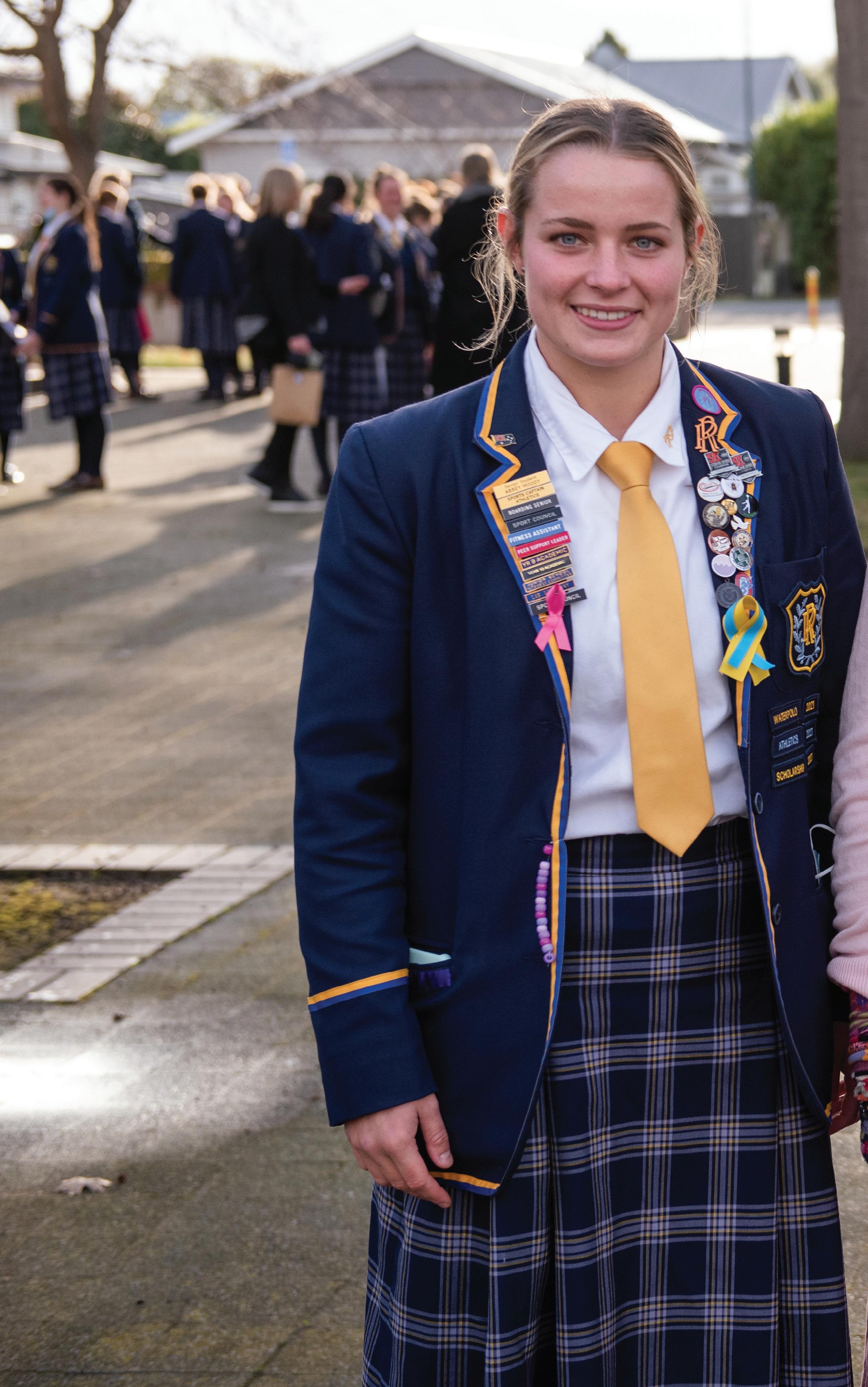
For the last 99 years, the RROGA committee has made prudent and wise investments to build and maintain a capital base which enables RROGA to grant a variety of scholarships, bursaries, exhibitions, and donations to recipients both in the school and community.
GIFTS FOR THE YEAR
ENDED 31 MARCH 2023
End of year prizes: $2,083
Years 7 & 8 Old Girls’ Scholarships: $8,695
Gibson Webb Exhibitions: $2,250
COMMITTEE MEMBERS
Patron: Joanna Dodgshun
(née Kitson) Class of 1968
President: Amanda Dick Class of 1988
Accountant: Charlotte Bryden
Aleisha Chadderton (née Waller) Class of 2000
Charlotte Gray (née Bashford) Class of 1987
Felicity Williams (née Walker) Class of 1968
Abby Thomas-Hiddleston Class of 2001
Helen Tait Class of 1960
Steph Withell (née Brown) Class of 1975
Rebecca Cresswell (née Smith) Class of 1995
Robyn Cartwright (née Good) Class of 1969
Janet McGiven Class of 1978
Elizabeth Wright (née Sharpe) Class of 1966
Rebekah Thomas-Hiddleston Class of 2003
Mandy Brazier (née Dowling) Class of 1968
Jendy Judd (Class of 1981)
THE GIBSON WEBB exhibitions 2022
On 20 June 2022, three Gibson/Webb exhibitions were awarded at the Awards Ceremony in the school chapel. The recipients were Abbey Moody, Lily Pringle, and Millie Trusttum.
The Gibson/Webb Exhibitions are named after the Gibson sisters who founded Rangi Ruru, and Betty Webb, a past President and Patron of the Old Girls’ Association. These are awarded each year by the RROGA to direct descendants of Old Girls in their senior year at Rangi Ruru who show outstanding endeavour and citizenship. RROGA past president Felicity Williams chatted to these recipients in
2022 about what they are doing right now, and what their futures might hold. Tell me about your hopes for the future, as well as your current interests and passions.
MILLIE: Music is the leading and dominating factor of my interests and my life. In the future, I am hoping to study a Bachelor of Music with a focus on classical
 Left to right: Abbey Moody, Felicity Williams and Millie Trusttum – inset Lily Pringle
Left to right: Abbey Moody, Felicity Williams and Millie Trusttum – inset Lily Pringle
WIDE SKY WINTER 2023 58
LilyPringle
creative practice. A dream and goal of mine would be to work with the New Zealand Opera again, and to make a career out of my voice. I would love to travel overseas for this – I will have to wait and see where it could take me.
ABBEY: I chose to move to Rangi Ruru because of the opportunities for my sporting passions – water polo and athletics (javelin and discus). After school, I intend to continue my athletics in the United States at university where I also hope to study veterinary science.
LILY: One of my passions is playing hockey and I am excited to continue to play in Dunedin in 2023. I am looking forward to going to Dunedin next year to study law. Now that the borders are open, I hope to travel sometime too.
What do you enjoy about Rangi Ruru?
ABBEY: I absolutely love the whole atmosphere at Rangi Ruru, coming into a new school in Year 12 I thought it was going to be quite hard, but everyone was so kind, and I quickly felt very comfortable.

MILLIE: The thing that I love the most about Rangi Ruru is the people. I have met so many wonderful friends and teachers who have become key figures in my life.
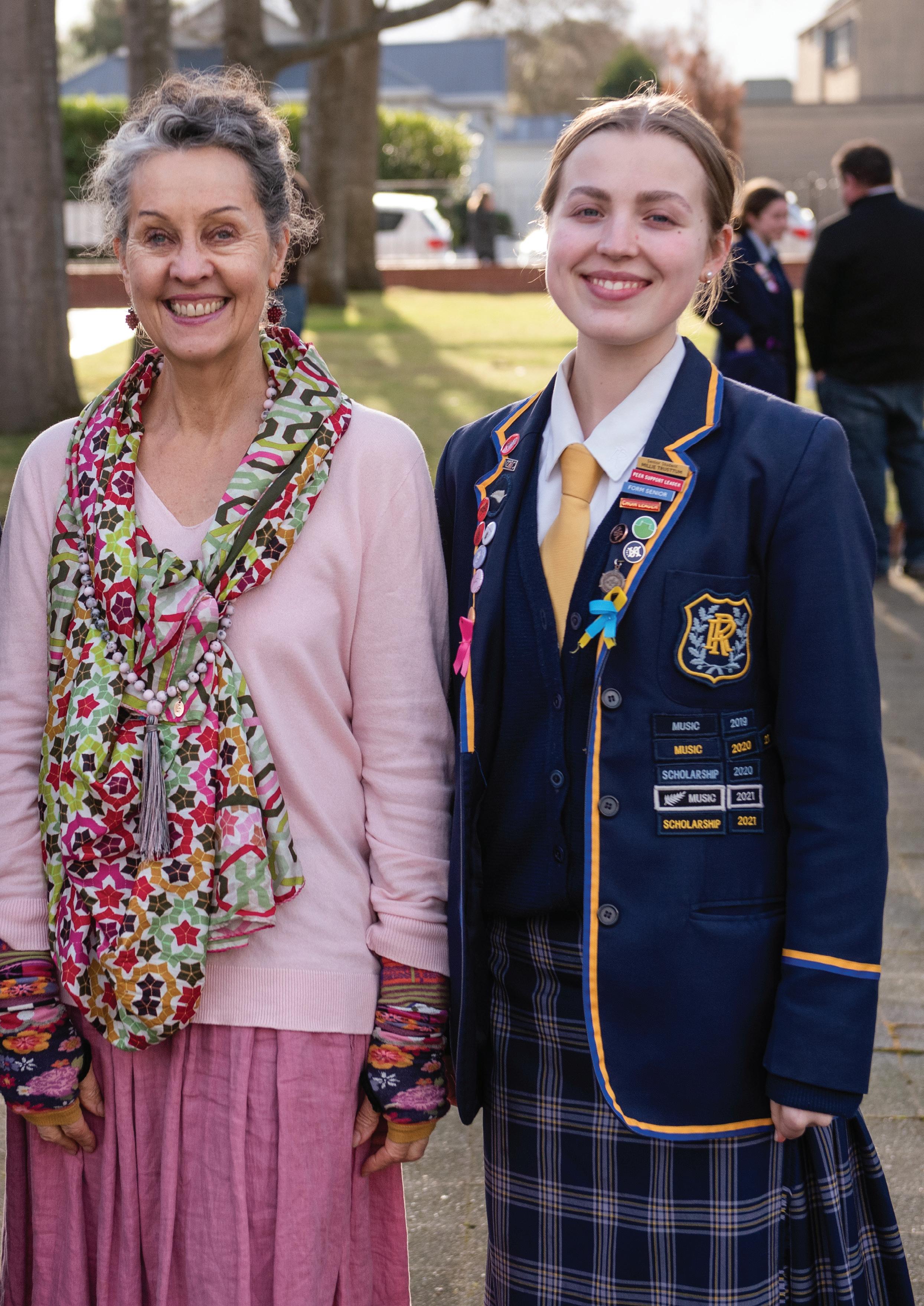
LILY: I really enjoy the sisterhood focus we have at Rangi Ruru.
Scan here to read the full interview.
YEAR 7/8 SCHOLARSHIP: AWARDED TO FOR 2023
Felicity Williams chats to Eve Malone about life.
FELICITY: What was your reaction when you first found out you had been awarded a scholarship to Rangi Ruru?
EVE: We were about to go out the door to go to school and then we got the phone call from the principal saying that I’ve been awarded
Eve Malone
the scholarship, and I was very shocked and my mum burst into happy tears.
FELICITY: What do you enjoy studying at Rangi Ruru?
EVE: I enjoy maths because it gets my brain thinking, and I like social studies.
FELICITY: What’s the last book you’ve read?
EVE: I’m reading the book Reminders of Him by Colleen Hoover. It’s intriguing and exciting.
RROGA
WIDE SKY WINTER 2023 59
EveMalone
WHAT DOES THE
future
LOOK LIKE?
We asked our current students….

1. What a school day will look like in the future?
2. What subjects students will be studying?
3. Why it’s important Rangi Ruru exists in the future? and here’s what they had to say…
1. Some classes are completely independent and online, with teachers from out of school.
2. More computer and technology-based subjects like computer science etc.

3. The strong community spirit and connection at Rangi Ruru will be ever so important in the future when we start to rely more and more on technology communication.
1. In 100 years or so I think that everyone will be learning way more history because of the pandemic and the wars currently being waged. I also think that we will have more effective ways of teaching and maybe that’ll mean that the school periods will be shorter. The technology will undoubtedly be way more advanced which means that learning will be different.
2. I think that there still will be the basic ones like maths and English. And maybe more classes around technology and how to use it and understand it.
3. Because of its legacies, and because it is an important piece of history for many people.
Nicole RiddYear9
BridgetPyeYear13 WIDE SKY WINTER 2023 60
1. In the future, I think schools will have more spaces to be creative and students will control more aspects of their learning and it will be more high tech.
2. I think in the future students will be studying subjects such as computer/AI coding, innovation subjects, and classes that focus on how to live after graduation.
3. Education is important no matter what year it is because knowledge is powerful.
1. Pretty similar to a current school day. Maybe more technology used but keeping the learning in person is important.
2. Robotics, maths, social studies (especially to keep in touch with the past and current world), and history.
3. Because it is an outstanding school that offers girls outstanding opportunities and sets them up for a great future.
ViolettaDacre
Year 10

1. People going to classes mostly on laptops and work and studying more science and technology-based stuff.
2. More technology-based subjects like how we communicate through technology and engineering and building more things like engineering robots
3. Because they can focus on girls and they have a great education for all children and can really focus on each child.
1. I think a school day will be a vision of community and sense of belonging. Everyday girls empowering girls, striving to do their very best. School will be similar to how it is now, but maybe more new advanced technology will be in NZ’s curriculum.
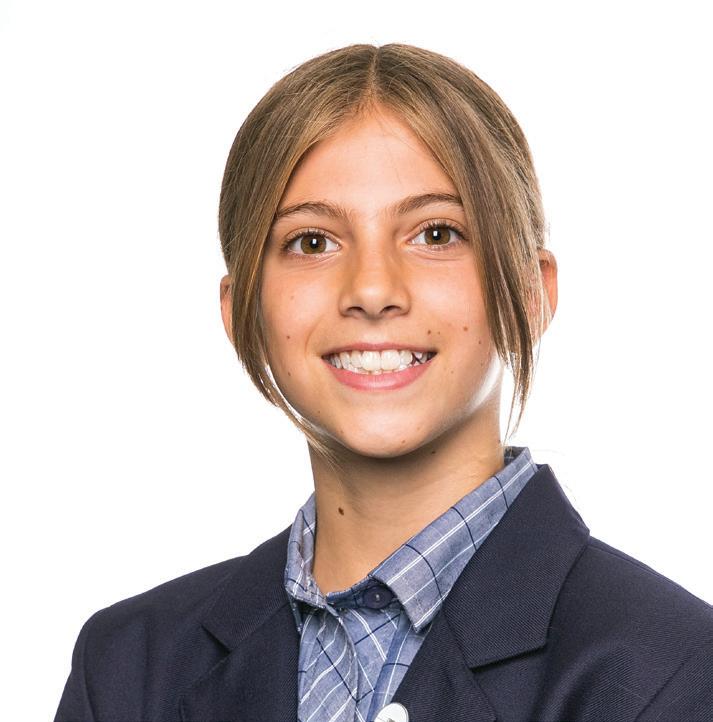

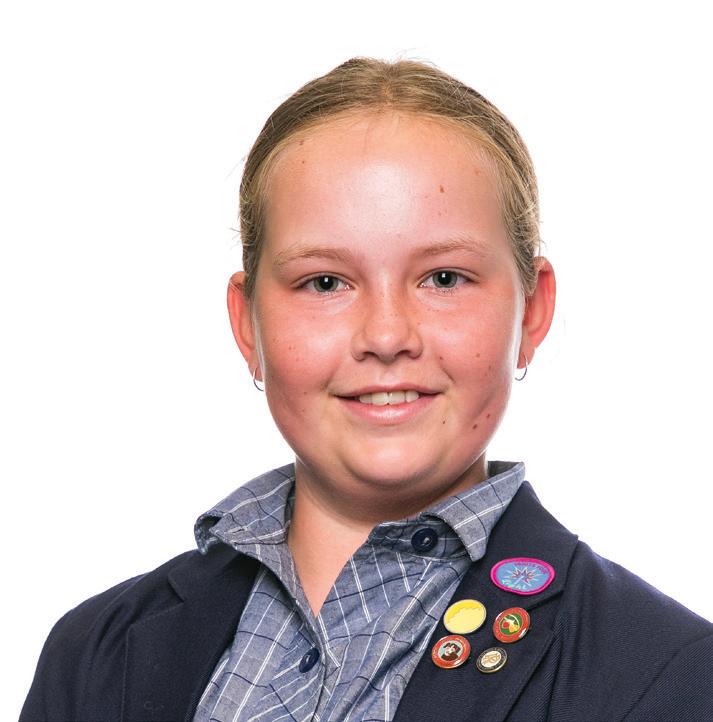
2. I am not sure, but I think there will be more AI and computerised thinking involved with teaching. I think students will have new subjects that may personalise their skills to a deeper level.
3. Rangi Ruru is an incredible school providing girls with a first-class education. Giving girls a place to belong and develop their best self. Rangi Ruru is creating a positive impact for generations of girls which is setting up an incredible group of female leaders to make our communities and world a better place.
Year 7
Mati oomer Year 8 STUDENT VOICE
C a r o l i n e
M
ddison
Conaghan-Carr Year11
a
Crozier
WIDE SKY WINTER 2023 61
HONOURING A CENTURY OF SCHOOL EXCELLENCEmagazine
“This little magazine is a new venture and one which we hope will meet with some success: for although the school has lived for so many years, as yet no record of its doings has been kept. The aim of this paper is chiefly to keep up the interest in school matters amongst both the present and the past girls – it is also hoped that it may encourage literary art, and who knows what it might not bring forth?”


These are the words of Ethel Gibson, editor of Volume 1 of the school magazine published in 1923. During the busy last term at the Webb Street property, she enlisted the help of Ethel Cocks and Frances Thorpe to initiate a school magazine. By July 1923, the inaugural volume of the magazine came to fruition, all twelve pages of it. Contained within the pages were updates on school happenings, news of Old Girls, notifications about tennis, hockey and swimming and a collection of poetic contributions from the girls. The first edition cost 1 shilling 6 pence and initially was printed biannually. However, after a brief period, it transitioned into an annual publication. When reading it, it is easy to get lost in the innocence of the times and delight in the difference in linguistic expressions conveyed. Here are some excerpts from the Boarders’ Notes:
‘On Saturday, August 12th Mr. Bean, with his usual kind-heartedness, took us all to the Gardens for afternoon tea in the Kiosk.’
‘On the evening of Thursday, August 9th we were taken to the Grand Picture Theatre to see Robin Hood, which gave us a good idea of early English life and customs.’
And ‘On the last Saturday of the term the Misses Neave invited us all for the afternoon. We picked violets and primroses and played games in their beautiful garden.’
Norah Helmore is a strong player but does not put sufficient trust in the rest of the team.
Jean MacDonald is a useful inner, and plays with her head, but she is inclined to be slow.
Ethel Le Cren is a hardworking forward but is rather inaccurate and inclined to muddle.
Alice Hewlitt, the captain of the team, has found her place, and makes an energetic centre half. Her hitting is strong and fairly accurate.
This is a stark contrast to the overly direct and sometimes discourteous hockey player profiles displayed further in the magazine, noted above. Hopefully the players weren’t too offended by the blunt nature of the commentary. Interestingly, the magazine also notes that students were given an annual half-holiday for the Christ’s College v. High School football match, something that would not be supported today. Over time, the magazine underwent transformational changes, both in its dimensions and content. Student drawings were incorporated to bring pages to life, and as technology progressed, black and white photographs would also be included. The introduction of colour occurred in 1987, further enhancing the magazine’s appeal.
Although in 1960, the Old Girls’ Association made the decision to publish their own newsletter, gradually displacing the Old Girls’ coverage that had previously been allocated space in the school magazine, it is wonderful to be united once again in the centennial celebrations of the inaugural magazine. Today the school magazine is produced in-house by our Community Relations team and contributed to by many of our teaching and support staff, as well as students and community members.
Words by Bridget Woodham EDITOR & COMMUNICATIONS MANAGER

WIDE SKY WINTER 2023 62
One hundred years since the first Rangi Ruru magazine


THE FIRST MAGAZINE
WIDE SKY WINTER 2023 63
WELCOME TO THE 2023 OF OLD GIRLS daughters
Illustrated in the outer circle on these pages, are the daughters, granddaughters, great granddaughters, and great great granddaughters of alumnae who commenced their education at Rangi Ruru in 2023.

Miranda Helen Paterson (Elliot) 1976 Lucinda Kate Elliott Paterson 2003 Sylvia Cruickshank Janice Edith Mary Moffatt (Hartnell) 1956 Georgia Kelso Sally Mary Ruby Kelso (Moffatt) 1984 Chloe King Gendy Davis (Bradford) 1990 Lucy Davis Jocelyn Mary Gilchrist (Breen) 1967 Jane Elizabeth Gilchrist (King) 1994 Phoebe Hore Annette Gordon King (Holmes) 1946 Edith Meyer (Pritchard) 1919 Ruby Taylor Robina Kingsbury (Meyer) 1962 Sarah Juliet Hurring (Lynn) 1985 Zoe Hurring Susan Marshall Mansbridge (Rutherford) 1967 Alice Murphy Elizabeth (Betty) Edith Meares (Barrett) 1934 Gretal Meares Beverley Anne Hastie (Sail) 1954 Mila Hastie Claire Taylor (Webb) 1923 Lynne Frost (Early) 1964 Sophie Frost Robyn Frost (Bain) 1992 Amy Vincent (Chaplin) 1992 Arabella Vincent Hannah Mary Macfarlane (Dew) 1989 Augusta Macfarlane Charlotte Robyn Malone (Walker) 1987 Eve Malone Isla Taylor
Vicki Jane Elsom 1974 Ephelia Paxie Jocelyn Syme (Rennie) 1959 Charlotte Syme Alice Mary Sheild (McRae) 1991 Shona Mary McRae (Macfarlane) 1931 Dimity Sheild Kimberly Barnett (Cook) 1997 India Barnett
WIDE SKY WINTER 2023 64
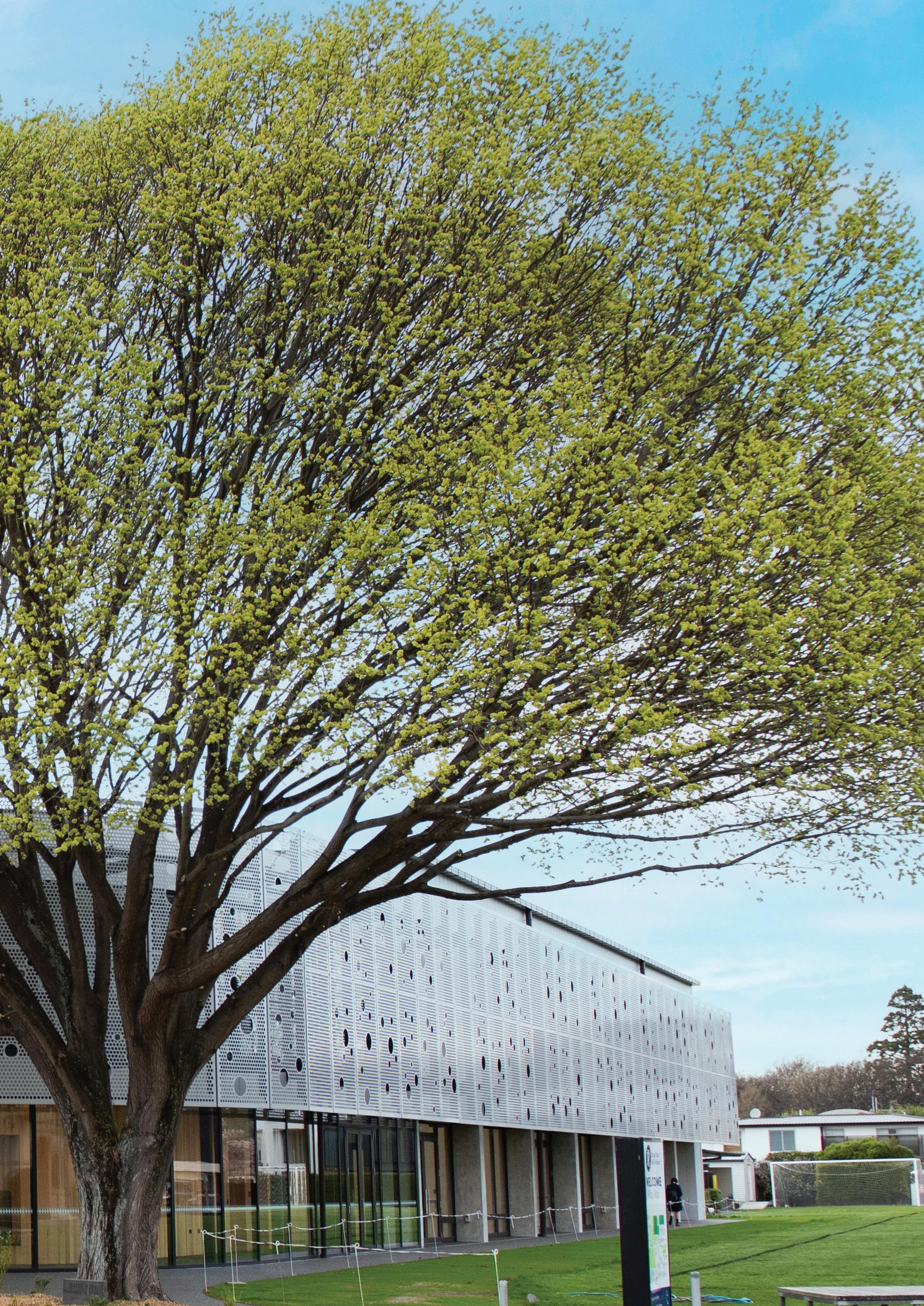
Rubina Gwendoline Chapman (Curlett) 1902 Prudence Mary Eleanor Urlwin (Weir) 1967 Pamela Lee Weir (Chapman) 1932 Alexia J Chisholm (Urlwin) 1991 Molly Chisholm Wilmot Hiatt (MacBeth) 1927 Lucinda Mary Savill (Hiatt) 1963 Francesa Ann Botherway (Savill) 1984 Lucy Botherway Josephine Laura de Latour (Knight) 1938 Frances Alix de Latour (Milne) 1964 Harriet Louise de Latour 1991 Scarlett Chapman Nicola J Bennett (Steventon) 1990 Lily Bennett Olivia Joanne Butcher (Vallance) 1994 Briar Butcher Summer Anderson Janet Isobel Sharp (Bishell) 1956 Lucy Gibson Founding Family Penny Mary Shaw (Sharp) 1982 Maddison Crozier Patricia Stewart (Wright) 1931 Mary Kathleen Mason (Conway) 1964 Annabel Mary Crozier (McPhail) 1996 Rachel Okey (James) 1990 Jasmine Okey Biddy Colleen Smith (MacDougall) 1933 Janine Margaret Johnson (Smith) 1963 Alice Johnson Elizabeth Ann Bedford (Woods) 1961 Mary Mouat Woods (Donald) 1934 Charlotte Weir Betty Salmond 1912 Isabella Whalan Elizabeth Drennan (Johns) 1990 Aimee Drennan Marilyn Wendy Weir (Sim) 1953 Penny Kate France (Morrow) 1995 Sylvie France Nicola Jane Whyte (Kinzett) 1990 Phoebe Whyte Marjory Ann Willis (Free) 1955 Zoe Willis Belinda (Bin) Kennedy (Bruerton) 1986 Rose Kennedy Sally Foote (Davis) 1964 Mia Tucker Penelope Mehrtens (Latz) 1992 Olivia Mehrtens Great Great Grandmother Great Grandmother Grandmother Mother Emma Jean Mulcock (Rutherford) 1989 Joannah Mulcock Madison Young Anna Louise Young (Brown) 1990 Robyn Cartwright (Good) 1969 Mary Good (Rollason) 1942 Georgina Wallis (Cartwright) 1997 Amelia Wallis FAMILY CONNECTIONS WIDE SKY WINTER 2023 65
EMPOWERING GENERATIONS:
THE ENDURING LEGACY IN SHAPING IDENTITY family
Current Year 9 student Molly Chisholm is one of a small handful of fifth generation Rangi Ruru students. Editor Bridget Woodham invited her mother Alexia to share her family’s multigenerational legacy, and discovered along the way that the hopes and aspirations of each generation and the values and traditions stay true.
As a multigenerational legacy, what values or traditions have been passed down within your family through attending Rangi Ruru, and how have they shaped your family’s identity?
When speaking with my Aunt Pip (1954–1958) we both agreed that having the knowledge and confidence that women can do anything, definitely helped shape our family’s identity. Personally, I valued the academic knowledge, leading me to Medical School, but also the life skills. At school, the overarching message was, we could do or be anything we wanted, and I never doubted this.
Gwen was the second youngest of five girls and the first girl in her family to get a job, although it was against her father’s wishes. Pamela, although she died in her late 30s, was a very independent thinking woman for her time.
What is the significance of Rangi Ruru in your family’s history? Do you know what drew your ancestors to choose this school for their education, and what inspired later generations to follow suit?
We don’t know why the school was initially chosen. Phillipa, Susan and Prue were sent there because their parents were impressed with the school’s

connection with deciding
For myself, my first memory of Rangi Ruru is my first PE lesson. I failed (repeatedly) to hit the ball and was met with supportive cries and encouragement from the other girls. This was a stark contrast to the school I had come from, where sport was a humiliating disaster. I wanted my daughter to experience this ethos. Can you share a story or memorable anecdote from when Prudence, Rubina or Pamela were students here?
My mum (Prue) attended in the 1960s and she remembers biking with her best friend up Fendalton Road in third form (Year 9) wearing a garter belt with little metal clasps holding up their stockings and how the clasps used to clang along as they biked – noisy and uncomfortable. In the fourth form, the school allowed “witches britches” for the first time, and they wore these bike-pant type long shorts over the suspenders and felt so lucky – the bike rides were much better!
What do you hope Molly takes away with her when she leaves Rangi Ruru? I hope she leaves school with the same feeling I did; that she can be or do anything she imagines. I hope she has lasting friendships and happy memories and I hope she feels the supportive Rangi Ruru culture that was so striking to me when I started.
5th. Molly Chisholm Year 9
4th. Alexia Chisholm (née Urlwin) 1990–1995
3rd. Prudence Urlwin (née Weir) 1967–1971
2nd. Pamela Weir (née Chapman) 1932
1st. Rubina (known as Gwen) Chapman (née Curlett) 1902
FIVE GENERATIONS
WIDE SKY WINTER 2023 66
Prudence Urlwin, Molly Chisholm andAlexiaChisholm
that cares.

Discover the new level of luxury where instant power comes with low or zero tailpipe emissions. Volvo Recharge technology combines sustainable materials and innovative design to elevate your driving experience.

Experience Recharge plug-in technology in our XC60 and XC90 PHEV models. Offering a choice of pure electric, hybrid, or power mode, and giving you full control of your driving experience while reducing your carbon footprint.
For those seeking a quieter and more sustainable driving experience, our C40 and XC40 Recharge pure electric models are powered by a high-voltage battery and dual electric motors, delivering pure progress on the road ahead with zero tailpipe emissions and reduced noise levels at all speeds.
Compass Pools and Goom Landscapes

Both businesses have an aligned purpose of providing services and products of the highest quality. It made sense for Compass Pools and Goom Landscapes to work together, to create stunning outdoor spaces which families and friends will enjoy for years to come.

NOW is the perfect time to start planning your perfect haven for next summer. From design to completion, we will work together to ensure the entire project goes swimmingly!

team up to make a splash!
compasspoolschch.co.nz goom.nz Call or Email Tim to arrange a consultation - ph 027 221 2011 | tim@goom.nz
Tim Goom
YOURS
Luxury
VOLVO RECHARGE. ORDER
TODAY.
38 Tuam Street, Christchurch 03 377 5200 - Emma Schuyl www.archibalds.co.nz/rangiruru
a zero-emission
WIDE SKY WINTER 2023 67
Archibalds Volvo Cars. Proud to provide the Rangi Ruru 1st XI with
Volvo C40.
59 Hewitts Road, Christchurch 8014, New Zealand
p: +64 3 983 3700 e: office@rangiruru.school.nz
rangiruru.school.nz













 Words by Amanda Dick RROGA PRESIDENT
Words by Amanda Dick RROGA PRESIDENT

















 TE KORAHA
The Stables in the late 1920’s
Swimming Class 1938
TE KORAHA
The Stables in the late 1920’s
Swimming Class 1938






 Words by Tania Morgan HEAD OF COMMUNITY & GLOBAL CONNECTIONS
Words by Tania Morgan HEAD OF COMMUNITY & GLOBAL CONNECTIONS
























 Kareama Taepa, ‘Tiki 1.3’ 2022.
Volker Hawighorst, ‘Digital Weaving’ 2023.
Kareama Taepa, ‘Tiki 1.3’ 2022.
Volker Hawighorst, ‘Digital Weaving’ 2023.





 Words by Mandy Anderson DIRECTOR OF SPORT
Words by Mandy Anderson DIRECTOR OF SPORT















 Lyndsey Harrow in Class Photo 1951 fourth from left, top row
Lyndsey Harrow and her sister Alison Erikson
Lyndsey Harrow in Class Photo 1951 fourth from left, top row
Lyndsey Harrow and her sister Alison Erikson



 Rosemary by Miss Mason’s Flat 1949
Rosemary Page, Jeanette Goldwater and Suzanne Van Asch 1947
Rosemary by Miss Mason’s Flat 1949
Rosemary Page, Jeanette Goldwater and Suzanne Van Asch 1947


 Words by Janet Kingsbury DIRECTOR OF MUSIC
MUSIC
Words by Janet Kingsbury DIRECTOR OF MUSIC
MUSIC

































 Niece Rachael Thacker (Class of 1996) and Marise Thacker (Class of 1954)
Niece Rachael Thacker (Class of 1996) and Marise Thacker (Class of 1954)

































 Words by Kyleigh Lyth DIRECTOR OF BOARDING
Words by Kyleigh Lyth DIRECTOR OF BOARDING

























 Pam in boarder’s uniform ready for church, which she attended three times a day in 1947
Pam in boarder’s uniform ready for church, which she attended three times a day in 1947




 Left to right: Abbey Moody, Felicity Williams and Millie Trusttum – inset Lily Pringle
Left to right: Abbey Moody, Felicity Williams and Millie Trusttum – inset Lily Pringle




















